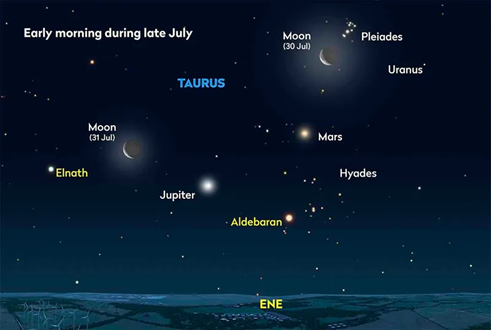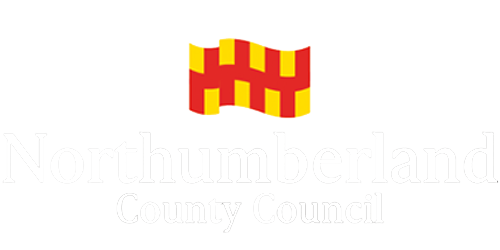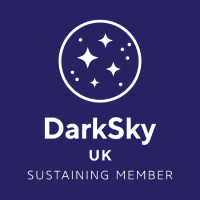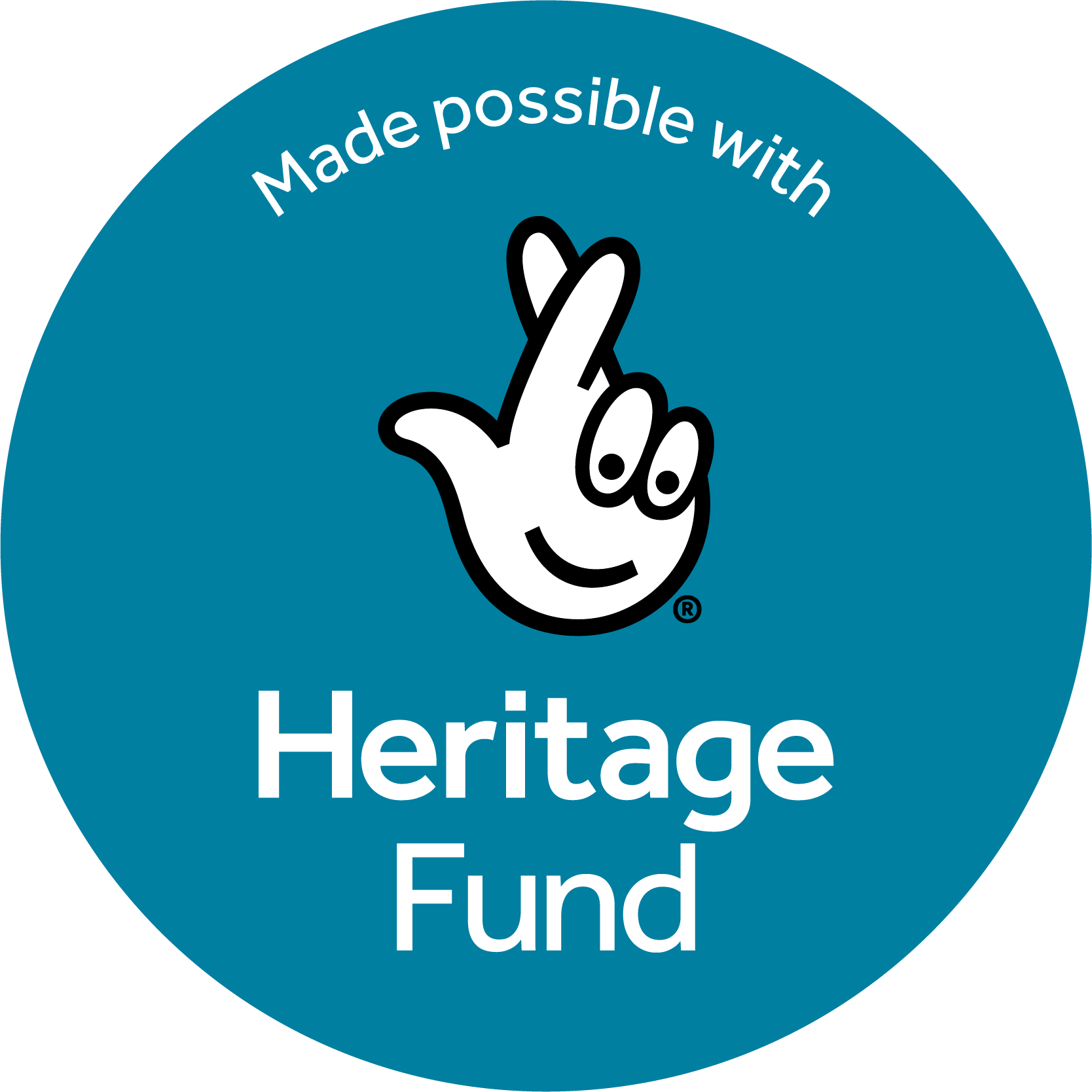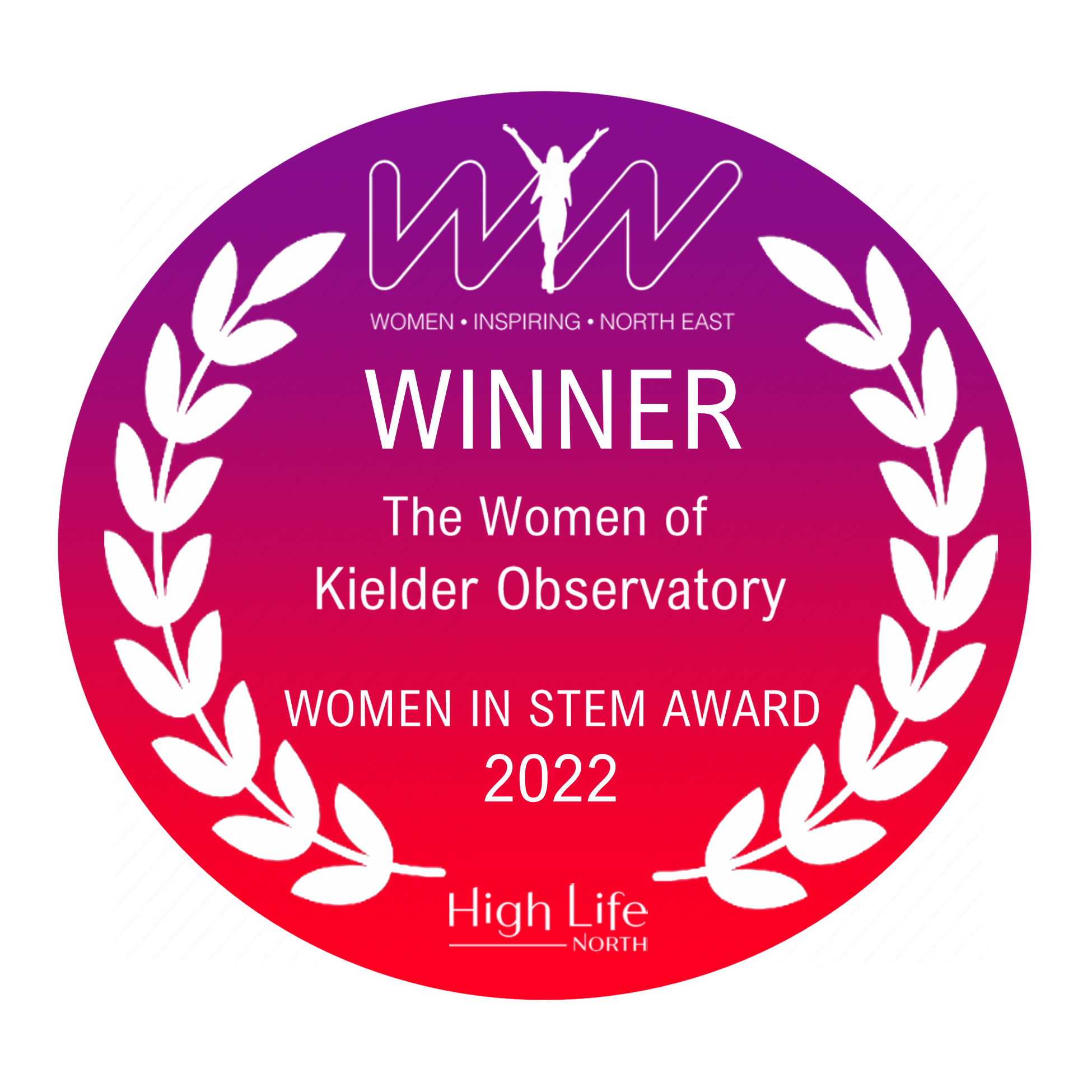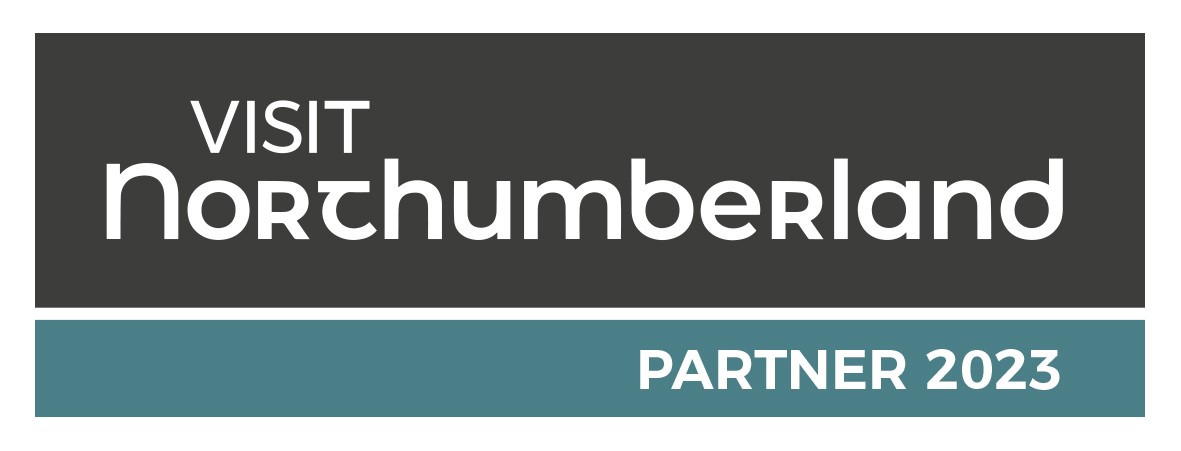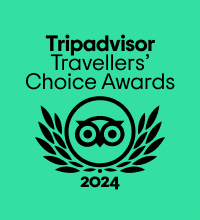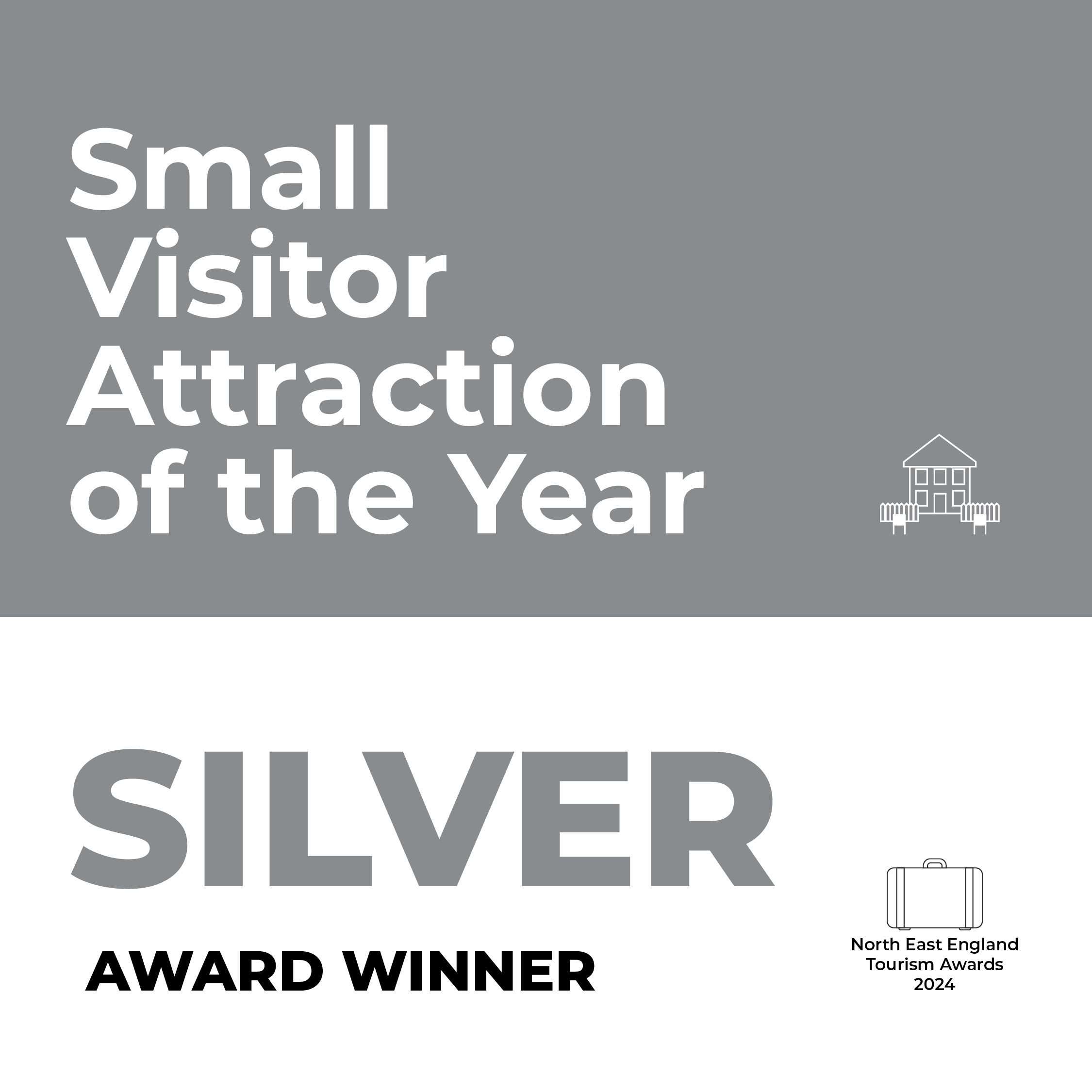- You are here:
-
Home

-
News

- Latest News
Lots of exciting things are happening at Kielder Observatory, use this page to browse the latest stories. We’ll have updates on the events we run, fantastic images our team have taken up at the observatory and occasionally science updates that our team would like to share!
We also release quarterly newsletters via email, sign up to our mailing list and view our archive of past newsletters here:

Sustainability in Space
Rosie Braunholtz follows her 'Why Space?' article with this dive into the world of space sustsainability.
Read Time
7 minutes
Rosie Braunholtz follows her 'Why Space?' article with this dive into the world of space sustsainability.
[fulltext] =>
Introduction
Last month, space organizations from around the world gathered in Milan for the 2024 International Astronautical Congress (IAC)!
That is great timing as our previous article, “Why Space?, recently covered the basics on the space industry. Today’s article delves into the pressing issue of Space Sustainability. What happens to the thousands of satellites we send up there once they’re no longer in use? And what about the silent, defunct rovers on Mars?
This year the IAC's theme is “Responsible Space for Sustainability,”, and these questions were at the forefront. Global leaders discussed how we can keep our goals for landing humans on the Moon and Mars insight, while thinking about future generations and keeping our home, the Earth, safe.
The Congress brought together over 11,000 attendees, including space agency representatives, people in industry, scientists, and students, all focused on advancing sustainable exploration. Here we discuss some of the highlights of the whole week.
Orbital Debris and Low-Earth Orbit Sustainability

Image: Space Debris around Earth. Credit: ESA
One of the biggest concerns in space sustainability is space debris. Space debris is essentially human-made waste left in orbit around Earth. It includes defunct satellites, left over bits of rockets, fragments from collisions, and discarded tools or parts from human missions. The reason there is so much is due to people not having any plan for what to do with their leftover “junk” after the mission has been completed. Many satellites in the past being launched with no thought for what to do when they reach the end of their operational life. Leaving many dead satellites roaming around Earth’s orbit indefinitely. There are currently 3,356 inactive satellites orbiting Earth, representing 12.4% of all satellites in space. Occasionally collisions can happen in orbit due to the clutter (satellites orbit at very high speeds), and explosions can occur due to remaining fuel in dead satellites.
Obviously satellites are very important for climate change, global communications, weather, navigation and much more. But even the “alive” satellites orbits are getting a little bit crowded. Active satellites are having to perform an increasing number of collision avoidance maneuvers to dodge other satellites and debris and avoid being smashed into smithereens. All of this is becoming an increasing worry. If we continue in this way, it will soon start to become unsafe to launch astronaut missions, and certain orbits for satellites will be unusable, due to such limited (ironically) space.
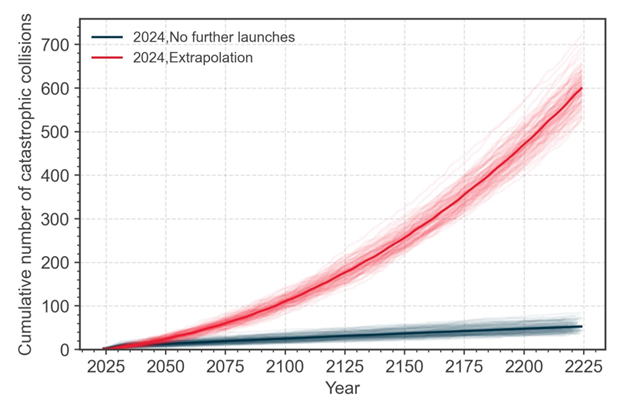 Image: The future number catastrophic collisions in Earth orbit, extrapolated based on a continuation of current behaviour and in the hypothetical event that there were no new launches as of 2024. Credit:ESA
Image: The future number catastrophic collisions in Earth orbit, extrapolated based on a continuation of current behaviour and in the hypothetical event that there were no new launches as of 2024. Credit:ESA
To address this, several agencies are setting new standards: for example, recent FCC regulations in the United States propose that dead satellites must de-orbit after five years post-mission. At the IAC, ESA and NASA shared plans for even stricter rules, as congestion in low-Earth orbit (LEO) has a huge risk to both current and future missions for both these space agencies.
A standout initiative at the IAC was ESA’s Zero Debris Charter, which aims to slow down the creation of new debris and advance technology which removes old debris. Many countries signed the initiative, from New Zealand to Mexico, and the Charter is quickly gaining traction. Over 100 organizations and 15 countries have endorsed this ambitious plan, and it marks a significant step toward a safer, more sustainable space environment.

Image: Signing of the Zero Debris Charter
Emerging Industry Solutions for Space Debris Management
While governments and big space agencies like ESA are working at a policy level, private companies are also trying to find solutions for managing the debris. Companies like Astroscale, ClearSpace, Northrop Grumman, and ALE Co. are actively developing technology to capture and remove space junk. Astroscale has made leaps in making technology that removes old satellites from orbit, while ClearSpace is under contract with ESA to remove specific debris. Northrop Grumman’s has developed a satellite service that extends the lifespan of satellites, reducing the need for replacements. Together, these companies are helping to build an industry around orbital maintenance and sustainability.

Image: Astroscale’s Space Debris removal. Astroscale has several missions designed to either extend a satellite’s life or safely remove the defunct satellite from orbit, by capturing it and then lowering it down into Earth’s atmosphere where it will safely burn up on re-entry.
Innovations in Sustainable Space Exploration
As well as sustainability around Earth’s orbit, there were lots of discussions about further exploration in space. Humans are trying to go to the Moon again, and soon. But the question is, how to do it ethically and sustainably?
The Artemis Accords are a set of international agreements led by NASA and supported by a few nations committed to sustainable lunar exploration. They layout rules for using resources responsibly, peaceful cooperation, and transparency. In their own words they are “Principles for a Safe, Peaceful, and Prosperous Future in Space”. Some key principles include assisting other nations in getting to space, responsibly managing debris, and sharing scientific data. The aim is to make sure humanity’s return to the Moon (and in the future, Mars) runs as smoothly as possible.
Both Japan and the UAE renewed their commitment at the 2024 IAC as well as others. This is significant as the Japanese space agency JAXA and the UAE are both planning for future lunar and asteroid exploration. Presentations from NASA, ESA, and other agencies also highlighted upcoming missions, space station projects, and interplanetary endeavors, all oriented around long-term sustainability.
The Artemis Accords hope to ensure that as humanity establishes a presence on the moon, activities are transparent and cooperative.
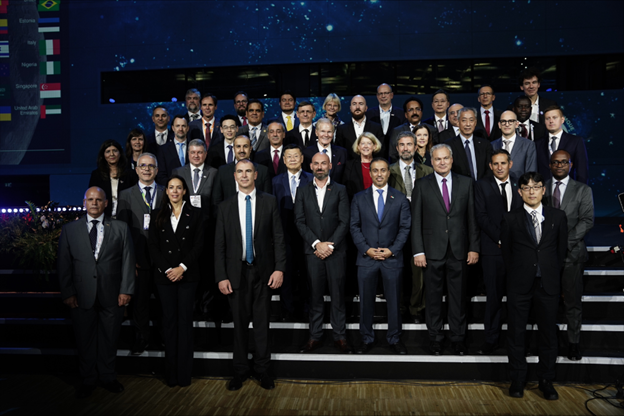
Image: Representatives of the Artemis Accords signatories, including NASA leadership, met Oct. 14, 2024, for a principals meeting in Milan, during the International Astronautical Congress. With 42 of 45 signatories participating in the event, established and emerging spacefaring nations from every region of the world were represented. Credit: UAE Space Agency
Public Engagement and Education on Space Sustainability
There were also many exhibits at the congress in Milan, featuring the many different ways the space industry helps us with climate change, by using satellites for Earth observation. Earth observation is extremely important for tackling climate change as stated in our previous article “Why Space?”, and having the public understand and supporting this is essential to sustainable space efforts.
One of the travelling exhibitions attending the congress was Space for Our Planet. This fantastic exhibit showcased testimonials from global experts—including climate scientists, artists, doctors, and astronauts—and highlighted how space technology benefits life on Earth.
The testimonials include audio interviews, images and text. In total 35 'agents of change' shared their experiences on how space is providing a solution to achieve the United Nations' 17 Sustainable Development Goals (SDGs). Through these exhibits, the public learns about the way space science helps and informs environmental management on Earth.
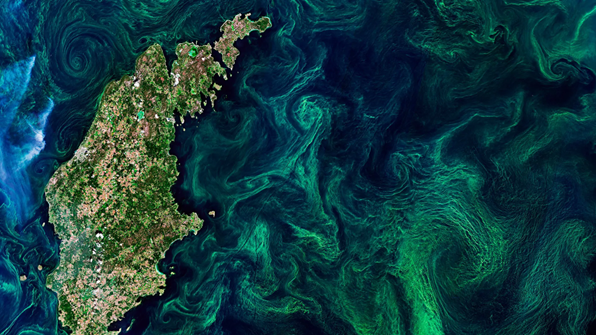
Image: Algal Bloom swirls, Baltic Sea, Copernicus Sentinel-2 mission, Plankton has a major influence on the amount of carbon in the atmosphere and are sensitive to environmental changes. Satellites are able to monitor them for future climate change models. Credit ESA
Conclusion
The 2024 IAC successfully brought together people from all around the world to address one of the most important issues facing space exploration today: sustainability! They addressed many different topics from changing important space policy to advancing debris-removal technologies, and lastly the conference highlighted how important working together on shared commitments is to achieving our sustainable goals.
Author: Rosie Braunholtz
[checked_out] => 0 [checked_out_time] => 0000-00-00 00:00:00 [catid] => 34 [created] => 2024-11-21 10:36:27 [created_by] => 52030 [created_by_alias] => [modified] => 2024-11-21 10:37:52 [modified_by] => 52030 [modified_by_name] => Hannah Matterson [publish_up] => 2024-11-21 10:36:27 [publish_down] => 0000-00-00 00:00:00 [images] => {"image_intro":"images\/Blog-Images\/IAC-4.png","float_intro":"","image_intro_alt":"","image_intro_caption":"","image_fulltext":"","float_fulltext":"","image_fulltext_alt":"","image_fulltext_caption":""} [urls] => {"urla":false,"urlatext":"","targeta":"","urlb":false,"urlbtext":"","targetb":"","urlc":false,"urlctext":"","targetc":""} [attribs] => {"show_title":"","link_titles":"","show_tags":"","show_intro":"","info_block_position":"","info_block_show_title":"","show_category":"","link_category":"","show_parent_category":"","link_parent_category":"","show_author":"","link_author":"","show_create_date":"","show_modify_date":"","show_publish_date":"","show_item_navigation":"","show_icons":"","show_print_icon":"","show_email_icon":"","show_vote":"","show_hits":"","show_noauth":"","urls_position":"","alternative_readmore":"","article_layout":"","show_publishing_options":"","show_article_options":"","show_urls_images_backend":"","show_urls_images_frontend":""} [metadata] => {"robots":"","author":"","rights":"","xreference":""} [metakey] => [metadesc] => [access] => 1 [hits] => 6472 [xreference] => [featured] => 0 [language] => * [readmore] => 13910 [state] => 1 [category_title] => Latest News [category_route] => uncategorised/latest-news [category_access] => 1 [category_alias] => latest-news [author] => Hannah Matterson [author_email] => hannah@kielderobservatory.org [parent_title] => ROOT [parent_id] => 1 [parent_route] => [parent_alias] => root [rating] => [rating_count] => [published] => 1 [parents_published] => 1 [alternative_readmore] => [layout] => [params] => Joomla\Registry\Registry Object ( [data:protected] => stdClass Object ( [article_layout] => _:default [show_title] => 1 [link_titles] => 0 [show_intro] => 1 [info_block_position] => 0 [info_block_show_title] => 0 [show_category] => 0 [link_category] => 0 [show_parent_category] => 0 [link_parent_category] => 0 [show_author] => 0 [link_author] => 0 [show_create_date] => 0 [show_modify_date] => 0 [show_publish_date] => 0 [show_item_navigation] => 0 [show_vote] => 0 [show_readmore] => 1 [show_readmore_title] => 0 [readmore_limit] => 100 [show_tags] => 0 [show_icons] => 0 [show_print_icon] => 0 [show_email_icon] => 0 [show_hits] => 0 [show_noauth] => 0 [urls_position] => 0 [show_publishing_options] => 1 [show_article_options] => 1 [save_history] => 1 [history_limit] => 10 [show_urls_images_frontend] => 0 [show_urls_images_backend] => 1 [targeta] => 0 [targetb] => 0 [targetc] => 0 [float_intro] => right [float_fulltext] => none [category_layout] => _:blog [show_category_heading_title_text] => 1 [show_category_title] => 0 [show_description] => 1 [show_description_image] => 0 [maxLevel] => 1 [show_empty_categories] => 0 [show_no_articles] => 1 [show_subcat_desc] => 1 [show_cat_num_articles] => 0 [show_cat_tags] => 1 [show_base_description] => 1 [maxLevelcat] => -1 [show_empty_categories_cat] => 0 [show_subcat_desc_cat] => 1 [show_cat_num_articles_cat] => 1 [num_leading_articles] => 0 [num_intro_articles] => 27 [num_columns] => 1 [num_links] => 4 [multi_column_order] => 0 [show_subcategory_content] => 0 [show_pagination_limit] => 1 [filter_field] => hide [show_headings] => 1 [list_show_date] => 0 [date_format] => [list_show_hits] => 1 [list_show_author] => 1 [orderby_pri] => order [orderby_sec] => rdate [order_date] => published [show_pagination] => 1 [show_pagination_results] => 1 [show_featured] => show [show_feed_link] => 1 [feed_summary] => 0 [feed_show_readmore] => 0 [show_page_heading] => 0 [layout_type] => blog [menu_text] => 1 [menu_show] => 0 [secure] => 0 [page_title] => Latest News [page_description] => Kielder Observatory Astronomical Society [page_rights] => [robots] => [access-view] => 1 ) [separator] => . ) [displayDate] => 2024-11-21 10:36:27 [slug] => 406:sustainability-in-space [parent_slug] => [catslug] => 34:latest-news [event] => stdClass Object ( [afterDisplayTitle] => [beforeDisplayContent] => [afterDisplayContent] => ) [text] =>
Rosie Braunholtz follows her 'Why Space?' article with this dive into the world of space sustsainability.
)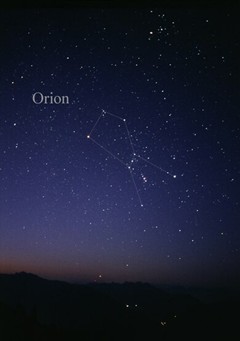
What's Up? November 2024
With the onset of Winter, the smell of fireworks in the air and with the clocks having gone back at the end of October, November offers us great dark skies. It is truly a brilliant time of year for stargazing.
Read Time
4 minutes
With the onset of Winter, the smell of fireworks in the air and with the clocks having gone back at the end of October, November offers us great dark skies. It is truly a brilliant time of year for stargazing.
[fulltext] =>
Constellations
As mentioned last month, Cassiopeia remains very close to the Zenith (the point directly above your head) but November sees the magnificent constellation of Orion viable in the east nearer the end of the month at around 9pm. This constellation is magnificent and a sure sign that Winter is on the way! There are many treasures to observe in or around Orion, one of which is the famous red super-giant star Beetlejuice (or Betelgeuse, and old Arabic word for “armpit”) which represents Orion’s left shoulder as seen from Earth.
 Image: The constellation of Orion will be rising in the east in November with the bright orange star visible as Orion’s left shoulder (as we look at it)
Image: The constellation of Orion will be rising in the east in November with the bright orange star visible as Orion’s left shoulder (as we look at it)
Credit: Wikipedia
Deep Sky Object
The Andromeda galaxy is very well positioned high in the sky during November. It is visible with the naked eye from a dark sky site and visible as a dim smudge. It’s the most distant object in the Universe that the unaided eye can see! It is approximately 2.5 billion light-years away (meaning the light you see has taken 2.5 billion years to get to your eye travelling at 186,000 miles per second!).
November is still a great time of year to see the Milky Way arching across the sky from roughly east to west. It’s amazing to see one of the spiral arms of our Galaxy with the unaided eye. It’s estimated that over half of the UK population have never seen the Milky Way so it’s definitely one to look out for!
 Image: The andromeda galaxy (highlighted) can be found by using the constellation of Cassiopeia as a “signpost”
Image: The andromeda galaxy (highlighted) can be found by using the constellation of Cassiopeia as a “signpost”
Credit: Stellarium software
Meteor Showers
November sees the return of 2 meteor showers.
The first of these is the Taurids which peak on the night of 12th – 13th November. These meteors originate from the Comet Encke and are not particularly frequent (around 5 an hour) but are known to move relatively slowly through the sky compared to other meteor showers.
The second shower is the Leonid meteor shower peaking on the night of the 18th November. Comet 55P/Tempel-Tuttle is the origin producing these bright, fast meteors with an average of around 10 an hour.
Unfortunately, this year sees both peaks blighted by the brightness of the Moon which is full on the 15th November.
Our Solar System
If you ask most astronomers what their favourite objects are to observe, the planets of Saturn & Jupiter are very likely to near the top of the list!
Jupiter is the brightest object in the sky this month, with the exception of the Moon, and continues to rise in the East throughout the month. Even with a small telescope or strong binoculars (7 x 50 minimum) you may be able to make out the 4 Galilean moons of Io, Europa, Ganymede and Callisto named after the famous Italian astronomer, physicist and engineer Galileo Galilei, who discovered them by using a homemade telescope in January 1610!
Saturn continues to impress in the south with its rings almost edge on. Despite the planet being about 865 million miles away and the rings being no more than 100 meters thick, you can see them through a small telescope which is always a beautiful sight.
Mars can also be seen low in the East after around 9pm from mid-November.
New Moon: 1st November
First Quarter: 9th November
Full Moon: 15th November
Last Quarter: 23rd November
Happy Stargazing!
[checked_out] => 0 [checked_out_time] => 0000-00-00 00:00:00 [catid] => 34 [created] => 2024-10-22 09:16:07 [created_by] => 52030 [created_by_alias] => [modified] => 2024-10-22 09:16:27 [modified_by] => 52030 [modified_by_name] => Hannah Matterson [publish_up] => 2024-10-22 09:16:07 [publish_down] => 0000-00-00 00:00:00 [images] => {"image_intro":"images\/whatsup\/WUN24-Orion.jpg","float_intro":"","image_intro_alt":"","image_intro_caption":"","image_fulltext":"","float_fulltext":"","image_fulltext_alt":"","image_fulltext_caption":""} [urls] => {"urla":false,"urlatext":"","targeta":"","urlb":false,"urlbtext":"","targetb":"","urlc":false,"urlctext":"","targetc":""} [attribs] => {"show_title":"","link_titles":"","show_tags":"","show_intro":"","info_block_position":"","info_block_show_title":"","show_category":"","link_category":"","show_parent_category":"","link_parent_category":"","show_author":"","link_author":"","show_create_date":"","show_modify_date":"","show_publish_date":"","show_item_navigation":"","show_icons":"","show_print_icon":"","show_email_icon":"","show_vote":"","show_hits":"","show_noauth":"","urls_position":"","alternative_readmore":"","article_layout":"","show_publishing_options":"","show_article_options":"","show_urls_images_backend":"","show_urls_images_frontend":""} [metadata] => {"robots":"","author":"","rights":"","xreference":""} [metakey] => [metadesc] => [access] => 1 [hits] => 7488 [xreference] => [featured] => 0 [language] => * [readmore] => 5358 [state] => 1 [category_title] => Latest News [category_route] => uncategorised/latest-news [category_access] => 1 [category_alias] => latest-news [author] => Hannah Matterson [author_email] => hannah@kielderobservatory.org [parent_title] => ROOT [parent_id] => 1 [parent_route] => [parent_alias] => root [rating] => [rating_count] => [published] => 1 [parents_published] => 1 [alternative_readmore] => [layout] => [params] => Joomla\Registry\Registry Object ( [data:protected] => stdClass Object ( [article_layout] => _:default [show_title] => 1 [link_titles] => 0 [show_intro] => 1 [info_block_position] => 0 [info_block_show_title] => 0 [show_category] => 0 [link_category] => 0 [show_parent_category] => 0 [link_parent_category] => 0 [show_author] => 0 [link_author] => 0 [show_create_date] => 0 [show_modify_date] => 0 [show_publish_date] => 0 [show_item_navigation] => 0 [show_vote] => 0 [show_readmore] => 1 [show_readmore_title] => 0 [readmore_limit] => 100 [show_tags] => 0 [show_icons] => 0 [show_print_icon] => 0 [show_email_icon] => 0 [show_hits] => 0 [show_noauth] => 0 [urls_position] => 0 [show_publishing_options] => 1 [show_article_options] => 1 [save_history] => 1 [history_limit] => 10 [show_urls_images_frontend] => 0 [show_urls_images_backend] => 1 [targeta] => 0 [targetb] => 0 [targetc] => 0 [float_intro] => right [float_fulltext] => none [category_layout] => _:blog [show_category_heading_title_text] => 1 [show_category_title] => 0 [show_description] => 1 [show_description_image] => 0 [maxLevel] => 1 [show_empty_categories] => 0 [show_no_articles] => 1 [show_subcat_desc] => 1 [show_cat_num_articles] => 0 [show_cat_tags] => 1 [show_base_description] => 1 [maxLevelcat] => -1 [show_empty_categories_cat] => 0 [show_subcat_desc_cat] => 1 [show_cat_num_articles_cat] => 1 [num_leading_articles] => 0 [num_intro_articles] => 27 [num_columns] => 1 [num_links] => 4 [multi_column_order] => 0 [show_subcategory_content] => 0 [show_pagination_limit] => 1 [filter_field] => hide [show_headings] => 1 [list_show_date] => 0 [date_format] => [list_show_hits] => 1 [list_show_author] => 1 [orderby_pri] => order [orderby_sec] => rdate [order_date] => published [show_pagination] => 1 [show_pagination_results] => 1 [show_featured] => show [show_feed_link] => 1 [feed_summary] => 0 [feed_show_readmore] => 0 [show_page_heading] => 0 [layout_type] => blog [menu_text] => 1 [menu_show] => 0 [secure] => 0 [page_title] => Latest News [page_description] => Kielder Observatory Astronomical Society [page_rights] => [robots] => [access-view] => 1 ) [separator] => . ) [displayDate] => 2024-10-22 09:16:07 [slug] => 403:what-s-up-november-2024 [parent_slug] => [catslug] => 34:latest-news [event] => stdClass Object ( [afterDisplayTitle] => [beforeDisplayContent] => [afterDisplayContent] => ) [text] =>
With the onset of Winter, the smell of fireworks in the air and with the clocks having gone back at the end of October, November offers us great dark skies. It is truly a brilliant time of year for stargazing.
)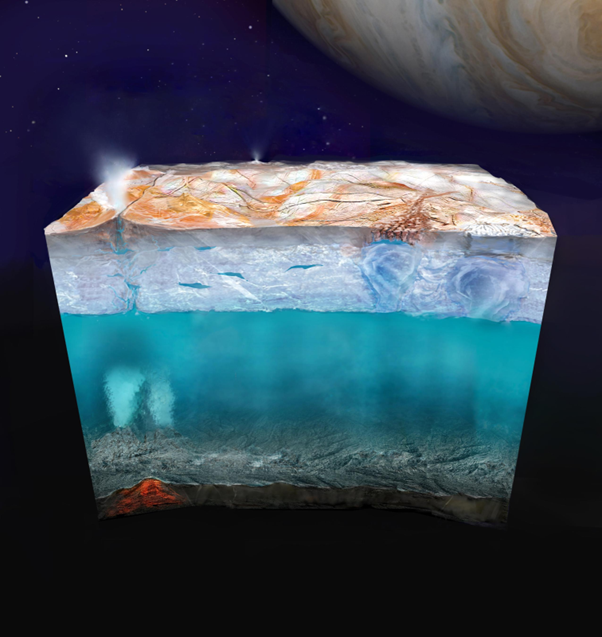
Europa Clipper
NASA’s Europa Clipper is going through its final tests! The planned date of launch is the 10th of October this year. But what is the Europa Clipper? And what will it be doing?!
Read Time
5 minutes
NASA’s Europa Clipper is going through its final tests! The planned date of launch is the 10th of October this year. But what is the Europa Clipper? And what will it be doing?!
[fulltext] =>
Why Eurpoa?
The icy moon Europa sits 730 million km away orbiting the giant gas planet Jupiter. Jupiter is a planet of many moons (the current count is around 95), but Europa is of particular interest to scientists because it is believed to be one of the most likely candidates for extraterrestrial life in our Solar System.
There are several lines of evidence that have led scientists to believe it has an ocean of water beneath the surface. It began in the 1970s when spectroscopic observations of the moon showed first that the surface was mostly made of frozen water or water ice. At the time it was theorised that underneath the surface there could possibly be liquid water.
The main piece of evidence didn’t come around until NASA’s Galileo spacecraft, which orbited Jupiter from 1995 to 2003, found that Europa has an induced magnetic field which suggests that under the surface there is a conductive layer. This is likely to be a salty liquid ocean. We think that due to Jupiter’s strong gravitational pull, the pushing and pulling between Jupiter and Europa – or tidal friction – causes the planet to heat up to allow an ocean to form beneath the icy crust.
On Earth, where we find water, we find life. And we think it will be the same for another place (at least life as we know it). Europa is possibly our biggest hope of finding somewhere in our Solar System with a habitable environment.

Credit: NASA
The Mission
Europa Clipper is an orbiter spacecraft meaning it will not be landing on the surface of Europa. Although that may seem like it won’t help an awful lot, it’s designed so it can still gather lots of information about this icy world. A future lander is still on the cards, and if Europa Clipper is successful in its mission we may well see it launched in the near future.
The main science goal is to determine whether there are places below the surface that could support life. To do this it is going to look closely at the nature of the ice shell, the ocean below and also the composition and geology.
How will they do this without even stepping on the moon I hear you ask? The spacecraft will be performing almost 50 flybys over the course of its 4-year science phase, each one over a different location so that NASA can get a good look at almost the entire moon.
The Spacecraft
It is the largest spacecraft NASA has ever sent for a planetary mission. Because Jupiter is so far away, a much smaller fraction of the Sun’s light reaches the planet, about 3-4% of what Earth gets to be more precise. To make enough energy, it needs huge solar arrays. The whole spacecraft has a diameter of 30.5 meters, and a whopping weight of 3,241 kg. With all that being said the arrays are still only producing roughly 700 watts of electricity when orbiting near Jupiter, which is just enough to operate a sandwich toaster.
Going near Jupiter is quite a dangerous place to be! Jupiter has a humongous magnetic field which traps charged particles from the Sun and other Jovian moons such as the very volcanic moon Io. The magnetic field speeds them up like a particle accelerator making them extremely dangerous. This means that a day’s worth of radiation on the Europan surface would be enough to kill a human! To keep the electronics and payload safe it will be enclosed in a thick protective vault made of titanium and aluminium. This should shield them from most of the high energy particles!
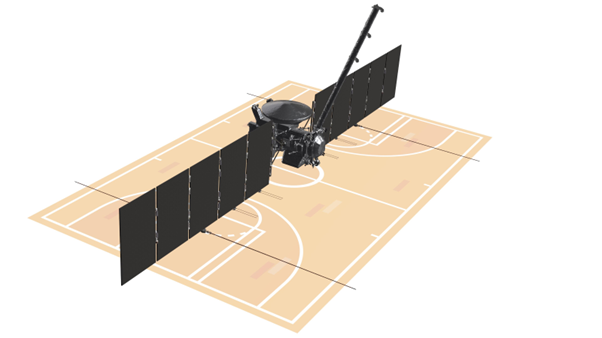
Credit: NASA
Europa Clipper will be taking several instruments with it to complete its scientific goals:
- Europa Imaging System (EIS) and Europa Thermal Emission Imaging System (E-THEMIS)- These will be used to map out the surface and look at the warmer regions for signs of liquid water or recent activity.
- Europa Ultraviolet Spectrograph (Europa-UVS) and Mapping Imaging Spectrometer for Europa (MISE)- These will look at the composition of its atmospheric gases and the surface.
- Europa Clipper Magnetometer (ECM) and Plasma Instrument for Magnetic Sounding (PIMS)- The ECM will look in depth at its induced magnetic field to confirm if the subsurface ocean exists, how deep it is and its salinity. It will also measure the thickness of the ice crust. PIMS will distinguish distortions caused by Jupiter in Europa’s induced magnetic field.
- MAss Spectrometer for Planetary EXploration (MASPEX) and SUrface Dust Analyser (SUDA)- MASPEX will analyse gases to study the chemistry of the subsurface ocean, as well as to understand how the ocean and surface exchange material, while SUDA will be analysing any dust that comes off the Europan surface.
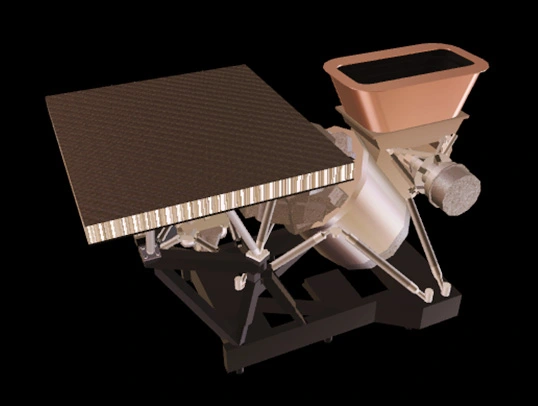
Mapping Imaging Spectrometer for Europa (MISE) Credit: NASA
How long?
If all goes well the spacecraft will be arriving at Jupiter in 2030, so we will have to wait at least 6 years to find out if there could be possible life in the Solar System. On its way it will be doing flybys of the planet Mars and Earth. We wish Europa Clipper the best of luck in its journey. Bon Voyage!
Author: Rosie Braunholtz
[checked_out] => 0 [checked_out_time] => 0000-00-00 00:00:00 [catid] => 34 [created] => 2024-10-07 10:23:16 [created_by] => 52030 [created_by_alias] => [modified] => 2024-10-07 10:29:21 [modified_by] => 52030 [modified_by_name] => Hannah Matterson [publish_up] => 2024-10-07 10:29:21 [publish_down] => 0000-00-00 00:00:00 [images] => {"image_intro":"images\/Eurpoa-Article-1.png","float_intro":"","image_intro_alt":"","image_intro_caption":"","image_fulltext":"","float_fulltext":"","image_fulltext_alt":"","image_fulltext_caption":""} [urls] => {"urla":false,"urlatext":"","targeta":"","urlb":false,"urlbtext":"","targetb":"","urlc":false,"urlctext":"","targetc":""} [attribs] => {"show_title":"","link_titles":"","show_tags":"","show_intro":"","info_block_position":"","info_block_show_title":"","show_category":"","link_category":"","show_parent_category":"","link_parent_category":"","show_author":"","link_author":"","show_create_date":"","show_modify_date":"","show_publish_date":"","show_item_navigation":"","show_icons":"","show_print_icon":"","show_email_icon":"","show_vote":"","show_hits":"","show_noauth":"","urls_position":"","alternative_readmore":"","article_layout":"","show_publishing_options":"","show_article_options":"","show_urls_images_backend":"","show_urls_images_frontend":""} [metadata] => {"robots":"","author":"","rights":"","xreference":""} [metakey] => [metadesc] => [access] => 1 [hits] => 6769 [xreference] => [featured] => 0 [language] => * [readmore] => 6453 [state] => 1 [category_title] => Latest News [category_route] => uncategorised/latest-news [category_access] => 1 [category_alias] => latest-news [author] => Hannah Matterson [author_email] => hannah@kielderobservatory.org [parent_title] => ROOT [parent_id] => 1 [parent_route] => [parent_alias] => root [rating] => [rating_count] => [published] => 1 [parents_published] => 1 [alternative_readmore] => [layout] => [params] => Joomla\Registry\Registry Object ( [data:protected] => stdClass Object ( [article_layout] => _:default [show_title] => 1 [link_titles] => 0 [show_intro] => 1 [info_block_position] => 0 [info_block_show_title] => 0 [show_category] => 0 [link_category] => 0 [show_parent_category] => 0 [link_parent_category] => 0 [show_author] => 0 [link_author] => 0 [show_create_date] => 0 [show_modify_date] => 0 [show_publish_date] => 0 [show_item_navigation] => 0 [show_vote] => 0 [show_readmore] => 1 [show_readmore_title] => 0 [readmore_limit] => 100 [show_tags] => 0 [show_icons] => 0 [show_print_icon] => 0 [show_email_icon] => 0 [show_hits] => 0 [show_noauth] => 0 [urls_position] => 0 [show_publishing_options] => 1 [show_article_options] => 1 [save_history] => 1 [history_limit] => 10 [show_urls_images_frontend] => 0 [show_urls_images_backend] => 1 [targeta] => 0 [targetb] => 0 [targetc] => 0 [float_intro] => right [float_fulltext] => none [category_layout] => _:blog [show_category_heading_title_text] => 1 [show_category_title] => 0 [show_description] => 1 [show_description_image] => 0 [maxLevel] => 1 [show_empty_categories] => 0 [show_no_articles] => 1 [show_subcat_desc] => 1 [show_cat_num_articles] => 0 [show_cat_tags] => 1 [show_base_description] => 1 [maxLevelcat] => -1 [show_empty_categories_cat] => 0 [show_subcat_desc_cat] => 1 [show_cat_num_articles_cat] => 1 [num_leading_articles] => 0 [num_intro_articles] => 27 [num_columns] => 1 [num_links] => 4 [multi_column_order] => 0 [show_subcategory_content] => 0 [show_pagination_limit] => 1 [filter_field] => hide [show_headings] => 1 [list_show_date] => 0 [date_format] => [list_show_hits] => 1 [list_show_author] => 1 [orderby_pri] => order [orderby_sec] => rdate [order_date] => published [show_pagination] => 1 [show_pagination_results] => 1 [show_featured] => show [show_feed_link] => 1 [feed_summary] => 0 [feed_show_readmore] => 0 [show_page_heading] => 0 [layout_type] => blog [menu_text] => 1 [menu_show] => 0 [secure] => 0 [page_title] => Latest News [page_description] => Kielder Observatory Astronomical Society [page_rights] => [robots] => [access-view] => 1 ) [separator] => . ) [displayDate] => 2024-10-07 10:23:16 [slug] => 401:europa-clipper [parent_slug] => [catslug] => 34:latest-news [event] => stdClass Object ( [afterDisplayTitle] => [beforeDisplayContent] => [afterDisplayContent] => ) [text] =>NASA’s Europa Clipper is going through its final tests! The planned date of launch is the 10th of October this year. But what is the Europa Clipper? And what will it be doing?!
)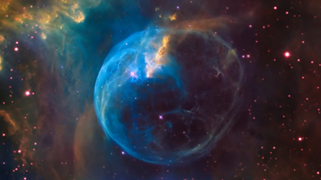
What's Up? October 2024
Astronomer Rosie talks you through this month's highlights!
Read Time
5 minutes
Astronomer Rosie talks you through this month's highlights!
[fulltext] =>
The Autumn skies are truly here! Hear the sound of leaves crunching under your feet and the aroma of pumpkin spice and cinnamon everywhere.
Cassiopeia
Cassiopeia in the Greek mythologies was the queen of Aethiopia (modern day Sudan). Vain and showing no regard for the gods, she landed her family in a bit of trouble which her daughter Andromeda ended up having to pay for. Luckily before Andromeda’s sacrifice, the Greek hero Perseus ended up saving the day as he had fortunately come back from a dangerous quest and just so happened to have the chopped-off head of Medusa in his sack.
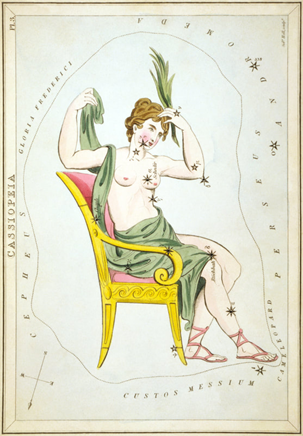
For her punishment of angering the god Poseidon, the queen was made a constellation to forever circulate the north star on her throne, spending half the year clinging to it for dear life so she doesn’t fall off. The constellation is very bright and one of the better well-known figures in the sky because it looks like a big “W”, made up of 5 bright stars.
Cassiopeia is one of the 88 modern-day constellations, originally stemming from Greek mythology, but of course because it’s such a bright and obvious pattern in the sky many cultures across the world have seen figures in this area. Ancient Chinese astronomers saw a chariot, Hindus see the princess Sharmishtha, and in some Arab atlases the constellation is meant to be a women’s hand dyed with henna.
Image: Queen Cassiopeia on her throne, Urania‘s Mirror, 1824. Sidney Hall.
Cassiopeia will be extremely high in the sky in October. It’s always towards the North no matter what time of year. However, in October it will be North-East, getting to straight up above at around 1am.

Image: The “W” shape of Cassiopeia. AstroBackyard
Deep Sky Objects
Cassiopeia is host to a whole load of fantastic deep sky objects to observe. I want to mention a couple that we don't talk about too much at the observatory but are fantastic objects to capture if you have a telescope at home.
The first is the Bubble Nebula! So called because it looks like, well, a bubble.

Image: The Bubble Nebula within Cassieopeia, taken with the Hubble Space Telescope. NASA's Goddard Space Flight Center.
The reason it looks like a bubble is because inside there is an extremely hot, humongous, bright star about 7,100 light-years away. It produces powerful stellar winds travelling at four million miles per hour. These push gas and dust outwards forming a layer around it.
Big, hot stars burn very brightly, but only for a short time. Scientists reckon that in 10-20 million years the star will die in a supernova explosion, “popping” the bubble!
 The second object to mention is another beautiful gas cloud, but one that looks like it’s munching its way across the galaxy, swallowing up each star along its path. That’s because it resembles the video-game character Pacman. Also known as NGC 281, the Pacman Nebula is located 9,500 light-years away. A very young star cluster lies within which ionizes the gas and makes it shine an array of bright colours. The “mouth” of Pacman is dust which is blocking the light from behind it.
The second object to mention is another beautiful gas cloud, but one that looks like it’s munching its way across the galaxy, swallowing up each star along its path. That’s because it resembles the video-game character Pacman. Also known as NGC 281, the Pacman Nebula is located 9,500 light-years away. A very young star cluster lies within which ionizes the gas and makes it shine an array of bright colours. The “mouth” of Pacman is dust which is blocking the light from behind it.
Image: The Pacman Nebula within Cassiopeia. Steve Leonard
Meteor Showers
We have two meteor showers this month! The Draconids and the Orionids. Named after where the meteors or shooting stars appear to be radiating from, you’ll want to be looking near the constellation of Draco and Orion for these showers.
The first to appear will be the Draconids on the 8th and 9th of October. The best time will be when Draco is highest in the sky, which is the early evening. This is usually a quiet shower with only a few per hour appearing. However, there is no moon that night so fingers crossed we’ll see some shooting stars.
The second shower to appear is a little more active; the Orionids peaking on the 21st. Normally we’d recommend staying up a bit later for this shower, however the moon will be 79% illuminated and getting higher in the sky as the night goes on, so earlier in the evening will be your best chance.
Both of these showers originate from comets. The Orionids are born from the famous Halley’s comet which goes round the Sun approximately once every 80 years.
Our Solar System
New Moon: October 2
First Quarter: October 10
Full Moon (Super): October 17
Third Quarter: October 24
Saturn and Jupiter are in their prime this time of year! Get a good look at Saturn before the rings possibly disappear next year when the planet tilts perfectly edge on.
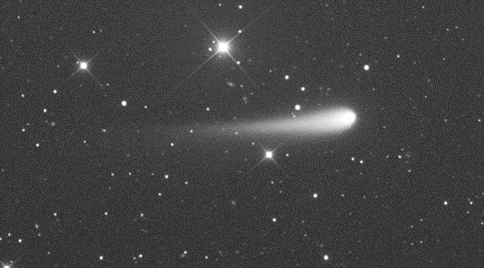
Image: Comet Tsuchinchan-Atlas taken on July 9 from Rio Hurtado Valley, Chile. Taras Prystavski.
This autumn’s biggest anticipation will be comet C/2023 A3 Tsuchinshan–ATLAS. It was discovered in early 2023 and has peaked many people’s interests because it has potential to be a fantastic object to observe. However, we don’t want to get you too excited, comets have a long history of disappointing astronomers and not living up to expectations. But still, we live in hope!
For our lower latitude readers, the comet will be at its brightest and closest to Earth during the first half of October where it will be passing through constellations Virgo and Libra. From the UK it won’t be visible at this time, so we’ll need to wait until the end of October. Look towards the south-west from around 19:00 until 22:00, the comet will be somewhere within the constellation Ophiuchus.
Happy Stargazing!
Author: Rosie Braunholtz
[checked_out] => 0 [checked_out_time] => 0000-00-00 00:00:00 [catid] => 34 [created] => 2024-09-26 12:36:41 [created_by] => 52030 [created_by_alias] => [modified] => 2024-09-26 12:46:47 [modified_by] => 52030 [modified_by_name] => Hannah Matterson [publish_up] => 2024-09-26 12:36:41 [publish_down] => 0000-00-00 00:00:00 [images] => {"image_intro":"images\/whatsup\/Picture3-WUO.png","float_intro":"","image_intro_alt":"","image_intro_caption":"","image_fulltext":"","float_fulltext":"","image_fulltext_alt":"","image_fulltext_caption":""} [urls] => {"urla":false,"urlatext":"","targeta":"","urlb":false,"urlbtext":"","targetb":"","urlc":false,"urlctext":"","targetc":""} [attribs] => {"show_title":"","link_titles":"","show_tags":"","show_intro":"","info_block_position":"","info_block_show_title":"","show_category":"","link_category":"","show_parent_category":"","link_parent_category":"","show_author":"","link_author":"","show_create_date":"","show_modify_date":"","show_publish_date":"","show_item_navigation":"","show_icons":"","show_print_icon":"","show_email_icon":"","show_vote":"","show_hits":"","show_noauth":"","urls_position":"","alternative_readmore":"","article_layout":"","show_publishing_options":"","show_article_options":"","show_urls_images_backend":"","show_urls_images_frontend":""} [metadata] => {"robots":"","author":"","rights":"","xreference":""} [metakey] => [metadesc] => [access] => 1 [hits] => 6567 [xreference] => [featured] => 0 [language] => * [readmore] => 7863 [state] => 1 [category_title] => Latest News [category_route] => uncategorised/latest-news [category_access] => 1 [category_alias] => latest-news [author] => Hannah Matterson [author_email] => hannah@kielderobservatory.org [parent_title] => ROOT [parent_id] => 1 [parent_route] => [parent_alias] => root [rating] => [rating_count] => [published] => 1 [parents_published] => 1 [alternative_readmore] => [layout] => [params] => Joomla\Registry\Registry Object ( [data:protected] => stdClass Object ( [article_layout] => _:default [show_title] => 1 [link_titles] => 0 [show_intro] => 1 [info_block_position] => 0 [info_block_show_title] => 0 [show_category] => 0 [link_category] => 0 [show_parent_category] => 0 [link_parent_category] => 0 [show_author] => 0 [link_author] => 0 [show_create_date] => 0 [show_modify_date] => 0 [show_publish_date] => 0 [show_item_navigation] => 0 [show_vote] => 0 [show_readmore] => 1 [show_readmore_title] => 0 [readmore_limit] => 100 [show_tags] => 0 [show_icons] => 0 [show_print_icon] => 0 [show_email_icon] => 0 [show_hits] => 0 [show_noauth] => 0 [urls_position] => 0 [show_publishing_options] => 1 [show_article_options] => 1 [save_history] => 1 [history_limit] => 10 [show_urls_images_frontend] => 0 [show_urls_images_backend] => 1 [targeta] => 0 [targetb] => 0 [targetc] => 0 [float_intro] => right [float_fulltext] => none [category_layout] => _:blog [show_category_heading_title_text] => 1 [show_category_title] => 0 [show_description] => 1 [show_description_image] => 0 [maxLevel] => 1 [show_empty_categories] => 0 [show_no_articles] => 1 [show_subcat_desc] => 1 [show_cat_num_articles] => 0 [show_cat_tags] => 1 [show_base_description] => 1 [maxLevelcat] => -1 [show_empty_categories_cat] => 0 [show_subcat_desc_cat] => 1 [show_cat_num_articles_cat] => 1 [num_leading_articles] => 0 [num_intro_articles] => 27 [num_columns] => 1 [num_links] => 4 [multi_column_order] => 0 [show_subcategory_content] => 0 [show_pagination_limit] => 1 [filter_field] => hide [show_headings] => 1 [list_show_date] => 0 [date_format] => [list_show_hits] => 1 [list_show_author] => 1 [orderby_pri] => order [orderby_sec] => rdate [order_date] => published [show_pagination] => 1 [show_pagination_results] => 1 [show_featured] => show [show_feed_link] => 1 [feed_summary] => 0 [feed_show_readmore] => 0 [show_page_heading] => 0 [layout_type] => blog [menu_text] => 1 [menu_show] => 0 [secure] => 0 [page_title] => Latest News [page_description] => Kielder Observatory Astronomical Society [page_rights] => [robots] => [access-view] => 1 ) [separator] => . ) [displayDate] => 2024-09-26 12:36:41 [slug] => 391:what-s-up-october-2024 [parent_slug] => [catslug] => 34:latest-news [event] => stdClass Object ( [afterDisplayTitle] => [beforeDisplayContent] => [afterDisplayContent] => ) [text] =>
Astronomer Rosie talks you through this month's highlights!
)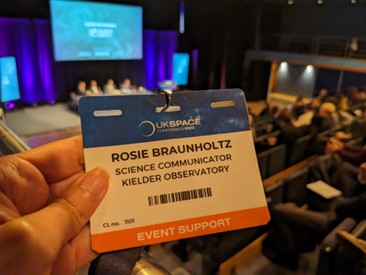
Why Space?
The International Astronautical Congress (IAC) is fast approaching in October! This is where space agencies, industry, academic researchers and students from all over the world come together in one place to network, share ideas and give updates on recent endeavours and future goals and challenges. We thought this would be a great chance to review what the space industry does, and why it is so important.
Read Time
10 minutes
The International Astronautical Congress (IAC) is fast approaching in October! This is where space agencies, industry, academic researchers and students from all over the world come together in one place to network, share ideas and give updates on recent endeavours and future goals and challenges. We thought this would be a great chance to review what the space industry does, and why it is so important.
[fulltext] =>
Why Space?
In November last year our astronomer Rosie attended the 2023 UK Space Conference, where she learned a lot about the space industry and how important it is for modern society. In this article she looks back on her time at the UK Space Conference and will cover why the space industry matters. Iin the next article we'll look more closely at the IAC’s motto this year which is "Responsible Space for Sustainability" and cover current ways and ideas on how to tackle this problem.

[Astronomer Rosie attending the UK Space Conference in 2023]
Introduction
Here at Kielder Observatory we aim to educate and inspire the public with knowledge about space and astronomy. Science communication isn’t perhaps the first thing you think of when you think “space industry”. What most people might think of are programmers behind computers writing code, mechanical engineers building rockets and business people in smart suits. However, even though we may be a small part of this sector mostly inundated with engineers, we are still an important piece. So, I went to the 2023 UK Space Conference in Belfast to give a voice to this part of the industry, and I wouldn’t be doing my job as a science communicator if I didn’t relay my findings!
This article will answer the “Why?” questions. While talking about missions to Mars, the Moon, or satellites going into space, a guest will challenge me about reasons to go to these places with a perplexed look. If you, reading this, have always been fascinated with space, you might think this a ridiculous question. “Why WOULDN’T we go to space” you may be thinking. The curiosity of humans has no end, our inquisitive minds want to know what’s out there. “Who wouldn’t!?” I hear you say. However, to the average person perhaps more down to earth (literally), this isn’t necessarily true. In my experience the public might not know the full scale or impact of the space industry, which is the fault of people like myself, not communicating the pros of the industry properly.
A lot of what’s on the news and on our Twitter feeds over the last few years tends to be the most shocking and eye-catching. Ie. Various billionaires having a contest seeing who can build their own rocket and get to space first. Or companies wanting to mine an asteroid entirely made of platinum. Looking at all the problems we have down here: cost of living, climate crisis, drought, famine, war… the list goes on, it can seem a ridiculous selfish use of resources, time and money to be spending on “adventures in space”. There are pros and cons to the space industry as with every industry, but you’ll be glad to hear that these captivating headlines only take up a very small part of the huge and extremely valuable industry we have today.
Satellites
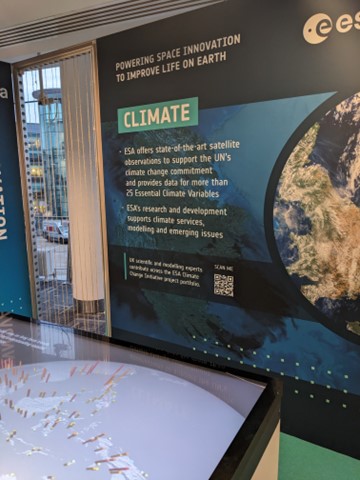
[PHOTO – ESA climate poster]
On day two of the conference, I took part in outreach in which various schools and children came to learn about space. I watched as various educators and industry personnel engaged in activities with the kids. One of my favourites was called “Did I use space today?” The children were given examples of going to school, using a computer, texting a friend, doing homework, eating cereal etc. and then were asked if any of these things use space. To the shock of the kids and some of the adults, most of the daily activities we do rely on satellites to work.
Our modern world is entirely dependent on the space industry. From using the internet in a remote location, having gps to navigate your way to work, satellite TV to watch the football, looking up the weather to know if you need an umbrella today, and paying for your cappuccino by card. Even things that may not seem like they would need satellites use it, like eating a bowl of cereal in the morning. Farmers use satellite imaging to know when to harvest their crops at the right time, to maximise efficiency.
It’s something I don’t think the children (or in fact anyone in the vicinity) will forget as the end of each example was finished with a scream of “I USED SPACE TODAY” which echoed through the entire convention centre.
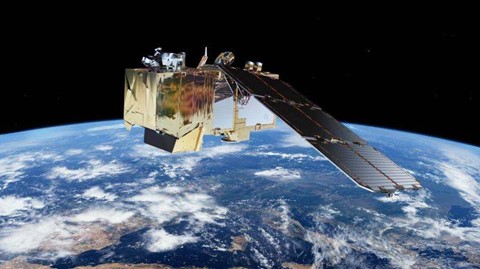
[Photo - satellite imaging, Sentinel-2. Credit: ESA/ATG medialab]
Ms. Aarti Holla-Maini, The Director of UNOOSA, spoke of many examples of how important satellites are to us currently and especially for tackling climate change. Satellites were crucial in taking the first accurate measurements of the Earth’s temperature. Today’s satellites can measure sea and land surface temperatures to unprecedented accuracy.
Earth observation satellites continuously monitor our ice caps from above to understand where and how it is changing. Other examples she gave were; monitoring illegal fishing; illegal deforestation of the rainforest; preventing food loss in microfarming in the ever increasing temperatures; monitoring and catching wildfires early; SAT-comms systems for remote communities; internet reaching isolated groups (Starlink); the list goes on.
So it’s safe to say satellite imaging is extremely important. The society we live in is accustomed but also dependant on it.
When you hear the words “Space Industry” this is what makes up most of it. From the 2022 UK size and health report of the UK Space Industry, Satellite Communications, Satnav and Earth Observations make up over 80% of the income, and most of this is Direct-to-Home Broadcasting (ie watching the footie on Sky Sports). This is boosting the economy and bringing lots of employment to the UK.
Next, let’s talk about what we generally share at the observatory: Space Exploration and Science!
Space Exploration/Telescopes

[Photo: Exploring our Solar System - why we do it and what do we learn?]
Space! Science! These are things like the ISS, rovers, and probes that we’re always talking about at Kielder Observatory and that make up a lot of our social media posts. This is the most (in my opinion) exciting part of the industry. Astronomy is one of the frontiers of science, there is so much we don’t know and so much to explore we’ve barely scratched the surface. The field tries to understand the fundamentals of the universe and pushes the boundaries of our knowledge by studying objects such as black holes and distant galaxies.
Science and Space Exploration requires a lot of government funding, as does the whole of the Space Sector -the UK government are planning to invest nearly £10 billion into the industry across the coming decade. And given that this is taxpayers money, you’d hope we’d be getting something out of it. At first glance it may seem interesting, but not particularly advantageous to life on Earth to know how old the solar system is, or how galaxies evolve, or when exactly the volcanoes on Mars were active. Humans are curious creatures. We want to know things! Where did we come from? Where are we going? Are we alone? And understanding the world around us gives benefit to society as a whole. Today engineers use Newton’s laws of gravity and knowledge of internal forces to build grand designs like bridges and tall buildings. Without knowing the sun is made of mostly hydrogen, we wouldn’t know that it creates energy with nuclear reactions, and thus that discovery led to the development of nuclear energy. The knowledge gained by astronomy and space science advances us and can be applied over many scientific fields.
And in the pursuit of science, great technologies are created along the way. “Space drives innovation.” Being at the frontier of science, astronomy drives the development of cutting-edge telescopes (like the James Webb) and detectors to space probes and computer simulations. Software algorithms used to sharpen images of the moon are now used by medical researchers for MRI scans; insulin pumps were invented to monitor astronauts vital signals; NASAs innovations in robotics and shock-absorption/comfort materials helps the private sector produce more advanced prosthetics for humans and animals. Currently astronauts on the ISS are looking into complex human health issues such as Alzheimer's.
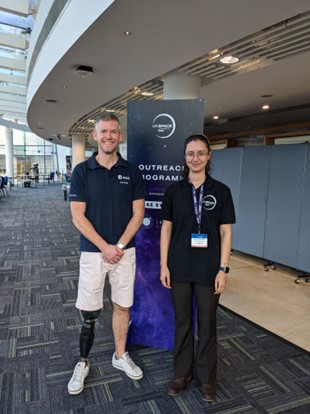
[Me and astronaut John McFall]
One part of Space Exploration which I mentioned in the introduction is Space Tourism, ie civilians going into space. This is an extremely small part of the industry, making up only 0.04% of the UK Space Industry Income (about £6 million in 2020/2021).
Difficult Questions
Even after understanding how space exploration can improve life here on Earth, you still may be thinking that all these substantial resources being spent “out there” should be spent on more pressing matters (poverty, hunger etc). Shouldn’t such a large budget be spent on better things?
All these issues aren’t really to do with the space sector at all, and more to do with wider problems in society, requiring systemic changes and broader conversation. There are definitely some ethical concerns when it comes to space exploration. Such as commercialisation, extracting and exploitation of resources in our solar system, and the impact on other planets and moons and possibly other life out there. There should be a cautious and ethical approach to space exploration to avoid unintended consequences.
Conclusion
The UK government spends around 0.08% of its total spending on space. For context, it spends around 18% on healthcare and 1% on overseas aid (What does the government spend money on 2022/2023, National Space Strategy ) For being a small part of our spending, space plays a vital role in our lives. From the National Space Strategy: “The space sector is a large part of the UK’s economy, employing over 45,000 individuals and worth over £16.4 billion per year. It also presents many opportunities for the future and is projected to be worth £490 billion by 2030.”
Hopefully I’ve convinced you that the Space Sector is important. Stay tuned for the next article covering "Responsible Space for Sustainability", and current problems and solutions.
References
https://www.gov.uk/government/publications/the-size-and-health-of-the-uk-space-industry-2022/size-health-of-the-uk-space-industry-2022#section4
https://www.discover.ukri.org/a-brief-history-of-climate-change-discoveries/index.html
https://www.rmg.co.uk/stories/topics/why-satellites-are-critical-fighting-climate-change
https://www.asc-csa.gc.ca/eng/satellites/everyday-lives/10-ways-that-satellites-helped.asp
https://www.gov.uk/government/publications/the-size-and-health-of-the-uk-space-industry-2022/size-health-of-the-uk-space-industry-2022#section4
https://committees.parliament.uk/publications/34642/documents/190787/default/#:~:text=Over%20the%20spending%20review%20we,beginning%20financial%20year%2022%2F23.
https://www.nao.org.uk/work-in-progress/national-space-strategy-and-the-uk-space-agency/#:~:text=In%202023%2C%20government%20announced%20that,UK%20Space%20Agency%20(UKSA).
https://www.discovermagazine.com/the-sciences/much-of-your-daily-life-depends-on-discoveries-made-by-astronomers
https://www.nasa.gov/missions/station/space-station-leads-to-breakthroughs-in-human-health-on-earth/
https://assets.publishing.service.gov.uk/media/64afdb40c033c1001080623b/the_case_for_space.pdf
https://www.nao.org.uk/work-in-progress/national-space-strategy-and-the-uk-space-agency/
https://ifs.org.uk/taxlab/taxlab-key-questions/what-does-government-spend-money
The International Astronautical Congress (IAC) is fast approaching in October! This is where space agencies, industry, academic researchers and students from all over the world come together in one place to network, share ideas and give updates on recent endeavours and future goals and challenges. We thought this would be a great chance to review what the space industry does, and why it is so important.
)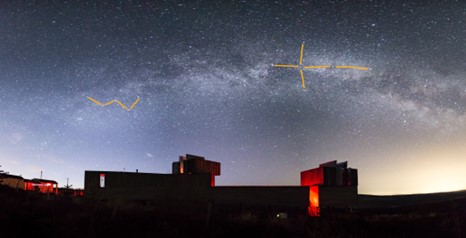
What’s Up September 2024
Hello! Welcome to another addition of What’s Up, and this month September!
Read Time
6 minutes
Hello! Welcome to another addition of What’s Up, and this month September!
[fulltext] =>
What's Up September 2024
September is possibly our favourite month for astronomers here at the Observatory. The nights are still warm (at least in comparison to winter, brrrr), most of the midge have died off, and we’re starting to get 8 hours of darkness, instead of the handful of hours we got in August. This means you can stargaze from 9pm and are still able to go to bed at a reasonable hour (if you want to!).
Milky Way
This time of year is the best time to see the oh so coveted sight: the Milky Way. This is our galaxy, and due to how high it appears in the sky in the UK, is much brighter now than in say January. Our galaxy is actually at it’s highest point in May and June, where the galactic centre is more visible than normal, but because it barely gets dark during these summer months the Milky Way is hidden. But September, with it’s dark nights and the Milky Way still being at a high altitude, is a great time to view it.
It’s a sad fact that due to light pollution, there’s an estimation that over half the UK have never seen the Milky Way, and about a third of the world's population live somewhere where it isn’t visible! This is a drastic change that has happened in just a few generations (think if Van Gogh had tried to paint A Starry Night in today's light polluted world).
If you’ve never seen the Milky Way, you’re not alone. But this month is a great chance to try and spot it!
Here are my tips to see our galaxy:
Be somewhere dark! The Milky Way is very faint, you’re not going to see it if you’re near a city or big town. Get out of the populated areas and go somewhere remote, however you don’t need to come all the way to Kielder Forest! Here is a map of the UK showing the light pollution:
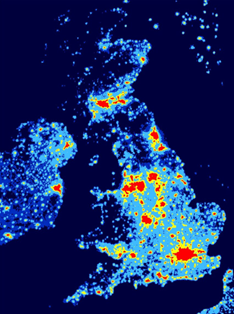
Light Pollution in the UK. Image Credit: http://www.cpre.org.uk/
You want to be somewhere where it’s dark blue. The more South you are, the trickier it will be as you can see if you’re in Northumberland, you’re very lucky as we have lots of options.
The moon is your enemy! We love the moon here at the observatory of course, but it can get in the way of seeing those fainter objects. You ideally want it to be New Moon (ie, no moon in the sky). You can use star gazing apps like Stellarium, or search the moon phases on the internet. This month, the very beginning or the very end of September is good.
Look Up! The milky way is right overhead, going through the constellations of Cygnus and Cassiopeia, as pictured below. Give your eyes time to adjust to the darkness, it will take maybe 10 minutes for your eyes to adjust to night vision. It will look like a faint cloud is running all the way across the sky.

Milky Way Panorama with Cassiopeia and Cygnus highlighted. Dan Monk
Andromeda Galaxy
Speaking of galaxies, this month the Andromeda galaxy will be sitting around 70 degrees above the horizon at midnight. Objects are always better to view if they are high up as there is less atmosphere for the light to get through. So, if you’ve got a pair of binoculars or small telescope that’s sitting in the attic, this month is a great time to whip them out, go into your back garden and try and get a glimpse of our closest galaxy (which is still a hefty 2.5 million light years away). If you live in a place with very dark skies, you’ll be able to make out the small oval glow of the Andromeda Galaxy with your naked eye.
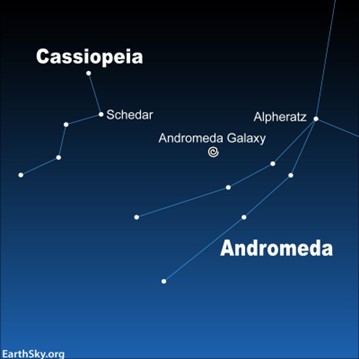
How to find Andromeda. Credit: EarthSky.org
Princess Andromeda is the constellation you need to find for this object, and she is the daughter of the much brighter and easier to spot Queen Cassiopeia, so we’ll start there. Queen Cassiopeia, doesn’t look much like a queen, but the letter ‘W’. Using the two stars on the right hand side of the ‘W’, we can line them up and follow it down until you hit the first bright star of Princess Andromeda. Hop to the next star to the right, and then a little bit above will be a faint smudge which is the Andromeda galaxy!
Unlike stars which are very sharp, galaxies will look like a faint diffuse cloud. In Andromeda’s case, a diffuse oval, with a bright spot in the centre.
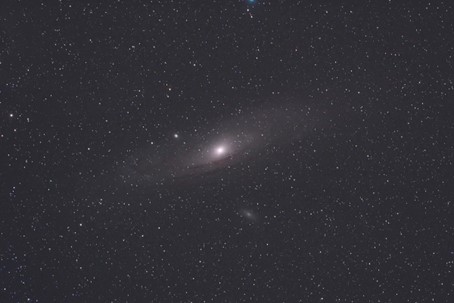
Andromeda Galaxy through a telescope. Credit: Pete Lawrence
Planets
Mercury will be at its greatest western elongation on September 5th, this is one of the best times to get a good look at this planet all year! You should be able to see it low in the sky right before sunrise.
It’s a great time of year to see Saturn, it will be more visible earlier in the evening at around 9pm. On September 8th, Saturn will be in opposition, meaning it will be the closest it gets to Earth as it orbits the Sun. It will be rising in the Southeast and setting in the Southwest staying fairly low on the horizon. To the eye, you will see a pale-yellow dot, but with a small telescope the famous rings will appear.
Special Events
On September 17th there will be a partial lunar eclipse at night. This happens when the moon passes through the Earth’s shadow from the Sun and only part of the moon is lit up. The best time to view the eclipse will be about 4am on September the 18th, so you must be willing to stay up late!
The Autumn Equinox occurs on September 22nd. In the Northern Hemisphere, it’s the first day of Autumn, and in the Southern Hemisphere, it’s the first day of Spring. During the equinoxes we tend to get more appearances of Aurora – so keep your alerts and notifications ON! It’s also the best time of year to catch a view of the Zodiacal light – interplanetary dust from our solar system. It’s best to look to the East right before dawn.
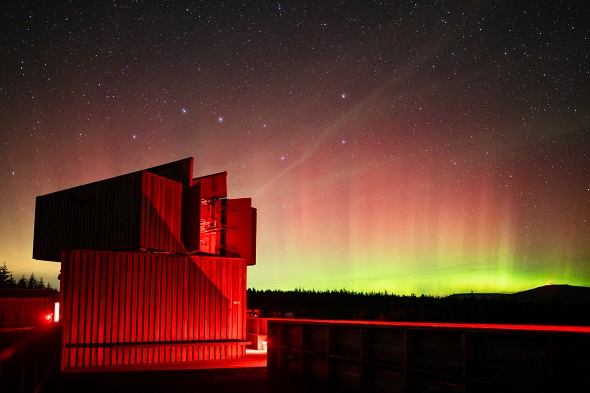
Kielder Observatory Aurora 2022. Dan Monk
Moon Phases
September 3rd: New moon
September 11th: First Quarter
September 17th: Partial Lunar Eclipse
September 18th: Full moon, supermoon
September 24th: Third Quarter
[checked_out] => 0 [checked_out_time] => 0000-00-00 00:00:00 [catid] => 34 [created] => 2024-08-21 13:30:39 [created_by] => 52030 [created_by_alias] => [modified] => 2024-08-21 13:30:39 [modified_by] => 0 [modified_by_name] => [publish_up] => 2024-08-21 13:30:39 [publish_down] => 0000-00-00 00:00:00 [images] => {"image_intro":"images\/WU-09.24-2.jpg","float_intro":"","image_intro_alt":"","image_intro_caption":"","image_fulltext":"","float_fulltext":"","image_fulltext_alt":"","image_fulltext_caption":""} [urls] => {"urla":false,"urlatext":"","targeta":"","urlb":false,"urlbtext":"","targetb":"","urlc":false,"urlctext":"","targetc":""} [attribs] => {"show_title":"","link_titles":"","show_tags":"","show_intro":"","info_block_position":"","info_block_show_title":"","show_category":"","link_category":"","show_parent_category":"","link_parent_category":"","show_author":"","link_author":"","show_create_date":"","show_modify_date":"","show_publish_date":"","show_item_navigation":"","show_icons":"","show_print_icon":"","show_email_icon":"","show_vote":"","show_hits":"","show_noauth":"","urls_position":"","alternative_readmore":"","article_layout":"","show_publishing_options":"","show_article_options":"","show_urls_images_backend":"","show_urls_images_frontend":""} [metadata] => {"robots":"","author":"","rights":"","xreference":""} [metakey] => [metadesc] => [access] => 1 [hits] => 7564 [xreference] => [featured] => 0 [language] => * [readmore] => 8820 [state] => 1 [category_title] => Latest News [category_route] => uncategorised/latest-news [category_access] => 1 [category_alias] => latest-news [author] => Hannah Matterson [author_email] => hannah@kielderobservatory.org [parent_title] => ROOT [parent_id] => 1 [parent_route] => [parent_alias] => root [rating] => [rating_count] => [published] => 1 [parents_published] => 1 [alternative_readmore] => [layout] => [params] => Joomla\Registry\Registry Object ( [data:protected] => stdClass Object ( [article_layout] => _:default [show_title] => 1 [link_titles] => 0 [show_intro] => 1 [info_block_position] => 0 [info_block_show_title] => 0 [show_category] => 0 [link_category] => 0 [show_parent_category] => 0 [link_parent_category] => 0 [show_author] => 0 [link_author] => 0 [show_create_date] => 0 [show_modify_date] => 0 [show_publish_date] => 0 [show_item_navigation] => 0 [show_vote] => 0 [show_readmore] => 1 [show_readmore_title] => 0 [readmore_limit] => 100 [show_tags] => 0 [show_icons] => 0 [show_print_icon] => 0 [show_email_icon] => 0 [show_hits] => 0 [show_noauth] => 0 [urls_position] => 0 [show_publishing_options] => 1 [show_article_options] => 1 [save_history] => 1 [history_limit] => 10 [show_urls_images_frontend] => 0 [show_urls_images_backend] => 1 [targeta] => 0 [targetb] => 0 [targetc] => 0 [float_intro] => right [float_fulltext] => none [category_layout] => _:blog [show_category_heading_title_text] => 1 [show_category_title] => 0 [show_description] => 1 [show_description_image] => 0 [maxLevel] => 1 [show_empty_categories] => 0 [show_no_articles] => 1 [show_subcat_desc] => 1 [show_cat_num_articles] => 0 [show_cat_tags] => 1 [show_base_description] => 1 [maxLevelcat] => -1 [show_empty_categories_cat] => 0 [show_subcat_desc_cat] => 1 [show_cat_num_articles_cat] => 1 [num_leading_articles] => 0 [num_intro_articles] => 27 [num_columns] => 1 [num_links] => 4 [multi_column_order] => 0 [show_subcategory_content] => 0 [show_pagination_limit] => 1 [filter_field] => hide [show_headings] => 1 [list_show_date] => 0 [date_format] => [list_show_hits] => 1 [list_show_author] => 1 [orderby_pri] => order [orderby_sec] => rdate [order_date] => published [show_pagination] => 1 [show_pagination_results] => 1 [show_featured] => show [show_feed_link] => 1 [feed_summary] => 0 [feed_show_readmore] => 0 [show_page_heading] => 0 [layout_type] => blog [menu_text] => 1 [menu_show] => 0 [secure] => 0 [page_title] => Latest News [page_description] => Kielder Observatory Astronomical Society [page_rights] => [robots] => [access-view] => 1 ) [separator] => . ) [displayDate] => 2024-08-21 13:30:39 [slug] => 356:what-s-up-september-2024 [parent_slug] => [catslug] => 34:latest-news [event] => stdClass Object ( [afterDisplayTitle] => [beforeDisplayContent] => [afterDisplayContent] => ) [text] =>
Hello! Welcome to another addition of What’s Up, and this month September!
)
It's not over until it's a Nova!
A closer look at T Coronae Borealis
Read Time
3 minutes
A closer look at T Coronae Borealis
[fulltext] =>
Corona Borealis- the northern crown. A curve in the sky consisting of 7 stars, the brightest of which being Alphecca, this small constellation may be one which you have missed in the past, but it’s worth finding and keeping an eye on this year for the opportunity to see a once-in-lifetime astronomical event- a nova.
It is likely that you are more aware of supernovae, and if this is the case you may be asking why we care about an event that is less “super”. My instinct when I was first presented with these terms was that supernovae were the brighter and more spectacular events, and that a nova would just be the same but smaller, this isn’t quite right. Really, it’s more a matter of life and death. Literally. A supernova destroys its progenitor star, whereas with a nova the star will brighten for a period before returning to normality. With the star persisting this presents the opportunity for a repeat performance- a recurrence.
Such a recurrent nova is what we are waiting on with T Coronae Borealis, also known as the “Blaze Star”. This recurrent nova has a historically observed period of about 80 years, and it was last seen in 1946. Preceding the 1946 nova, astronomers observed a period of dimming that is comparable to what we are seeing at the moment. This seems to suggest that we may expect the star to blaze again soon, potentially even this month!

Predicting astronomical phenomena is a tricky thing, nothing is ever certain. Indeed, for all our excitement, T Coronae Borealis may do nothing special at all. But if it does go nova, what you should expect to see is a new star in the position pictured below:

The first recorded observation of this star in a nova state was on the 12th May 1866 by John Birmingham, an Irish astronomer who wrote: “In size, it was at least equal to α Coronae and decidedly more brilliant…. In colour the star appeared nearly white with a bluish tinge”.
Following its appearance, we expect the star to return to normality over a few weeks. The light curve below shows how the magnitude diminished in 1946 and 1866

So what exactly causes these stars to flare up? A nova occurs in binary systems where you have a white dwarf star in proximity to a larger companion. If they orbit close enough then the white dwarf star can start to steal matter from its companion in a process known as accretion. In this way the white dwarf star gains an atmosphere, usually of hydrogen. As this gets denser and is heated by the star below, it will eventually reach a critical temperature causing the ignition of fusion. The energy output by this is what results in the star seeming to flare up as the atmosphere is expelled.
A recurrent nova star will then return to feeding on its companion to restore its lost atmosphere, until the whole thing happens again. Should the star be destroyed, we have what is referred to as type 1a supernova instead.
We hope that you will join those of us at the Observatory in watching Corona Borealis with bated breath in the next few months. If we see anything, you will be the first to know!
[checked_out] => 0 [checked_out_time] => 0000-00-00 00:00:00 [catid] => 34 [created] => 2024-08-07 15:58:43 [created_by] => 21099 [created_by_alias] => [modified] => 2024-08-07 15:58:43 [modified_by] => 0 [modified_by_name] => [publish_up] => 2024-08-07 15:58:43 [publish_down] => 0000-00-00 00:00:00 [images] => {"image_intro":"images\/Blog-Images\/T_Coronae_Borealis_-_intro.jpg","float_intro":"","image_intro_alt":"T Coronae Borealis","image_intro_caption":"","image_fulltext":"images\/Blog-Images\/T_Coronae_Borealis_-_full.jpg","float_fulltext":"","image_fulltext_alt":"T Coronae Borealis","image_fulltext_caption":""} [urls] => {"urla":false,"urlatext":"","targeta":"","urlb":false,"urlbtext":"","targetb":"","urlc":false,"urlctext":"","targetc":""} [attribs] => {"show_title":"","link_titles":"","show_tags":"","show_intro":"0","info_block_position":"","info_block_show_title":"","show_category":"","link_category":"","show_parent_category":"","link_parent_category":"","show_author":"","link_author":"","show_create_date":"","show_modify_date":"","show_publish_date":"","show_item_navigation":"","show_icons":"","show_print_icon":"","show_email_icon":"","show_vote":"","show_hits":"","show_noauth":"","urls_position":"","alternative_readmore":"","article_layout":"KIE:news","show_publishing_options":"","show_article_options":"","show_urls_images_backend":"","show_urls_images_frontend":""} [metadata] => {"robots":"","author":"","rights":"","xreference":""} [metakey] => [metadesc] => [access] => 1 [hits] => 7184 [xreference] => [featured] => 0 [language] => * [readmore] => 3670 [state] => 1 [category_title] => Latest News [category_route] => uncategorised/latest-news [category_access] => 1 [category_alias] => latest-news [author] => Miss Heather Woodfine [author_email] => Heather@kielderobservatory.org [parent_title] => ROOT [parent_id] => 1 [parent_route] => [parent_alias] => root [rating] => [rating_count] => [published] => 1 [parents_published] => 1 [alternative_readmore] => [layout] => [params] => Joomla\Registry\Registry Object ( [data:protected] => stdClass Object ( [article_layout] => _:default [show_title] => 1 [link_titles] => 0 [show_intro] => 1 [info_block_position] => 0 [info_block_show_title] => 0 [show_category] => 0 [link_category] => 0 [show_parent_category] => 0 [link_parent_category] => 0 [show_author] => 0 [link_author] => 0 [show_create_date] => 0 [show_modify_date] => 0 [show_publish_date] => 0 [show_item_navigation] => 0 [show_vote] => 0 [show_readmore] => 1 [show_readmore_title] => 0 [readmore_limit] => 100 [show_tags] => 0 [show_icons] => 0 [show_print_icon] => 0 [show_email_icon] => 0 [show_hits] => 0 [show_noauth] => 0 [urls_position] => 0 [show_publishing_options] => 1 [show_article_options] => 1 [save_history] => 1 [history_limit] => 10 [show_urls_images_frontend] => 0 [show_urls_images_backend] => 1 [targeta] => 0 [targetb] => 0 [targetc] => 0 [float_intro] => right [float_fulltext] => none [category_layout] => _:blog [show_category_heading_title_text] => 1 [show_category_title] => 0 [show_description] => 1 [show_description_image] => 0 [maxLevel] => 1 [show_empty_categories] => 0 [show_no_articles] => 1 [show_subcat_desc] => 1 [show_cat_num_articles] => 0 [show_cat_tags] => 1 [show_base_description] => 1 [maxLevelcat] => -1 [show_empty_categories_cat] => 0 [show_subcat_desc_cat] => 1 [show_cat_num_articles_cat] => 1 [num_leading_articles] => 0 [num_intro_articles] => 27 [num_columns] => 1 [num_links] => 4 [multi_column_order] => 0 [show_subcategory_content] => 0 [show_pagination_limit] => 1 [filter_field] => hide [show_headings] => 1 [list_show_date] => 0 [date_format] => [list_show_hits] => 1 [list_show_author] => 1 [orderby_pri] => order [orderby_sec] => rdate [order_date] => published [show_pagination] => 1 [show_pagination_results] => 1 [show_featured] => show [show_feed_link] => 1 [feed_summary] => 0 [feed_show_readmore] => 0 [show_page_heading] => 0 [layout_type] => blog [menu_text] => 1 [menu_show] => 0 [secure] => 0 [page_title] => Latest News [page_description] => Kielder Observatory Astronomical Society [page_rights] => [robots] => [access-view] => 1 ) [separator] => . ) [displayDate] => 2024-08-07 15:58:43 [slug] => 355:it-s-not-over-until-it-s-a-nova [parent_slug] => [catslug] => 34:latest-news [event] => stdClass Object ( [afterDisplayTitle] => [beforeDisplayContent] => [afterDisplayContent] => ) [text] =>
A closer look at T Coronae Borealis
)
Perseids promise a powerful meteor display
It's one of our favourite events of the year- and here's how you can enjoy it too!
Read Time
2 minutes
It's one of our favourite events of the year- and here's how you can enjoy it too!
[fulltext] =>
STARGAZERS across the globe will be on the hunt for fireballs across dark skies as they prepare to capture the next astronomical phenomenon – the Perseids meteor shower.
The bright meteors are one of the most dramatic things to see for astronomy fans in the summer, with this year’s shower peaking between the night of August 12 and before dawn on the 13th.

Image: Persedis captures at Kielder Observatory, Michael Auton
The shower is caused by comets, which heat up then break apart as they get closer to the sun. The pieces can hit Earth’s atmosphere at speeds of between seven and 45 miles per second. Larger meteors can explode as fireballs and smaller ones vaporise, leaving behind a bright trail of light.
Dan Pye, director of astronomy at Kielder Observatory, set in beautiful Kielder Forest, in Northumberland, said: “It’s one of the most active meteor showers of the year, with up to 100 meteors per hour. The best place to see the Perseids is in a dark sky location, like Kielder Observatory, where they are highly visible to the naked eye.
“By 10pm on August 12, the moon will have set below the horizon and so any time after that until dawn will be a good time to look for it.
“They’re very fast moving and last only a couple of seconds. They can be short or a much longer streak and they’re thought to come from the constellation of Persius, hence the name, towards the North East part of the sky.”
[checked_out] => 0 [checked_out_time] => 0000-00-00 00:00:00 [catid] => 34 [created] => 2024-08-06 11:40:31 [created_by] => 52030 [created_by_alias] => [modified] => 2024-08-06 11:40:31 [modified_by] => 0 [modified_by_name] => [publish_up] => 2024-08-06 11:40:31 [publish_down] => 0000-00-00 00:00:00 [images] => {"image_intro":"images\/Perseid-MA.jpg","float_intro":"","image_intro_alt":"","image_intro_caption":"","image_fulltext":"","float_fulltext":"","image_fulltext_alt":"","image_fulltext_caption":""} [urls] => {"urla":false,"urlatext":"","targeta":"","urlb":false,"urlbtext":"","targetb":"","urlc":false,"urlctext":"","targetc":""} [attribs] => {"show_title":"","link_titles":"","show_tags":"","show_intro":"","info_block_position":"","info_block_show_title":"","show_category":"","link_category":"","show_parent_category":"","link_parent_category":"","show_author":"","link_author":"","show_create_date":"","show_modify_date":"","show_publish_date":"","show_item_navigation":"","show_icons":"","show_print_icon":"","show_email_icon":"","show_vote":"","show_hits":"","show_noauth":"","urls_position":"","alternative_readmore":"","article_layout":"","show_publishing_options":"","show_article_options":"","show_urls_images_backend":"","show_urls_images_frontend":""} [metadata] => {"robots":"","author":"","rights":"","xreference":""} [metakey] => [metadesc] => [access] => 1 [hits] => 6670 [xreference] => [featured] => 0 [language] => * [readmore] => 1797 [state] => 1 [category_title] => Latest News [category_route] => uncategorised/latest-news [category_access] => 1 [category_alias] => latest-news [author] => Hannah Matterson [author_email] => hannah@kielderobservatory.org [parent_title] => ROOT [parent_id] => 1 [parent_route] => [parent_alias] => root [rating] => [rating_count] => [published] => 1 [parents_published] => 1 [alternative_readmore] => [layout] => [params] => Joomla\Registry\Registry Object ( [data:protected] => stdClass Object ( [article_layout] => _:default [show_title] => 1 [link_titles] => 0 [show_intro] => 1 [info_block_position] => 0 [info_block_show_title] => 0 [show_category] => 0 [link_category] => 0 [show_parent_category] => 0 [link_parent_category] => 0 [show_author] => 0 [link_author] => 0 [show_create_date] => 0 [show_modify_date] => 0 [show_publish_date] => 0 [show_item_navigation] => 0 [show_vote] => 0 [show_readmore] => 1 [show_readmore_title] => 0 [readmore_limit] => 100 [show_tags] => 0 [show_icons] => 0 [show_print_icon] => 0 [show_email_icon] => 0 [show_hits] => 0 [show_noauth] => 0 [urls_position] => 0 [show_publishing_options] => 1 [show_article_options] => 1 [save_history] => 1 [history_limit] => 10 [show_urls_images_frontend] => 0 [show_urls_images_backend] => 1 [targeta] => 0 [targetb] => 0 [targetc] => 0 [float_intro] => right [float_fulltext] => none [category_layout] => _:blog [show_category_heading_title_text] => 1 [show_category_title] => 0 [show_description] => 1 [show_description_image] => 0 [maxLevel] => 1 [show_empty_categories] => 0 [show_no_articles] => 1 [show_subcat_desc] => 1 [show_cat_num_articles] => 0 [show_cat_tags] => 1 [show_base_description] => 1 [maxLevelcat] => -1 [show_empty_categories_cat] => 0 [show_subcat_desc_cat] => 1 [show_cat_num_articles_cat] => 1 [num_leading_articles] => 0 [num_intro_articles] => 27 [num_columns] => 1 [num_links] => 4 [multi_column_order] => 0 [show_subcategory_content] => 0 [show_pagination_limit] => 1 [filter_field] => hide [show_headings] => 1 [list_show_date] => 0 [date_format] => [list_show_hits] => 1 [list_show_author] => 1 [orderby_pri] => order [orderby_sec] => rdate [order_date] => published [show_pagination] => 1 [show_pagination_results] => 1 [show_featured] => show [show_feed_link] => 1 [feed_summary] => 0 [feed_show_readmore] => 0 [show_page_heading] => 0 [layout_type] => blog [menu_text] => 1 [menu_show] => 0 [secure] => 0 [page_title] => Latest News [page_description] => Kielder Observatory Astronomical Society [page_rights] => [robots] => [access-view] => 1 ) [separator] => . ) [displayDate] => 2024-08-06 11:40:31 [slug] => 354:perseids-promise-a-powerful-meteor-display [parent_slug] => [catslug] => 34:latest-news [event] => stdClass Object ( [afterDisplayTitle] => [beforeDisplayContent] => [afterDisplayContent] => ) [text] =>It's one of our favourite events of the year- and here's how you can enjoy it too!
)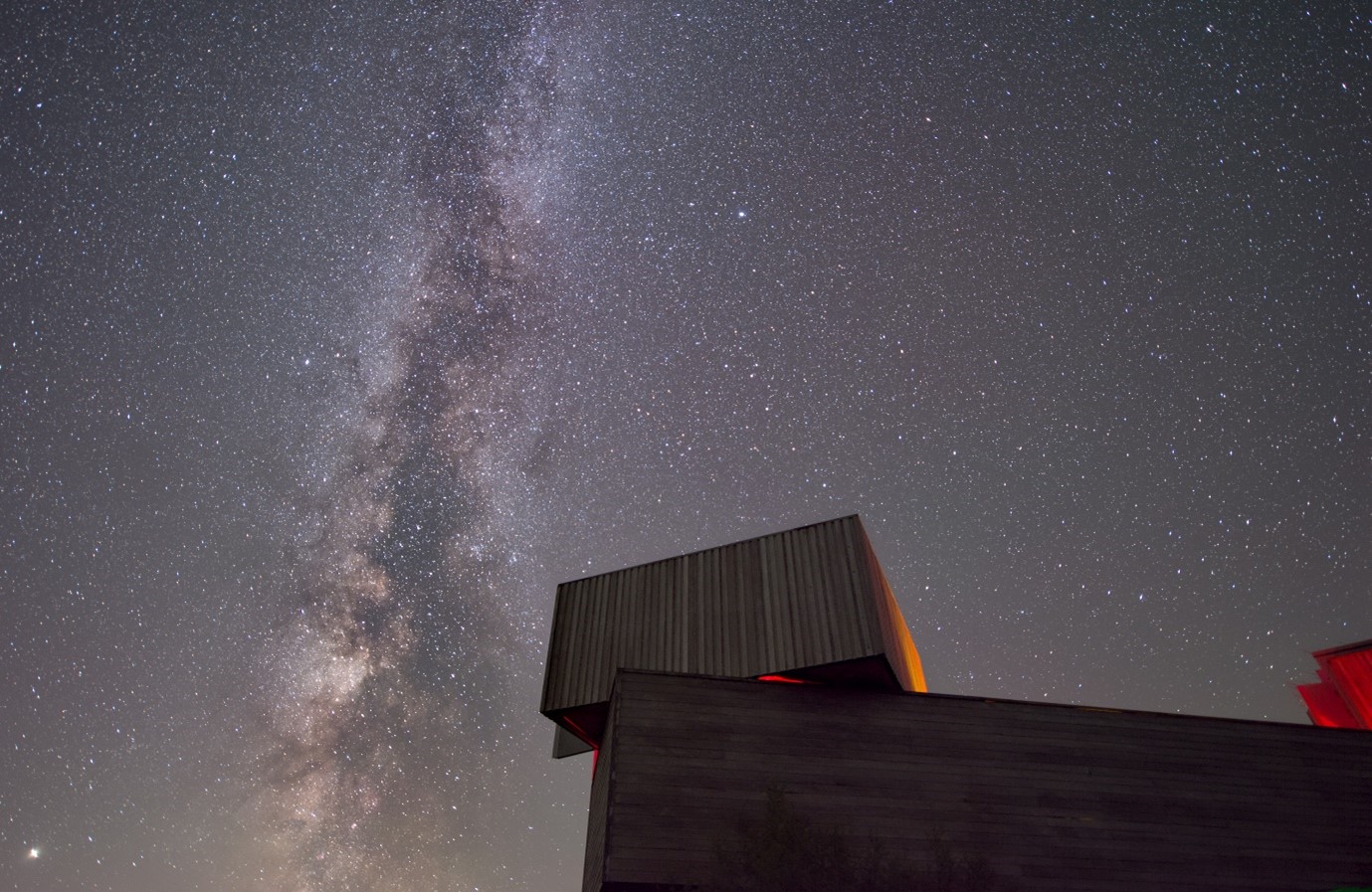
What’s Up? August 2024
It's your monthly guide to What's Up? in the sky with Astronomer and Science Communicator, Ishbel Carlyle!
Read Time
3 minutes
It's your monthly guide to What's Up? in the sky with Astronomer and Science Communicator, Ishbel Carlyle!
[fulltext] =>
As of the first week in August “Night” is coming back! True darkness returns in August and by the end of the month we will be having up to 5 and half hours of darkness! That is plenty of star gazing time to get your eyes, binoculars, telescopes, or cameras to the sky, with plenty of treats to be found.
Milky way peeking out:
With darkness returning the Milky Way is now visible again. This is the view of our Galxay from the inside out. During the lighter nights the Sky is too bright, and it blocks out the milky way. When light pollution starts to take hold of the sky above you, the milky way is the first thing to go. It is called the milky way because it really does look a bit like milk spilt across the sky. There are so many stars in the plane of the milky way that we can not make out the individual stars and it just blurs into one glittery band. Use the summer tringle we discussed in the last few What’s ups as a good indicator of where it is. Cygnus the swan points right along it, flying across the sky.

Figure 1 The milky way captured by Adam Shore at Kelder Observatory
Planets:

Figure 2: From the Sky watch app, August 28th 6am as seen from the northern hemisphere.
They are truly back! This month what I am most excited for is a glimpse of Saturn with its beautiful rings, Jupiter with its spot and Galilean moons, and Mars, which is much closer than it was last year so should be showing off the whole disk in all its red hues.
From the beginning of the month, they will be present by midnight * check, and get visible earlier and earlier as the month goes on. On the 28th of August just before dawn (6am) we will get Saturn, Neptune, Uranus, Jupiter, Mars, and Mercury!
To spot a planet, look for the brightest objects in the sky. Focus your search along the ecliptic plane, which, for us in the UK, stretches from east to west near the southern horizon. This is because the ecliptic plane is where the planets of our solar system are located.
Planets are much closer to us than stars. Although they are smaller and do not produce their own light, they reflect sunlight more effectively, making them appear brighter and covering a larger area in the sky. Stars, on the other hand, appear only as pinpricks of light. The light from stars can be disrupted by our atmosphere, causing a twinkling effect due to changes in water vapor and temperature. Planets, being closer, can appear as disks through a telescope. While the light from planets can also be affected by atmospheric disturbances, their central area remains consistently illuminated, distinguishing them from the twinkling stars.
Moon Phases:
5th: New Moon
12th: Half Moon
20th: Full Moon
26th: Half Moon
The full moon this month is known as the Sturgeon Moon. This name comes from the native Americans from the season of plentiful sturgeon in the north American Great lakes.
Clears Skies and Happy Stargazing!
[checked_out] => 0 [checked_out_time] => 0000-00-00 00:00:00 [catid] => 34 [created] => 2024-07-23 13:52:23 [created_by] => 52030 [created_by_alias] => [modified] => 2024-07-23 13:52:23 [modified_by] => 0 [modified_by_name] => [publish_up] => 2024-07-23 13:52:23 [publish_down] => 0000-00-00 00:00:00 [images] => {"image_intro":"images\/Milky-Way-Obs-1.jpg","float_intro":"","image_intro_alt":"","image_intro_caption":"","image_fulltext":"","float_fulltext":"","image_fulltext_alt":"","image_fulltext_caption":""} [urls] => {"urla":false,"urlatext":"","targeta":"","urlb":false,"urlbtext":"","targetb":"","urlc":false,"urlctext":"","targetc":""} [attribs] => {"show_title":"","link_titles":"","show_tags":"","show_intro":"","info_block_position":"","info_block_show_title":"","show_category":"","link_category":"","show_parent_category":"","link_parent_category":"","show_author":"","link_author":"","show_create_date":"","show_modify_date":"","show_publish_date":"","show_item_navigation":"","show_icons":"","show_print_icon":"","show_email_icon":"","show_vote":"","show_hits":"","show_noauth":"","urls_position":"","alternative_readmore":"","article_layout":"","show_publishing_options":"","show_article_options":"","show_urls_images_backend":"","show_urls_images_frontend":""} [metadata] => {"robots":"","author":"","rights":"","xreference":""} [metakey] => [metadesc] => [access] => 1 [hits] => 6195 [xreference] => [featured] => 0 [language] => * [readmore] => 4595 [state] => 1 [category_title] => Latest News [category_route] => uncategorised/latest-news [category_access] => 1 [category_alias] => latest-news [author] => Hannah Matterson [author_email] => hannah@kielderobservatory.org [parent_title] => ROOT [parent_id] => 1 [parent_route] => [parent_alias] => root [rating] => [rating_count] => [published] => 1 [parents_published] => 1 [alternative_readmore] => [layout] => [params] => Joomla\Registry\Registry Object ( [data:protected] => stdClass Object ( [article_layout] => _:default [show_title] => 1 [link_titles] => 0 [show_intro] => 1 [info_block_position] => 0 [info_block_show_title] => 0 [show_category] => 0 [link_category] => 0 [show_parent_category] => 0 [link_parent_category] => 0 [show_author] => 0 [link_author] => 0 [show_create_date] => 0 [show_modify_date] => 0 [show_publish_date] => 0 [show_item_navigation] => 0 [show_vote] => 0 [show_readmore] => 1 [show_readmore_title] => 0 [readmore_limit] => 100 [show_tags] => 0 [show_icons] => 0 [show_print_icon] => 0 [show_email_icon] => 0 [show_hits] => 0 [show_noauth] => 0 [urls_position] => 0 [show_publishing_options] => 1 [show_article_options] => 1 [save_history] => 1 [history_limit] => 10 [show_urls_images_frontend] => 0 [show_urls_images_backend] => 1 [targeta] => 0 [targetb] => 0 [targetc] => 0 [float_intro] => right [float_fulltext] => none [category_layout] => _:blog [show_category_heading_title_text] => 1 [show_category_title] => 0 [show_description] => 1 [show_description_image] => 0 [maxLevel] => 1 [show_empty_categories] => 0 [show_no_articles] => 1 [show_subcat_desc] => 1 [show_cat_num_articles] => 0 [show_cat_tags] => 1 [show_base_description] => 1 [maxLevelcat] => -1 [show_empty_categories_cat] => 0 [show_subcat_desc_cat] => 1 [show_cat_num_articles_cat] => 1 [num_leading_articles] => 0 [num_intro_articles] => 27 [num_columns] => 1 [num_links] => 4 [multi_column_order] => 0 [show_subcategory_content] => 0 [show_pagination_limit] => 1 [filter_field] => hide [show_headings] => 1 [list_show_date] => 0 [date_format] => [list_show_hits] => 1 [list_show_author] => 1 [orderby_pri] => order [orderby_sec] => rdate [order_date] => published [show_pagination] => 1 [show_pagination_results] => 1 [show_featured] => show [show_feed_link] => 1 [feed_summary] => 0 [feed_show_readmore] => 0 [show_page_heading] => 0 [layout_type] => blog [menu_text] => 1 [menu_show] => 0 [secure] => 0 [page_title] => Latest News [page_description] => Kielder Observatory Astronomical Society [page_rights] => [robots] => [access-view] => 1 ) [separator] => . ) [displayDate] => 2024-07-23 13:52:23 [slug] => 352:what-s-up-august-2024 [parent_slug] => [catslug] => 34:latest-news [event] => stdClass Object ( [afterDisplayTitle] => [beforeDisplayContent] => [afterDisplayContent] => ) [text] =>It's your monthly guide to What's Up? in the sky with Astronomer and Science Communicator, Ishbel Carlyle!
)
Volunteers give beloved observatory a new look
Kielder Observatory and Accenture team up once again!
Read Time
2 minutes
Kielder Observatory and Accenture team up once again!
[fulltext] =>A MUCH-loved observatory in the North East has received a significant facelift thanks to the dedicated efforts of volunteers following a recent funding boost.
Dozens of friends of Kielder Observatory, in Northumberland, gathered with cleaning equipment, gardening tools, and paintbrushes to give the building a makeover as part of its summer solstice maintenance week.
Many of the volunteers had come from Accenture, a global professional services company, which this week announced support for the observatory through a £10,000 sponsorship package. The generous contribution will bolster Kielder Observatory's mission to create opportunities for people of all backgrounds and abilities to experience moments of inspiration, revelation, wonder and hope through observing the cosmos.
The funds will be allocated to several key initiatives, including half-day workshop sessions at the observatory for 10 North East schools, support for 35 volunteers over a three-month period, and site improvements to enhance the visitor experience.
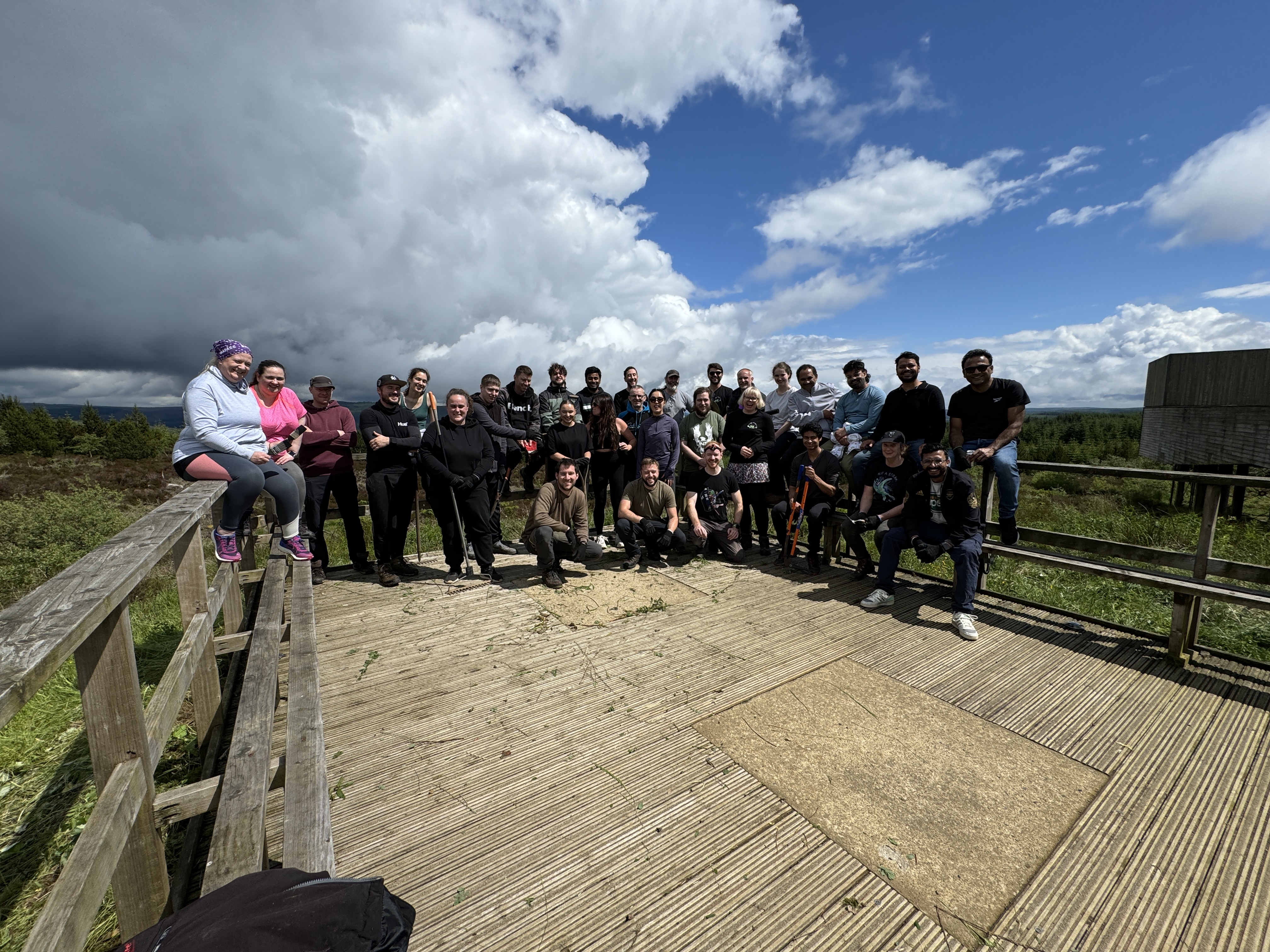
Work during the week was also supported by the observatory’s own team of volunteers, as well as Northumbrian Water, who delivered bulk water containers to the remote location to help with cleaning.
David Darlington, Associate Director at Accenture, said: “It’s been great to help such an awesome charity, ensuring that this amazing facility continues to inspire the next generation of astronomers and stargazers. We look forward to working with the team at Kielder Observatory more in the future.”
Leigh Venus, CEO of Kielder Observatory, said: “Our wooden buildings are exposed to the bracing elements of Kielder Forest, and need constant care. We took a week out during the summer solstice to reinvigorate our observatory and the Gillian Dickinson Astro-Imaging Academy, and we’re incredibly grateful to our volunteers and everyone who chipped in. Accenture has been a fantastic partner, bringing many volunteers during the week and committing to our work through their generous sponsorship. Same time next year!”
[checked_out] => 0 [checked_out_time] => 0000-00-00 00:00:00 [catid] => 34 [created] => 2024-06-28 10:55:13 [created_by] => 52030 [created_by_alias] => [modified] => 2024-06-28 11:07:15 [modified_by] => 52030 [modified_by_name] => Hannah Matterson [publish_up] => 2024-06-28 10:55:13 [publish_down] => 0000-00-00 00:00:00 [images] => {"image_intro":"images\/Accenture-Volunteers-1.jpeg","float_intro":"","image_intro_alt":"","image_intro_caption":"","image_fulltext":"images\/Accenture-Volunteers-1.jpeg","float_fulltext":"","image_fulltext_alt":"","image_fulltext_caption":""} [urls] => {"urla":false,"urlatext":"","targeta":"","urlb":false,"urlbtext":"","targetb":"","urlc":false,"urlctext":"","targetc":""} [attribs] => {"show_title":"","link_titles":"","show_tags":"","show_intro":"","info_block_position":"","info_block_show_title":"","show_category":"","link_category":"","show_parent_category":"","link_parent_category":"","show_author":"","link_author":"","show_create_date":"","show_modify_date":"","show_publish_date":"","show_item_navigation":"","show_icons":"","show_print_icon":"","show_email_icon":"","show_vote":"","show_hits":"","show_noauth":"","urls_position":"","alternative_readmore":"","article_layout":"","show_publishing_options":"","show_article_options":"","show_urls_images_backend":"","show_urls_images_frontend":""} [metadata] => {"robots":"","author":"","rights":"","xreference":""} [metakey] => [metadesc] => [access] => 1 [hits] => 3524 [xreference] => [featured] => 0 [language] => * [readmore] => 2407 [state] => 1 [category_title] => Latest News [category_route] => uncategorised/latest-news [category_access] => 1 [category_alias] => latest-news [author] => Hannah Matterson [author_email] => hannah@kielderobservatory.org [parent_title] => ROOT [parent_id] => 1 [parent_route] => [parent_alias] => root [rating] => [rating_count] => [published] => 1 [parents_published] => 1 [alternative_readmore] => [layout] => [params] => Joomla\Registry\Registry Object ( [data:protected] => stdClass Object ( [article_layout] => _:default [show_title] => 1 [link_titles] => 0 [show_intro] => 1 [info_block_position] => 0 [info_block_show_title] => 0 [show_category] => 0 [link_category] => 0 [show_parent_category] => 0 [link_parent_category] => 0 [show_author] => 0 [link_author] => 0 [show_create_date] => 0 [show_modify_date] => 0 [show_publish_date] => 0 [show_item_navigation] => 0 [show_vote] => 0 [show_readmore] => 1 [show_readmore_title] => 0 [readmore_limit] => 100 [show_tags] => 0 [show_icons] => 0 [show_print_icon] => 0 [show_email_icon] => 0 [show_hits] => 0 [show_noauth] => 0 [urls_position] => 0 [show_publishing_options] => 1 [show_article_options] => 1 [save_history] => 1 [history_limit] => 10 [show_urls_images_frontend] => 0 [show_urls_images_backend] => 1 [targeta] => 0 [targetb] => 0 [targetc] => 0 [float_intro] => right [float_fulltext] => none [category_layout] => _:blog [show_category_heading_title_text] => 1 [show_category_title] => 0 [show_description] => 1 [show_description_image] => 0 [maxLevel] => 1 [show_empty_categories] => 0 [show_no_articles] => 1 [show_subcat_desc] => 1 [show_cat_num_articles] => 0 [show_cat_tags] => 1 [show_base_description] => 1 [maxLevelcat] => -1 [show_empty_categories_cat] => 0 [show_subcat_desc_cat] => 1 [show_cat_num_articles_cat] => 1 [num_leading_articles] => 0 [num_intro_articles] => 27 [num_columns] => 1 [num_links] => 4 [multi_column_order] => 0 [show_subcategory_content] => 0 [show_pagination_limit] => 1 [filter_field] => hide [show_headings] => 1 [list_show_date] => 0 [date_format] => [list_show_hits] => 1 [list_show_author] => 1 [orderby_pri] => order [orderby_sec] => rdate [order_date] => published [show_pagination] => 1 [show_pagination_results] => 1 [show_featured] => show [show_feed_link] => 1 [feed_summary] => 0 [feed_show_readmore] => 0 [show_page_heading] => 0 [layout_type] => blog [menu_text] => 1 [menu_show] => 0 [secure] => 0 [page_title] => Latest News [page_description] => Kielder Observatory Astronomical Society [page_rights] => [robots] => [access-view] => 1 ) [separator] => . ) [displayDate] => 2024-06-28 10:55:13 [slug] => 350:volunteers-give-beloved-observatory-a-new-look [parent_slug] => [catslug] => 34:latest-news [event] => stdClass Object ( [afterDisplayTitle] => [beforeDisplayContent] => [afterDisplayContent] => ) [text] =>Kielder Observatory and Accenture team up once again!
)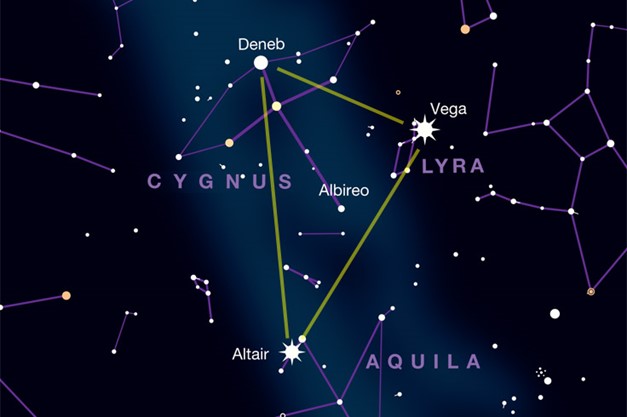
What’s up July 2024
Summer is hopefully underway, and with good weather come clear skies. They might not be very dark or last very long but there is still plenty to explore across the summer night skies.
Read Time
5 minutes
Summer is hopefully underway, and with good weather come clear skies. They might not be very dark or last very long but there is still plenty to explore across the summer night skies.
[fulltext] =>
Long nights
During summer the northern hemisphere is tilted towards the sun, such that as we rotate we are illuminated by the Sun more than we are shaded. This means that the days for July are roughly 17 and a half hours long to start with, and will be 16 hours by the end of the month as we rotate round the sun and our inclination changes again. We will never see true astronomical darkness as the Sun is never more than approximately 20 degrees below the horizon throughout the night.
Constellations

Figure 1: The Summer Triangle.
Last month we focused on the Summer triangle, Lets take a deep dive into the constellations that make up the Summer Triangle.
Cygnus (The Swan):

Cygnus, often called the Northern Cross due to its cross-shaped asterism, is a prominent constellation that graces the summer skies. Located along the plane of the Milky Way, the swan swims along the milky river of our galaxy, making it an excellent region for observing dense star fields and the intricate structure of our galaxy. The brightest star in Cygnus is Deneb, which forms one vertex of the Summer Triangle. Deneb is a supergiant star and one of the most luminous stars visible in the night sky, lying about 2,600 light-years from Earth. This constellation is often associated with the Greek story of Zeus transforming into a swan.
Lyra (The Lyre):
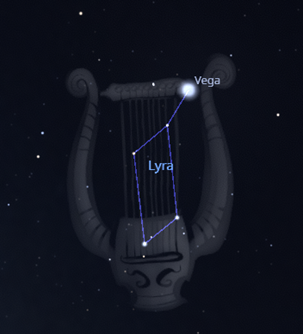
Lyra is a small but mighty constellation, easily identified by its bright star Vega, which is one of the most luminous stars in the sky and a key component of the Summer Triangle. Vega is relatively close to Earth, at about 25 light-years away, and has been a cornerstone for many astronomical studies. Within Lyra, stargazers can also find the Ring Nebula (M57), a well-known planetary nebula that appears as a small, glowing blue ring through telescopes. Lyra represents the lyre of Orpheus in Greek mythology, a musical instrument said to have such enchanting melodies that it could charm all of creation, including inanimate objects and even the gods.
Aquila (The Eagle):
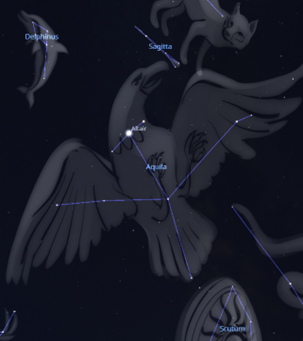
Aquila, known as the Eagle. It is characterized by the bright star Altair, one of the closest stars visible to the naked eye at only about 16.7 light-years from Earth, and its hammerhead /neck segment. Altair is also part of the Summer Triangle, alongside Vega and Deneb. Aquila is rich in mythological significance, often associated Zeus again, as the eagle that carried Zeus’s thunderbolts. This constellation also features several interesting deep-sky objects, including the open cluster NGC 6709. This is another bird that flies across the Milky way so again a good hunting zone for dense collections of stars.
Planets
Figure 2: image shows where Jupiter and Mars will be in relation to the Moon and stars thoughout the end of July in the East North East sky. credit :Skyatnight magazine
Mars, Jupiter and Saturn are your best catches this month. It won’t be easy as they are still in the pre-dawn sky, so you will have to stay up to 3am to catch them. Saturn is leading the planets across the sky, then Jupiter and Mars are close together. Wait till the end of the month and they will be appearing earlier in the night, in darker skies, so much easier to spot.
To spot a planet, look for the brightest objects in the sky. Focus your search along the ecliptic plane, which, for us in the UK, stretches from east to west near the southern horizon. This is because the ecliptic plane is where the planets of our solar system are located.
Planets are much closer to us than stars. Although they are smaller and do not produce their own light, they reflect sunlight more effectively, making them appear brighter and covering a larger area in the sky. Stars, on the other hand, appear only as pinpricks of light. The light from stars can be disrupted by our atmosphere, causing a twinkling effect due to changes in water vapor and temperature. Planets, being closer, can appear as disks through a telescope. While the light from planets can also be affected by atmospheric disturbances, their central area remains consistently illuminated, distinguishing them from the twinkling stars.
Moon Phases
5th; New Moon
13th: Half Moon
21st: Full Moon
28th: Half Moon
The full moon this month is known as the Buck Moon. This comes from male deer called bucks who shed and regrow their antlers annually. July is when all the antlers are coming back in full growth and bucks now look like bucks again.
Clears Skies and Happy Stargazing!
[checked_out] => 0 [checked_out_time] => 0000-00-00 00:00:00 [catid] => 34 [created] => 2024-06-26 12:08:50 [created_by] => 52030 [created_by_alias] => [modified] => 2024-07-01 08:43:56 [modified_by] => 52030 [modified_by_name] => Hannah Matterson [publish_up] => 2024-06-26 12:08:50 [publish_down] => 0000-00-00 00:00:00 [images] => {"image_intro":"images\/Summer-triangle-July-24.jpg","float_intro":"","image_intro_alt":"","image_intro_caption":"","image_fulltext":"","float_fulltext":"","image_fulltext_alt":"","image_fulltext_caption":""} [urls] => {"urla":false,"urlatext":"","targeta":"","urlb":false,"urlbtext":"","targetb":"","urlc":false,"urlctext":"","targetc":""} [attribs] => {"show_title":"","link_titles":"","show_tags":"","show_intro":"","info_block_position":"","info_block_show_title":"","show_category":"","link_category":"","show_parent_category":"","link_parent_category":"","show_author":"","link_author":"","show_create_date":"","show_modify_date":"","show_publish_date":"","show_item_navigation":"","show_icons":"","show_print_icon":"","show_email_icon":"","show_vote":"","show_hits":"","show_noauth":"","urls_position":"","alternative_readmore":"","article_layout":"","show_publishing_options":"","show_article_options":"","show_urls_images_backend":"","show_urls_images_frontend":""} [metadata] => {"robots":"","author":"","rights":"","xreference":""} [metakey] => [metadesc] => [access] => 1 [hits] => 6054 [xreference] => [featured] => 0 [language] => * [readmore] => 8825 [state] => 1 [category_title] => Latest News [category_route] => uncategorised/latest-news [category_access] => 1 [category_alias] => latest-news [author] => Hannah Matterson [author_email] => hannah@kielderobservatory.org [parent_title] => ROOT [parent_id] => 1 [parent_route] => [parent_alias] => root [rating] => [rating_count] => [published] => 1 [parents_published] => 1 [alternative_readmore] => [layout] => [params] => Joomla\Registry\Registry Object ( [data:protected] => stdClass Object ( [article_layout] => _:default [show_title] => 1 [link_titles] => 0 [show_intro] => 1 [info_block_position] => 0 [info_block_show_title] => 0 [show_category] => 0 [link_category] => 0 [show_parent_category] => 0 [link_parent_category] => 0 [show_author] => 0 [link_author] => 0 [show_create_date] => 0 [show_modify_date] => 0 [show_publish_date] => 0 [show_item_navigation] => 0 [show_vote] => 0 [show_readmore] => 1 [show_readmore_title] => 0 [readmore_limit] => 100 [show_tags] => 0 [show_icons] => 0 [show_print_icon] => 0 [show_email_icon] => 0 [show_hits] => 0 [show_noauth] => 0 [urls_position] => 0 [show_publishing_options] => 1 [show_article_options] => 1 [save_history] => 1 [history_limit] => 10 [show_urls_images_frontend] => 0 [show_urls_images_backend] => 1 [targeta] => 0 [targetb] => 0 [targetc] => 0 [float_intro] => right [float_fulltext] => none [category_layout] => _:blog [show_category_heading_title_text] => 1 [show_category_title] => 0 [show_description] => 1 [show_description_image] => 0 [maxLevel] => 1 [show_empty_categories] => 0 [show_no_articles] => 1 [show_subcat_desc] => 1 [show_cat_num_articles] => 0 [show_cat_tags] => 1 [show_base_description] => 1 [maxLevelcat] => -1 [show_empty_categories_cat] => 0 [show_subcat_desc_cat] => 1 [show_cat_num_articles_cat] => 1 [num_leading_articles] => 0 [num_intro_articles] => 27 [num_columns] => 1 [num_links] => 4 [multi_column_order] => 0 [show_subcategory_content] => 0 [show_pagination_limit] => 1 [filter_field] => hide [show_headings] => 1 [list_show_date] => 0 [date_format] => [list_show_hits] => 1 [list_show_author] => 1 [orderby_pri] => order [orderby_sec] => rdate [order_date] => published [show_pagination] => 1 [show_pagination_results] => 1 [show_featured] => show [show_feed_link] => 1 [feed_summary] => 0 [feed_show_readmore] => 0 [show_page_heading] => 0 [layout_type] => blog [menu_text] => 1 [menu_show] => 0 [secure] => 0 [page_title] => Latest News [page_description] => Kielder Observatory Astronomical Society [page_rights] => [robots] => [access-view] => 1 ) [separator] => . ) [displayDate] => 2024-06-26 12:08:50 [slug] => 349:what-s-up-july-2024 [parent_slug] => [catslug] => 34:latest-news [event] => stdClass Object ( [afterDisplayTitle] => [beforeDisplayContent] => [afterDisplayContent] => ) [text] =>
Summer is hopefully underway, and with good weather come clear skies. They might not be very dark or last very long but there is still plenty to explore across the summer night skies.
)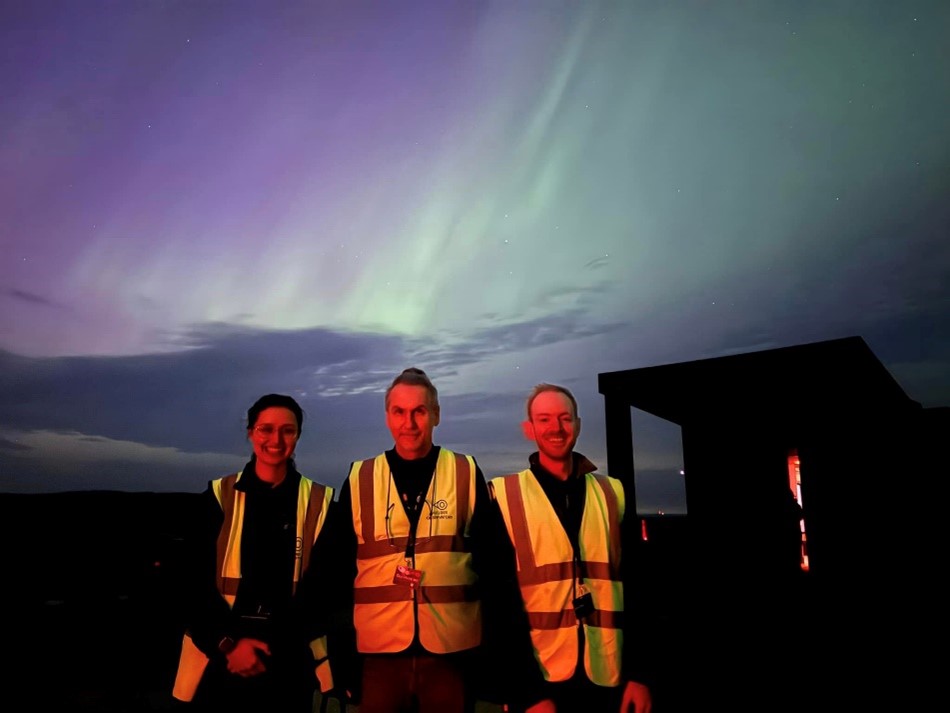
The Major Geomagnetic Storm of May 2024: A Spectacle for the Ages
Many of you may have witnessed the spectacular sight of the Northern Lights recently. Here, astronomer Ishbel Carlyle talks us through what happened, why and hears others' accounts of that night.
Read Time
6 minutes
Many of you may have witnessed the spectacular sight of the Northern Lights recently. Here, astronomer Ishbel Carlyle talks us through what happened, why and hears others' accounts of that night.
[fulltext] =>
In the final hours of Friday, 10th May 2024, the night skies across the world were set ablaze by one of the most intense geomagnetic storms in recent history. This celestial display, triggered by powerful solar activity, painted the heavens with vivid hues of green, purple, blue and red, mesmerising onlookers from Norway to New York.
Astronomers had been anticipating the event for days, following reports of heightened solar activity. However, the aurora still exceeded all expectations. Guy Haveron, one of our astronomer and science communicators at Kielder was working at the observatory when it happened, summed up the experience succinctly: "It was truly awesome." His sentiment was echoed by all our wonderful guests who witnessed the spectacle firsthand.
But what does “increased solar activity” mean? The Sun is made up of plasma, the extreme high-energy fourth state of matter. As with most extremes in physics this means it has some weird properties. For example, the Sun is spotty. It has loops of the plasma coming out of the surface whose feet we can see as dark spots on the Sun. When we look at different types of light, such as ultraviolet, we can see these loops. They make the Sun look hairy. These loops are actually magnetic fields.


Figure 1a: Image Credit Solar Dynamics Orbiter NASA, UV image. Figure 1b: Region c3664, the incredibly active region that caused the May 10th storm, viewed through our 16 inch telescope at Kielder observatory with a solar filter. Taken by Guy Haveron.
Maybe think of the loops not as hairs, but as elastic bands. What happens when you stretch one of those too much? SNAP! Same thing happens with the Sun loops and all the plasma that was suspended in the loop is thrown out into space. Basically, the Sun burps, sometimes Earth gets a face full.
This material ejected from the Sun can interact with our very own magnetic field and is accelerated to where the magnetic field is strongest at the north and south, just like any bar magnet. This produces what is called the auroral oval, the circumference of the aurora around the world at the North and South poles. The more material blasted out from the Sun, the more the oval can be pushed towards the equator, and the brighter the aurora is, resulting in it being sighted even over London.
But what actually is the “light” of the Northern Lights. Is it the solar material itself? Sadly not, these are just charged particles, usually invisible to the human eye. These particles are being captured by our magnetic field and then smash into our atmosphere. This causes the atoms in the atmosphere to glow. This is how we get the colours: in the upper atmosphere the main elements present are Oxygen and Nitrogen. Oxygen glows green and red, and Nitrogen glows blue and purple. We see this beautiful layering effect due to the different densities of gases in our atmosphere and different energies of the incoming material cascading down through it.
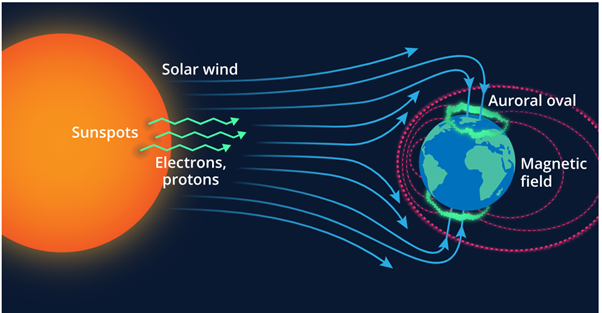
Figure 2: Image credit GoOpti (https://www.goopti.com/en/about/goopti_blog/aurora-borealis-where-to-see-the-northern-lights-in-2020)
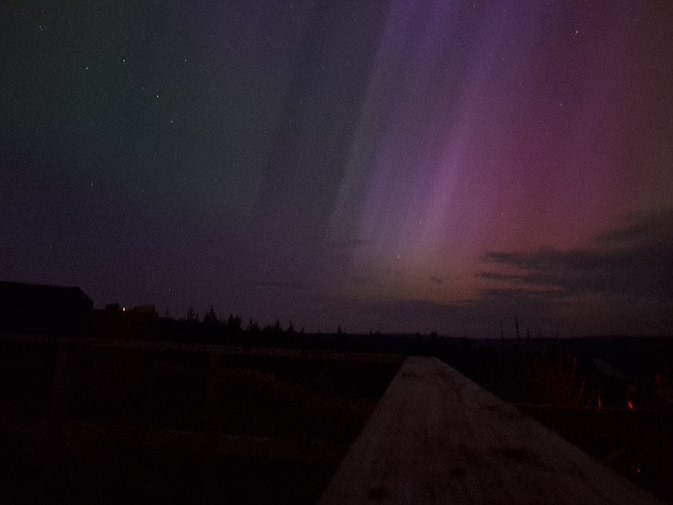
Figure 3:Aurora off the observing deck looking south east at Kielder Observatory. Taken by Ishbel Carlyle.
Rosie Braunholtz, another of our astronomers at the observatory that night, shared her awe, stating, "I just couldn't believe it." Braunholtz, who had never seen the aurora before, was left speechless by the storm's magnitude and beauty.
For many, this geomagnetic storm was a once-in-a-lifetime event. Dan Pye, the Director of Astronomy at Kielder Observatory, exclaimed, "It was everywhere! It's just never going to be better than that." Pye's declaration captures the essence of the universal astonishment and joy that the aurora has inspired.

Figure 4: Rosie, Guy and Dan at the observatory.
Adam Shore, another of our astronomer and science communicators was hosting a Scout event in Northumberland, expressed his amazement with a touch of humour, saying, "There's only so many times I can call it incredible." His struggle to find adequate words to describe the experience was a common theme among those who saw the aurora that night.
Liam Reid, also an astronomer in Northumberland, was able to sum up the event very concisely, calling the phenomenon "Mental." This was more concise than some. While many of our guests, friends and other colleagues shared all our enthusiasm, some of their reactions included words not suitable for print.
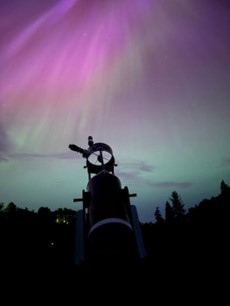
Figure 5: Aurora captured by Adam Shore.
Social media platforms were flooded with images and videos of the auroras, as people from all walks of life documented the event. Professional photographers and casual observers alike captured the sky's transformation, sharing their views and spreading the sense of wonder globally. Since the storm started at 11:30pm and went until the Sun rose, many folks woke up to pictures of neon lights dancing over their houses as they slept. Unfortunately, they might not get a second chance to see it like that again. A major event like has been compared to the Carrington event of 1859, over 150 years ago. However, we are coming up to the peak of the solar cycle activity so who knows? I for one was sceptical this storm was going to result in an aurora, having been overly optimistic once too many times before. When it hit off the charts and was right above us, I had to lie down. Literally! There is still so much we don’t know about the aurora, and our Sun. As technology advances and humanity’s curiosity persists I’m certain we will understand it all one day.
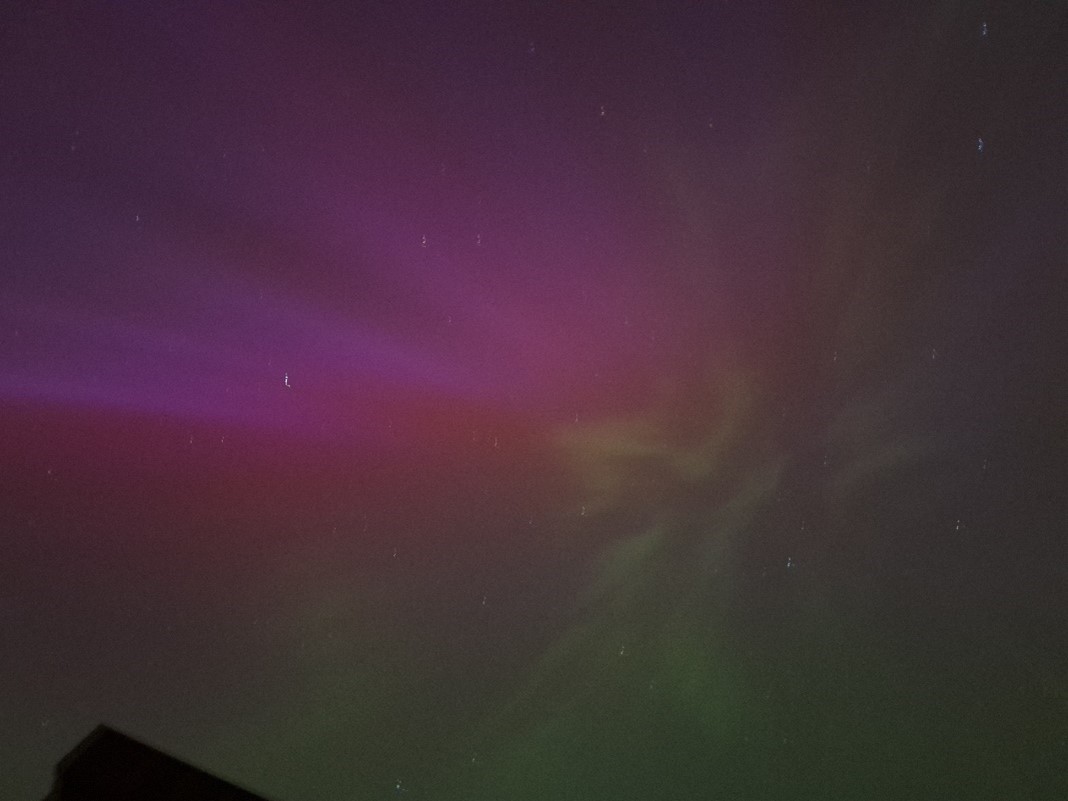
Figure 6: Aurora right above at Kielder Observatory. Taken from the floor by Ishbel Carlyle.
The May 2024 geomagnetic storm will undoubtedly be remembered as one of the most extraordinary natural events of our time. It brought together communities under a shared sky, fostering a collective appreciation for the mysteries and beauty of our universe, and made us appreciate our dark skies here in Northumberland even more. This was definitely one of the best places in the country to have seen it.
[checked_out] => 0 [checked_out_time] => 0000-00-00 00:00:00 [catid] => 34 [created] => 2024-05-28 09:22:35 [created_by] => 52030 [created_by_alias] => [modified] => 2024-05-29 12:00:15 [modified_by] => 21099 [modified_by_name] => Miss Heather Woodfine [publish_up] => 2024-05-28 09:22:35 [publish_down] => 0000-00-00 00:00:00 [images] => {"image_intro":"images\/RGD-Aurora.jpg","float_intro":"","image_intro_alt":"","image_intro_caption":"","image_fulltext":"","float_fulltext":"","image_fulltext_alt":"","image_fulltext_caption":""} [urls] => {"urla":false,"urlatext":"","targeta":"","urlb":false,"urlbtext":"","targetb":"","urlc":false,"urlctext":"","targetc":""} [attribs] => {"show_title":"","link_titles":"","show_tags":"","show_intro":"0","info_block_position":"","info_block_show_title":"","show_category":"","link_category":"","show_parent_category":"","link_parent_category":"","show_author":"","link_author":"","show_create_date":"","show_modify_date":"","show_publish_date":"","show_item_navigation":"","show_icons":"","show_print_icon":"","show_email_icon":"","show_vote":"","show_hits":"","show_noauth":"","urls_position":"","alternative_readmore":"","article_layout":"KIE:news","show_publishing_options":"","show_article_options":"","show_urls_images_backend":"","show_urls_images_frontend":""} [metadata] => {"robots":"","author":"","rights":"","xreference":""} [metakey] => [metadesc] => [access] => 1 [hits] => 4627 [xreference] => [featured] => 0 [language] => * [readmore] => 11907 [state] => 1 [category_title] => Latest News [category_route] => uncategorised/latest-news [category_access] => 1 [category_alias] => latest-news [author] => Hannah Matterson [author_email] => hannah@kielderobservatory.org [parent_title] => ROOT [parent_id] => 1 [parent_route] => [parent_alias] => root [rating] => [rating_count] => [published] => 1 [parents_published] => 1 [alternative_readmore] => [layout] => [params] => Joomla\Registry\Registry Object ( [data:protected] => stdClass Object ( [article_layout] => _:default [show_title] => 1 [link_titles] => 0 [show_intro] => 1 [info_block_position] => 0 [info_block_show_title] => 0 [show_category] => 0 [link_category] => 0 [show_parent_category] => 0 [link_parent_category] => 0 [show_author] => 0 [link_author] => 0 [show_create_date] => 0 [show_modify_date] => 0 [show_publish_date] => 0 [show_item_navigation] => 0 [show_vote] => 0 [show_readmore] => 1 [show_readmore_title] => 0 [readmore_limit] => 100 [show_tags] => 0 [show_icons] => 0 [show_print_icon] => 0 [show_email_icon] => 0 [show_hits] => 0 [show_noauth] => 0 [urls_position] => 0 [show_publishing_options] => 1 [show_article_options] => 1 [save_history] => 1 [history_limit] => 10 [show_urls_images_frontend] => 0 [show_urls_images_backend] => 1 [targeta] => 0 [targetb] => 0 [targetc] => 0 [float_intro] => right [float_fulltext] => none [category_layout] => _:blog [show_category_heading_title_text] => 1 [show_category_title] => 0 [show_description] => 1 [show_description_image] => 0 [maxLevel] => 1 [show_empty_categories] => 0 [show_no_articles] => 1 [show_subcat_desc] => 1 [show_cat_num_articles] => 0 [show_cat_tags] => 1 [show_base_description] => 1 [maxLevelcat] => -1 [show_empty_categories_cat] => 0 [show_subcat_desc_cat] => 1 [show_cat_num_articles_cat] => 1 [num_leading_articles] => 0 [num_intro_articles] => 27 [num_columns] => 1 [num_links] => 4 [multi_column_order] => 0 [show_subcategory_content] => 0 [show_pagination_limit] => 1 [filter_field] => hide [show_headings] => 1 [list_show_date] => 0 [date_format] => [list_show_hits] => 1 [list_show_author] => 1 [orderby_pri] => order [orderby_sec] => rdate [order_date] => published [show_pagination] => 1 [show_pagination_results] => 1 [show_featured] => show [show_feed_link] => 1 [feed_summary] => 0 [feed_show_readmore] => 0 [show_page_heading] => 0 [layout_type] => blog [menu_text] => 1 [menu_show] => 0 [secure] => 0 [page_title] => Latest News [page_description] => Kielder Observatory Astronomical Society [page_rights] => [robots] => [access-view] => 1 ) [separator] => . ) [displayDate] => 2024-05-28 09:22:35 [slug] => 348:the-major-geomagnetic-storm-of-may-2024-a-spectacle-for-the-ages [parent_slug] => [catslug] => 34:latest-news [event] => stdClass Object ( [afterDisplayTitle] => [beforeDisplayContent] => [afterDisplayContent] => ) [text] =>
Many of you may have witnessed the spectacular sight of the Northern Lights recently. Here, astronomer Ishbel Carlyle talks us through what happened, why and hears others' accounts of that night.
)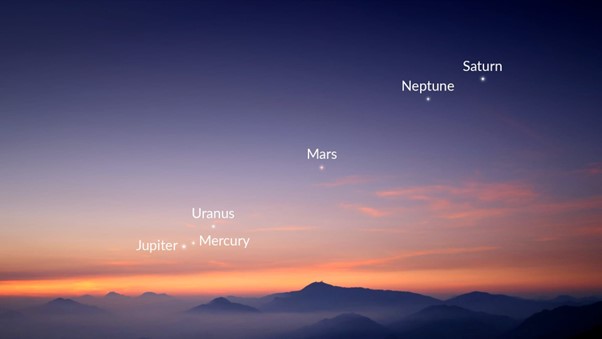
What's Up? June 2024
Summer is upon us! let us take a look at what’s parading across our skies this month.
Read Time
3 minutes
Summer is upon us! let us take a look at what’s parading across our skies this month.
[fulltext] =>
Summer Solstice:
June 20th marks the first day of Summer in the northern Hemisphere (And first day of Winter in the southern). A sad day for Astronomers in the North as there technically isn’t any Night at all! The Sun will set at around 21:50 (Newcastle latitude as reference) and then rise just 4 hours and 40 minutes later at 04.30. Due to the path of the Sun making that big sweep across the sky during the day, it barely goes down 10 degrees below the horizon in the North before its back up again. In fact, it’s such a shallow sweep of the horizon line it will barely get dark at all. However, it does mean that the longest day will be behind us and the nights are coming back.
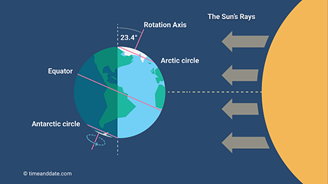
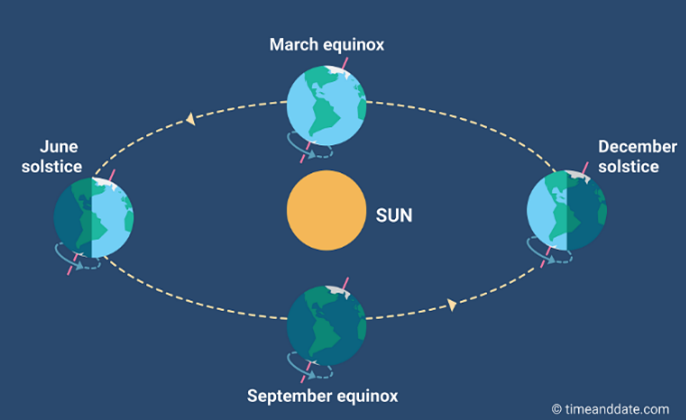
Figure 1: The Earth being tilted towards the Sun means more illumination for all in the North and less illumination for those in the South. Images from timeanddate.com
Constellations:
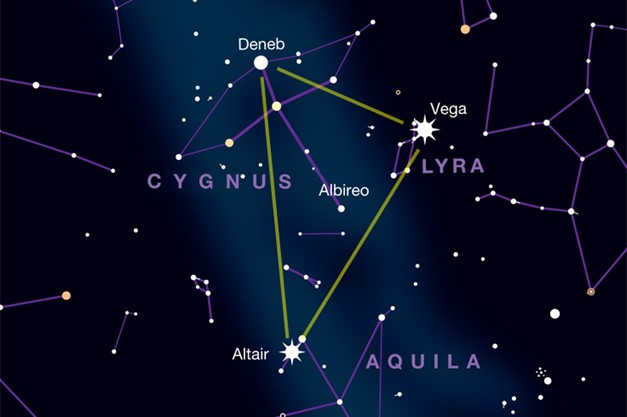
Figure 2: The Summer Triangle
Summer is the best time to go hunting for the summer triangle. This is a large triangle of 3 of the brightest stars in the sky, Vega in the constellation Lyra the harp, Deneb in the constellation Cygnus the Swan and Altair in the constellation Aquila the Eagle. The story goes that on midsummer night the triangle is right over head and was used a time keeping tool in the past.
Planets:
They’re coming back! As we move our way round the Sun, we are catching up with our celestial siblings who will now appear again in the night sky, rather than hiding behind the Sun in the day time sky. Imagine the Planets are pulling the sun across the Sky, so the best time to see them is going to be in the morning rather than at night. Saturn is leading the charge coming over the horizon at around 2.40am at the beginning of the months, followed by Neptune, Mars, Uranus, Jupiter, and Mercury before the Sun comes up. The following image shows the Planet parade on June 3rd in the wee hours of the morning.

Figure 3: Mercury, Mars, Jupiter, Saturn, Uranus, and Neptune in a planetary alignment on June 3, 2024, as seen from the Northern Hemisphere. The image is based on data from the Sky Tonight app
On the 2nd to 3rd of June Mars and the Moon will be having a conjunction, meaning the moon is going to pass remarkably close by Mars on the Sky. The closest approach will only be seen in the Southern Hemisphere but in the Northern hemisphere we will still see mars and the Moon close to each other. You might be able to fit both in a pair of binoculars.
On the 27th of June, the moon does the same but with Saturn instead, again the closest approach happening beneath our feet in the Southern hemisphere.
Moon Phases:
6th: New Moon
14th: Half Moon
22nd: Full Moon
28th: Half Moon
The full moon this month is known as the Strawberry Moon. The origins come from multiple cultures such as Native American and European. June is when Strawberries ripen and picking season begins. Other names are Berries Ripen Moon, Corn moon, Flower Moon, Planting moon and Mead moon, all derived from the situation of nature at the time of the full moon of June.
Clears Skies and Happy Stargazing!
[checked_out] => 0 [checked_out_time] => 0000-00-00 00:00:00 [catid] => 34 [created] => 2024-05-28 08:51:07 [created_by] => 52030 [created_by_alias] => [modified] => 2024-05-28 09:09:09 [modified_by] => 52030 [modified_by_name] => Hannah Matterson [publish_up] => 2024-05-28 08:51:07 [publish_down] => 0000-00-00 00:00:00 [images] => {"image_intro":"images\/Summer-planets.jpg","float_intro":"","image_intro_alt":"","image_intro_caption":"","image_fulltext":"","float_fulltext":"","image_fulltext_alt":"","image_fulltext_caption":""} [urls] => {"urla":false,"urlatext":"","targeta":"","urlb":false,"urlbtext":"","targetb":"","urlc":false,"urlctext":"","targetc":""} [attribs] => {"show_title":"","link_titles":"","show_tags":"","show_intro":"","info_block_position":"","info_block_show_title":"","show_category":"","link_category":"","show_parent_category":"","link_parent_category":"","show_author":"","link_author":"","show_create_date":"","show_modify_date":"","show_publish_date":"","show_item_navigation":"","show_icons":"","show_print_icon":"","show_email_icon":"","show_vote":"","show_hits":"","show_noauth":"","urls_position":"","alternative_readmore":"","article_layout":"","show_publishing_options":"","show_article_options":"","show_urls_images_backend":"","show_urls_images_frontend":""} [metadata] => {"robots":"","author":"","rights":"","xreference":""} [metakey] => [metadesc] => [access] => 1 [hits] => 2361 [xreference] => [featured] => 0 [language] => * [readmore] => 5386 [state] => 1 [category_title] => Latest News [category_route] => uncategorised/latest-news [category_access] => 1 [category_alias] => latest-news [author] => Hannah Matterson [author_email] => hannah@kielderobservatory.org [parent_title] => ROOT [parent_id] => 1 [parent_route] => [parent_alias] => root [rating] => [rating_count] => [published] => 1 [parents_published] => 1 [alternative_readmore] => [layout] => [params] => Joomla\Registry\Registry Object ( [data:protected] => stdClass Object ( [article_layout] => _:default [show_title] => 1 [link_titles] => 0 [show_intro] => 1 [info_block_position] => 0 [info_block_show_title] => 0 [show_category] => 0 [link_category] => 0 [show_parent_category] => 0 [link_parent_category] => 0 [show_author] => 0 [link_author] => 0 [show_create_date] => 0 [show_modify_date] => 0 [show_publish_date] => 0 [show_item_navigation] => 0 [show_vote] => 0 [show_readmore] => 1 [show_readmore_title] => 0 [readmore_limit] => 100 [show_tags] => 0 [show_icons] => 0 [show_print_icon] => 0 [show_email_icon] => 0 [show_hits] => 0 [show_noauth] => 0 [urls_position] => 0 [show_publishing_options] => 1 [show_article_options] => 1 [save_history] => 1 [history_limit] => 10 [show_urls_images_frontend] => 0 [show_urls_images_backend] => 1 [targeta] => 0 [targetb] => 0 [targetc] => 0 [float_intro] => right [float_fulltext] => none [category_layout] => _:blog [show_category_heading_title_text] => 1 [show_category_title] => 0 [show_description] => 1 [show_description_image] => 0 [maxLevel] => 1 [show_empty_categories] => 0 [show_no_articles] => 1 [show_subcat_desc] => 1 [show_cat_num_articles] => 0 [show_cat_tags] => 1 [show_base_description] => 1 [maxLevelcat] => -1 [show_empty_categories_cat] => 0 [show_subcat_desc_cat] => 1 [show_cat_num_articles_cat] => 1 [num_leading_articles] => 0 [num_intro_articles] => 27 [num_columns] => 1 [num_links] => 4 [multi_column_order] => 0 [show_subcategory_content] => 0 [show_pagination_limit] => 1 [filter_field] => hide [show_headings] => 1 [list_show_date] => 0 [date_format] => [list_show_hits] => 1 [list_show_author] => 1 [orderby_pri] => order [orderby_sec] => rdate [order_date] => published [show_pagination] => 1 [show_pagination_results] => 1 [show_featured] => show [show_feed_link] => 1 [feed_summary] => 0 [feed_show_readmore] => 0 [show_page_heading] => 0 [layout_type] => blog [menu_text] => 1 [menu_show] => 0 [secure] => 0 [page_title] => Latest News [page_description] => Kielder Observatory Astronomical Society [page_rights] => [robots] => [access-view] => 1 ) [separator] => . ) [displayDate] => 2024-05-28 08:51:07 [slug] => 347:what-s-up-june-2024 [parent_slug] => [catslug] => 34:latest-news [event] => stdClass Object ( [afterDisplayTitle] => [beforeDisplayContent] => [afterDisplayContent] => ) [text] =>
Summer is upon us! let us take a look at what’s parading across our skies this month.
)
Stargazers prepare for ‘summertime aurora’
STARGAZERS across the North East and beyond will be able to spot rare ‘night shining’ clouds over the next few weeks.
Read Time
2 minutes
STARGAZERS across the North East and beyond will be able to spot rare ‘night shining’ clouds over the next few weeks.
[fulltext] =>
The ethereal phenomena, noctilucent clouds, exist in the upper atmosphere of the Earth and are visible during the summer months after sunset.
As Director of Astrophotography at Kielder Observatory, in Northumberland, Dan Monk is preparing to capture the glowing clouds, which will appear from Mid-May to early August.
“Noctilucent clouds are the only type of cloud astronomers like to see, because it has to be a clear night to see them,” he said.
“They produce striking, shimmery silver colours across the sky. They’re a lovely thing to see and we sometimes refer to them as the summertime aurora. I’m always excited to see them and they’re beautiful things to photograph!”
The phenomena are the highest clouds in the Earth’s atmosphere – as high as 50 miles above the surface – and occupy the area of atmosphere known as the mesosphere. They are formed from tiny particles of meteor dust which create a foundation for the production of ice crystals.
Said Dan: “In summertime, the mesosphere is actually cooler than in winter, which is why noctilucent clouds are able to form. Another reason they can only be seen in summer, is due to the position of the sun being close enough to the horizon where it illuminates them from underneath. They are typically only observed between latitudes between 45° and 65°, making the North East and the rest of the UK an ideal place to see them.”
[checked_out] => 0 [checked_out_time] => 0000-00-00 00:00:00 [catid] => 34 [created] => 2024-05-20 12:30:06 [created_by] => 52030 [created_by_alias] => [modified] => 2024-05-20 12:33:26 [modified_by] => 52030 [modified_by_name] => Hannah Matterson [publish_up] => 2024-05-20 12:33:26 [publish_down] => 0000-00-00 00:00:00 [images] => {"image_intro":"images\/Noctilucent-Clouds.jpg","float_intro":"","image_intro_alt":"","image_intro_caption":"","image_fulltext":"images\/Noctilucent-Clouds.jpg","float_fulltext":"","image_fulltext_alt":"","image_fulltext_caption":""} [urls] => {"urla":false,"urlatext":"","targeta":"","urlb":false,"urlbtext":"","targetb":"","urlc":false,"urlctext":"","targetc":""} [attribs] => {"show_title":"","link_titles":"","show_tags":"","show_intro":"","info_block_position":"","info_block_show_title":"","show_category":"","link_category":"","show_parent_category":"","link_parent_category":"","show_author":"","link_author":"","show_create_date":"","show_modify_date":"","show_publish_date":"","show_item_navigation":"","show_icons":"","show_print_icon":"","show_email_icon":"","show_vote":"","show_hits":"","show_noauth":"","urls_position":"","alternative_readmore":"","article_layout":"","show_publishing_options":"","show_article_options":"","show_urls_images_backend":"","show_urls_images_frontend":""} [metadata] => {"robots":"","author":"","rights":"","xreference":""} [metakey] => [metadesc] => [access] => 1 [hits] => 1866 [xreference] => [featured] => 0 [language] => * [readmore] => 1644 [state] => 1 [category_title] => Latest News [category_route] => uncategorised/latest-news [category_access] => 1 [category_alias] => latest-news [author] => Hannah Matterson [author_email] => hannah@kielderobservatory.org [parent_title] => ROOT [parent_id] => 1 [parent_route] => [parent_alias] => root [rating] => [rating_count] => [published] => 1 [parents_published] => 1 [alternative_readmore] => [layout] => [params] => Joomla\Registry\Registry Object ( [data:protected] => stdClass Object ( [article_layout] => _:default [show_title] => 1 [link_titles] => 0 [show_intro] => 1 [info_block_position] => 0 [info_block_show_title] => 0 [show_category] => 0 [link_category] => 0 [show_parent_category] => 0 [link_parent_category] => 0 [show_author] => 0 [link_author] => 0 [show_create_date] => 0 [show_modify_date] => 0 [show_publish_date] => 0 [show_item_navigation] => 0 [show_vote] => 0 [show_readmore] => 1 [show_readmore_title] => 0 [readmore_limit] => 100 [show_tags] => 0 [show_icons] => 0 [show_print_icon] => 0 [show_email_icon] => 0 [show_hits] => 0 [show_noauth] => 0 [urls_position] => 0 [show_publishing_options] => 1 [show_article_options] => 1 [save_history] => 1 [history_limit] => 10 [show_urls_images_frontend] => 0 [show_urls_images_backend] => 1 [targeta] => 0 [targetb] => 0 [targetc] => 0 [float_intro] => right [float_fulltext] => none [category_layout] => _:blog [show_category_heading_title_text] => 1 [show_category_title] => 0 [show_description] => 1 [show_description_image] => 0 [maxLevel] => 1 [show_empty_categories] => 0 [show_no_articles] => 1 [show_subcat_desc] => 1 [show_cat_num_articles] => 0 [show_cat_tags] => 1 [show_base_description] => 1 [maxLevelcat] => -1 [show_empty_categories_cat] => 0 [show_subcat_desc_cat] => 1 [show_cat_num_articles_cat] => 1 [num_leading_articles] => 0 [num_intro_articles] => 27 [num_columns] => 1 [num_links] => 4 [multi_column_order] => 0 [show_subcategory_content] => 0 [show_pagination_limit] => 1 [filter_field] => hide [show_headings] => 1 [list_show_date] => 0 [date_format] => [list_show_hits] => 1 [list_show_author] => 1 [orderby_pri] => order [orderby_sec] => rdate [order_date] => published [show_pagination] => 1 [show_pagination_results] => 1 [show_featured] => show [show_feed_link] => 1 [feed_summary] => 0 [feed_show_readmore] => 0 [show_page_heading] => 0 [layout_type] => blog [menu_text] => 1 [menu_show] => 0 [secure] => 0 [page_title] => Latest News [page_description] => Kielder Observatory Astronomical Society [page_rights] => [robots] => [access-view] => 1 ) [separator] => . ) [displayDate] => 2024-05-20 12:30:06 [slug] => 346:stargazers-prepare-for-summertime-aurora [parent_slug] => [catslug] => 34:latest-news [event] => stdClass Object ( [afterDisplayTitle] => [beforeDisplayContent] => [afterDisplayContent] => ) [text] =>STARGAZERS across the North East and beyond will be able to spot rare ‘night shining’ clouds over the next few weeks.
)
What's Up? May 2024
Time again for our monthly What’s Up! It’s May, and days are getting light now, so we’re having to stay up quite late to get astronomical darkness. Still, there’s lots of objects and constellations to see! It’s well and truly galaxy season now, so if you love huge islands of stars of many different shapes and sizes, this is the month for you!
Read Time
5 minutes
Time again for our monthly What’s Up! It’s May, and days are getting light now, so we’re having to stay up quite late to get astronomical darkness. Still, there’s lots of objects and constellations to see! It’s well and truly galaxy season now, so if you love huge islands of stars of many different shapes and sizes, this is the month for you!
[fulltext] =>
Galaxies
It’s galaxy season! At this time of year, the UK gets many incredible galaxies in view due to the location of the Earth in its orbit around the sun. You’ll need a small telescope to view most of these as they are not visible to the naked eye. Here are a few of our favourites to see at the observatory!
M81 and M82
These two galaxies can be found in the constellation of Ursa Major – the Great Bear. This is an easy constellation to spot because part of it makes a saucepan shape in the sky, otherwise known as the plough or the big dipper. You can use this constellation to find M81 and M82 which are just to the top right, like you can see in the diagram below.

Image: Ursa Major, showing where M81 and M82 can be found. Credit: Stellarium
M81 and M82 are neighbours of the galactic kind. They are very close to each other and therefore gravitationally bound. Both sit at about 12 million light years away from us! M81 is known as the Bode’s galaxy because it was discovered by astronomer Johann Bode. It is very luminous and has a beautiful great spiral structure. M82 is a starburst galaxy and due to its elongated shape is known as the Cigar galaxy. Starburst means there are lots of stars being born at a fast pace, much more than the usual rate of star formation. Scientists think the massive number of new stars being born is due to the gravitational interactions with close-by neighbour Bode’s.

Image: Cigar galaxy left (M82), Bode galaxy right (M81). Credit: Sky and Telescope
Leo triplet
The Leo triplet is a trio of galaxies that can be found in the constellation of Leo the Lion. They are all located about 30 million light years away. The three galaxies are M66, M65 and NGC 3628 (also known as the Hamburger galaxy because of it’s shape due to it being edge on!). They are all spiral galaxies and due to their close proximity have a gravitational effect on one another.

Image: The Leo Triplet, Credit: Mukund Raguram, The Sky at Night Magazine
Whirlpool M51

Image: The Whirlpool galaxy, Credit: Steve Porter, The Sky at Night Magazine
Our final object on our galaxy list, though there are many, many more to choose from, is the Whirlpool galaxy. So called due to looking very much like a whirlpool as you can see in the picture above. This is a very beautiful face-on spiral galaxy, and perhaps the most photographed galaxy in the world (or at least top 3).

Credit: NASA, Stellarium
The Whirlpool Galaxy is 31 million lightyears from Earth in the constellation Canes Venatici and is observable through a small telescope. It’s very recognisable because it’s completely face-on to us revealing the striking spiral structure, but also because it looks like it’s currently mid meal, eating up another galaxy. This is NGC 5195, a yellowish dwarf galaxy which is interacting with the Whirlpool at the very tip of one if it’s arms. From images by the Hubble Space Telescope, we know that NGC 5195 is slowly passing behind the Whirlpool.
Eta Aquarids Meteor Shower
On May the 6th there is the peak of the Eta Aquarids Meteor Shower. This is a shower that is mostly seen in the Southern Hemisphere, but a few shooting stars will be visible from the UK. At it’s peak it will hopefully reach around 20/30 meteors per hour. The shower is produced by debris from the Comet Halley as it orbits round the Sun and the Earth passes through the particles of dust and ice annually.
Although slightly more difficult to see than countries further south, the good news is the peak lands on a nearly new moon this year, which means the skies should be nice and dark. To try and spot them go to a dark (and clear!) location with little light pollution and look towards the eastern horizon. Meteors will radiate from the constellation Aquarius, which doesn’t rise until around 3am. If you want a good chance to see them grab a cup of coffee and keep a lookout from about midnight onwards.

Image: Meteor shower radiant point, Credit: Royal Museums Greenwich, Stellarium
Our Solar System
The planets are relatively shy this month, unless you want to get up very early in the morning. Saturn is making an appearance around 3am towards the end of May in the Constellation Aquarius.
The planet Mercury reaches greatest western elongation on the 9th of May. This is the best time to view Mercury since it will be at its highest point above the horizon in the morning sky. Look for the planet low in the eastern sky just before sunrise.
Moon Phases
· May 1st - Last Quarter
· May 8th – New Moon
· May 15th – First Quarter
· May 23rd – Full Moon
· May 30th – Last Quarter
[checked_out] => 0 [checked_out_time] => 0000-00-00 00:00:00 [catid] => 34 [created] => 2024-05-01 09:11:17 [created_by] => 52030 [created_by_alias] => [modified] => 2024-05-01 09:13:24 [modified_by] => 52030 [modified_by_name] => Hannah Matterson [publish_up] => 2024-05-01 09:11:17 [publish_down] => 0000-00-00 00:00:00 [images] => {"image_intro":"images\/Whirlpool1.png","float_intro":"","image_intro_alt":"","image_intro_caption":"","image_fulltext":"images\/Whirlpool1.png","float_fulltext":"","image_fulltext_alt":"","image_fulltext_caption":""} [urls] => {"urla":false,"urlatext":"","targeta":"","urlb":false,"urlbtext":"","targetb":"","urlc":false,"urlctext":"","targetc":""} [attribs] => {"show_title":"","link_titles":"","show_tags":"","show_intro":"","info_block_position":"","info_block_show_title":"","show_category":"","link_category":"","show_parent_category":"","link_parent_category":"","show_author":"","link_author":"","show_create_date":"","show_modify_date":"","show_publish_date":"","show_item_navigation":"","show_icons":"","show_print_icon":"","show_email_icon":"","show_vote":"","show_hits":"","show_noauth":"","urls_position":"","alternative_readmore":"","article_layout":"","show_publishing_options":"","show_article_options":"","show_urls_images_backend":"","show_urls_images_frontend":""} [metadata] => {"robots":"","author":"","rights":"","xreference":""} [metakey] => [metadesc] => [access] => 1 [hits] => 1153 [xreference] => [featured] => 0 [language] => * [readmore] => 12274 [state] => 1 [category_title] => Latest News [category_route] => uncategorised/latest-news [category_access] => 1 [category_alias] => latest-news [author] => Hannah Matterson [author_email] => hannah@kielderobservatory.org [parent_title] => ROOT [parent_id] => 1 [parent_route] => [parent_alias] => root [rating] => [rating_count] => [published] => 1 [parents_published] => 1 [alternative_readmore] => [layout] => [params] => Joomla\Registry\Registry Object ( [data:protected] => stdClass Object ( [article_layout] => _:default [show_title] => 1 [link_titles] => 0 [show_intro] => 1 [info_block_position] => 0 [info_block_show_title] => 0 [show_category] => 0 [link_category] => 0 [show_parent_category] => 0 [link_parent_category] => 0 [show_author] => 0 [link_author] => 0 [show_create_date] => 0 [show_modify_date] => 0 [show_publish_date] => 0 [show_item_navigation] => 0 [show_vote] => 0 [show_readmore] => 1 [show_readmore_title] => 0 [readmore_limit] => 100 [show_tags] => 0 [show_icons] => 0 [show_print_icon] => 0 [show_email_icon] => 0 [show_hits] => 0 [show_noauth] => 0 [urls_position] => 0 [show_publishing_options] => 1 [show_article_options] => 1 [save_history] => 1 [history_limit] => 10 [show_urls_images_frontend] => 0 [show_urls_images_backend] => 1 [targeta] => 0 [targetb] => 0 [targetc] => 0 [float_intro] => right [float_fulltext] => none [category_layout] => _:blog [show_category_heading_title_text] => 1 [show_category_title] => 0 [show_description] => 1 [show_description_image] => 0 [maxLevel] => 1 [show_empty_categories] => 0 [show_no_articles] => 1 [show_subcat_desc] => 1 [show_cat_num_articles] => 0 [show_cat_tags] => 1 [show_base_description] => 1 [maxLevelcat] => -1 [show_empty_categories_cat] => 0 [show_subcat_desc_cat] => 1 [show_cat_num_articles_cat] => 1 [num_leading_articles] => 0 [num_intro_articles] => 27 [num_columns] => 1 [num_links] => 4 [multi_column_order] => 0 [show_subcategory_content] => 0 [show_pagination_limit] => 1 [filter_field] => hide [show_headings] => 1 [list_show_date] => 0 [date_format] => [list_show_hits] => 1 [list_show_author] => 1 [orderby_pri] => order [orderby_sec] => rdate [order_date] => published [show_pagination] => 1 [show_pagination_results] => 1 [show_featured] => show [show_feed_link] => 1 [feed_summary] => 0 [feed_show_readmore] => 0 [show_page_heading] => 0 [layout_type] => blog [menu_text] => 1 [menu_show] => 0 [secure] => 0 [page_title] => Latest News [page_description] => Kielder Observatory Astronomical Society [page_rights] => [robots] => [access-view] => 1 ) [separator] => . ) [displayDate] => 2024-05-01 09:11:17 [slug] => 342:what-s-up-may-24 [parent_slug] => [catslug] => 34:latest-news [event] => stdClass Object ( [afterDisplayTitle] => [beforeDisplayContent] => [afterDisplayContent] => ) [text] =>Time again for our monthly What’s Up! It’s May, and days are getting light now, so we’re having to stay up quite late to get astronomical darkness. Still, there’s lots of objects and constellations to see! It’s well and truly galaxy season now, so if you love huge islands of stars of many different shapes and sizes, this is the month for you!
)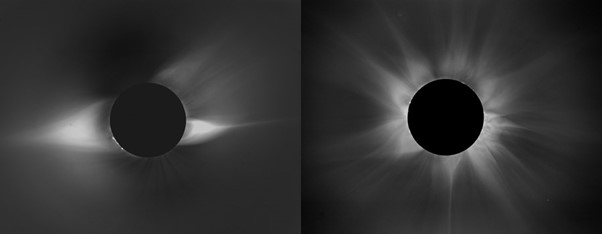
Capturing a solar eclipse
Astronomer, Ellie, talks us through what exactly a solar eclipse is ahead of her visit to the USA to see it for herself.
Read Time
5 minutes
Astronomer, Ellie, talks us through what exactly a solar eclipse is ahead of her visit to the USA to see it for herself.
[fulltext] =>Hello, my name’s Ellie and some of you may know me as an Astronomer at Kielder Observatory. I have worked at the obsy for almost 5 years now, and in that time I have seen a lot! The aurora, milky way, meteor showers, galaxies, nebulae, there is no doubt that I have been very lucky. However, one thing on my to-see bucket list remains elusive- a total solar eclipse.
The last UK total solar eclipse was in 1999, and while I know many who have fond memories of it, I was not yet 2 and had not gained the cognitive ability to observe the eclipse and form long-term memories. The next one is not due until 2090, at which point I will be 92. This is rather a long way away and I am not a patient person, so I have resolved to travel for my eclipse.
And so it is that this April I will travel to the US in my first attempt to observe that moment of totality, and I will be taking you all along with me (virtually)! If all goes to plan, you will be able to follow my journey through the US on our social media pages, culminating in a livestream of the event itself on the 8th April.

But what is a total solar eclipse? Why are they rare? Why do I even want to see one?
Total solar eclipses happen as the Moon passes between the Sun and the Earth, casting a shadow on certain lucky areas who then see the disk of the Sun completely obscured by the Moon. Such a phenomenon would be a monthly occurrence if the Moon and the Earth’s orbital planes aligned, but in reality the Moon’s orbital plane is at a 5° tilt meaning the shadow usually misses us.
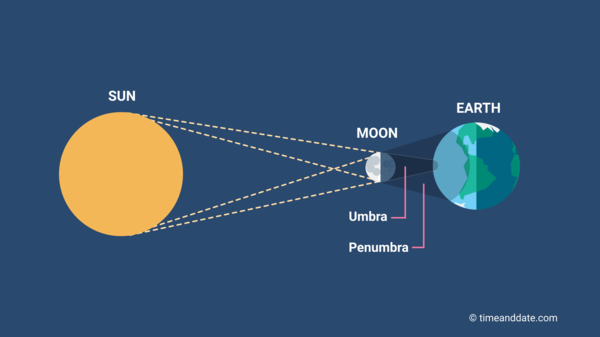
Even with that in mind, total solar eclipses do happen every 18 months on average, but they don’t always pass through such a conveniently large area of populated land as America. This year’s eclipse looks set to be the one of the most widely witnessed ever with over 32 million people living along the path of totality, and many more travelling in to see it like myself.
One of the highlights of a total solar eclipse, so I am told, is seeing the Sun’s corona which is its outermost atmosphere. The corona is much dimmer than the surface of the Sun and so usually is not visible to us on Earth, however with the Sun momentarily blotted out it has its moment to shine. This year I am hoping for a particularly spectacular corona as the Sun is approaching the peak of its 11-year activity cycle. The corona is the target of my first ever attempt at astrophotography- our director of astrophotography Dan Monk reckons he has figured out a fool-proof way for me to get it so keep an eye out for that on the socials.

(left) A solar corona at solar minimum vs (right) a solar corona at solar maximum (image: NCAR's High Altitude Observatory and Rhodes College)
My desire to get a picture of the Suns corona isn’t much about the corona itself, it’s more to do with the stars in the background. In 1919 British astronomers Frank Watson Dyson and Arthur Stanley Eddington used a solar eclipse to provide evidence for Einsteins theory of general relativity by looking at the stars close to the Sun at the moment of totality, and it is my aim to recreate this.

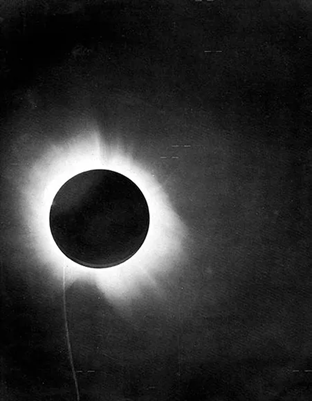
(left) New York Times article about the experiment and (right) one of Eddington’s pictures
Einstein’s theory of general relativity predicts that massive objects should bend the path of light around them. This results in stars appearing in different positions to normal when in the presence of the Sun. On a normal day you can not test this because the Sun is simply too bright for you to observe the stars around it, but when the Moon blocks it out you have sufficient darkness. By obtaining a picture of the Sun at totality, I hope to be able to measure how much the Sun has shifted the stars just as Dyson and Eddington did and show that,105 years on, Einstein is still correct.
Beyond being simply an amazing opportunity to finally see a total solar eclipse, this trip is somewhat of a full-circle moment for me as a Kielder astronomer. I interviewed for this role on the 11th May 2019 and as part of the interview process I was asked to present something to the public during an event. The title of my presentation was “Eclipsploration”, and I talked about how eclipses have been used throughout history as a tool to further our understanding of the cosmos. One of the examples I even gave was of Eddington’s pictures!
By the time you are reading this I will already be across the Atlantic, enjoying a short break before it all kicks off. I hope that you join me for the journey and that you tune in for my (hopefully perfectly clear) livestream on the 8th. Please send good vibes to whoever controls the clouds and ask them to keep them away.
[checked_out] => 0 [checked_out_time] => 0000-00-00 00:00:00 [catid] => 34 [created] => 2024-04-03 11:42:13 [created_by] => 52030 [created_by_alias] => [modified] => 2024-04-03 11:43:11 [modified_by] => 52030 [modified_by_name] => Hannah Matterson [publish_up] => 2024-04-03 11:42:13 [publish_down] => 0000-00-00 00:00:00 [images] => {"image_intro":"images\/Solar-Eclipse-2.jpg","float_intro":"","image_intro_alt":"","image_intro_caption":"","image_fulltext":"","float_fulltext":"","image_fulltext_alt":"","image_fulltext_caption":""} [urls] => {"urla":false,"urlatext":"","targeta":"","urlb":false,"urlbtext":"","targetb":"","urlc":false,"urlctext":"","targetc":""} [attribs] => {"show_title":"","link_titles":"","show_tags":"","show_intro":"","info_block_position":"","info_block_show_title":"","show_category":"","link_category":"","show_parent_category":"","link_parent_category":"","show_author":"","link_author":"","show_create_date":"","show_modify_date":"","show_publish_date":"","show_item_navigation":"","show_icons":"","show_print_icon":"","show_email_icon":"","show_vote":"","show_hits":"","show_noauth":"","urls_position":"","alternative_readmore":"","article_layout":"","show_publishing_options":"","show_article_options":"","show_urls_images_backend":"","show_urls_images_frontend":""} [metadata] => {"robots":"","author":"","rights":"","xreference":""} [metakey] => [metadesc] => [access] => 1 [hits] => 2147 [xreference] => [featured] => 0 [language] => * [readmore] => 5969 [state] => 1 [category_title] => Latest News [category_route] => uncategorised/latest-news [category_access] => 1 [category_alias] => latest-news [author] => Hannah Matterson [author_email] => hannah@kielderobservatory.org [parent_title] => ROOT [parent_id] => 1 [parent_route] => [parent_alias] => root [rating] => [rating_count] => [published] => 1 [parents_published] => 1 [alternative_readmore] => [layout] => [params] => Joomla\Registry\Registry Object ( [data:protected] => stdClass Object ( [article_layout] => _:default [show_title] => 1 [link_titles] => 0 [show_intro] => 1 [info_block_position] => 0 [info_block_show_title] => 0 [show_category] => 0 [link_category] => 0 [show_parent_category] => 0 [link_parent_category] => 0 [show_author] => 0 [link_author] => 0 [show_create_date] => 0 [show_modify_date] => 0 [show_publish_date] => 0 [show_item_navigation] => 0 [show_vote] => 0 [show_readmore] => 1 [show_readmore_title] => 0 [readmore_limit] => 100 [show_tags] => 0 [show_icons] => 0 [show_print_icon] => 0 [show_email_icon] => 0 [show_hits] => 0 [show_noauth] => 0 [urls_position] => 0 [show_publishing_options] => 1 [show_article_options] => 1 [save_history] => 1 [history_limit] => 10 [show_urls_images_frontend] => 0 [show_urls_images_backend] => 1 [targeta] => 0 [targetb] => 0 [targetc] => 0 [float_intro] => right [float_fulltext] => none [category_layout] => _:blog [show_category_heading_title_text] => 1 [show_category_title] => 0 [show_description] => 1 [show_description_image] => 0 [maxLevel] => 1 [show_empty_categories] => 0 [show_no_articles] => 1 [show_subcat_desc] => 1 [show_cat_num_articles] => 0 [show_cat_tags] => 1 [show_base_description] => 1 [maxLevelcat] => -1 [show_empty_categories_cat] => 0 [show_subcat_desc_cat] => 1 [show_cat_num_articles_cat] => 1 [num_leading_articles] => 0 [num_intro_articles] => 27 [num_columns] => 1 [num_links] => 4 [multi_column_order] => 0 [show_subcategory_content] => 0 [show_pagination_limit] => 1 [filter_field] => hide [show_headings] => 1 [list_show_date] => 0 [date_format] => [list_show_hits] => 1 [list_show_author] => 1 [orderby_pri] => order [orderby_sec] => rdate [order_date] => published [show_pagination] => 1 [show_pagination_results] => 1 [show_featured] => show [show_feed_link] => 1 [feed_summary] => 0 [feed_show_readmore] => 0 [show_page_heading] => 0 [layout_type] => blog [menu_text] => 1 [menu_show] => 0 [secure] => 0 [page_title] => Latest News [page_description] => Kielder Observatory Astronomical Society [page_rights] => [robots] => [access-view] => 1 ) [separator] => . ) [displayDate] => 2024-04-03 11:42:13 [slug] => 340:capturing-a-solar-eclipse [parent_slug] => [catslug] => 34:latest-news [event] => stdClass Object ( [afterDisplayTitle] => [beforeDisplayContent] => [afterDisplayContent] => ) [text] =>
Astronomer, Ellie, talks us through what exactly a solar eclipse is ahead of her visit to the USA to see it for herself.
)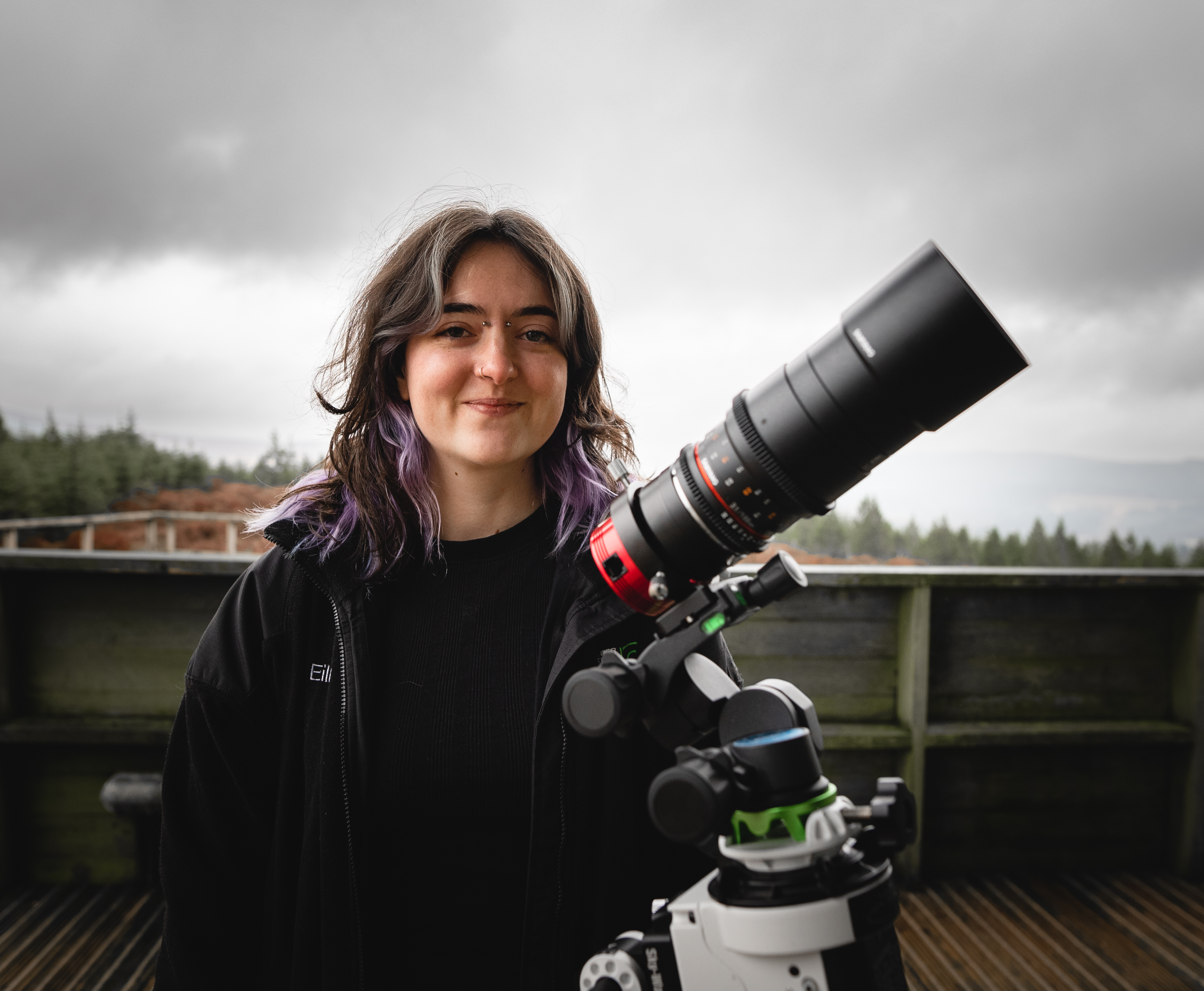
North East astronomy fans prepare for rare eclipse livestream
A RARE solar eclipse which will be seen across America next month will be captured by a Northumberland astronomer and beamed back live to the North East.
Read Time
3 minutes
A RARE solar eclipse which will be seen across America next month will be captured by a Northumberland astronomer and beamed back live to the North East.
[fulltext] =>
Ellie MacDonald, 26, of Hexham, will be travelling to Texas on April 8 on behalf of Kielder Observatory, the Northumberland attraction and educational charity, where she will be keeping her fingers crossed for clear skies so she can capture the rare event on camera for viewers across the world.
While lunar eclipses are more common, the last solar eclipse was in 1999 and could be viewed in the UK in parts of Cornwall. Next month's eclipse will only be viewed in a band of sky running from south to north America and is unlikely to appear again for two decades.

Ellie, a Science Communicator and Science Lead at Kielder Observatory, will be taking a planetary camera, a 100mm lens and her dark eclipse glasses with her to protect her eyes.
She said: "There will be thousands of people travelling to see it from across the world. It will be the first time anyone from Kielder has attempted to livestream it and the first time we've tried live streaming from a different country.
"I've never seen one before so I'm very excited. Everyone says how amazing it was in 1999 and a lot of people remember going to see it in Cornwall. Hopefully the livestream will be the next best thing!"
"We decided that Texas would be the best place to get a clear sky, but we'll be looking at forecasts about five days beforehand and will make a final decision on exactly where to see it later."
Solar eclipses happen when the moon travels between the earth and the sun, blocking out the sun. The eclipse will last for up to four minutes, though it will take up to two hours to reach totality. Astronomers at Kielder will be on hand to answer questions about the eclipse during the livestream.
Dan Monk, Director of Astrophotography at Kielder, said: "Everybody loves chasing eclipses. We have partial solar eclipses every couple of years, and we can see them from the UK, but total eclipses are rare."
As well as live streaming the eclipse, Ellie will be attempting to recreate astronomer Arthur Eddington's experiment to show that light rays from distant stars are bent near massive objects like the Sun, providing evidence for Einstein's theory of general relativity.
Leigh Venus, Chief Executive at Kielder Observatory, said: "Ellie came up with a brilliant proposal to not only livestream the eclipse but also to recreate this iconic experiment, so we're thrilled to have her in Texas experiencing and sharing the wonder of this incredible cosmic event."
For more details on the livestream check our Kielder Observatory's social channels on Facebook and X (formerly known as Twitter).
[checked_out] => 0 [checked_out_time] => 0000-00-00 00:00:00 [catid] => 34 [created] => 2024-03-26 15:46:55 [created_by] => 52030 [created_by_alias] => [modified] => 2024-03-27 12:54:54 [modified_by] => 52030 [modified_by_name] => Hannah Matterson [publish_up] => 2024-03-27 12:54:54 [publish_down] => 0000-00-00 00:00:00 [images] => {"image_intro":"images\/Ellie-1.jpg","float_intro":"","image_intro_alt":"","image_intro_caption":"","image_fulltext":"","float_fulltext":"","image_fulltext_alt":"","image_fulltext_caption":""} [urls] => {"urla":false,"urlatext":"","targeta":"","urlb":false,"urlbtext":"","targetb":"","urlc":false,"urlctext":"","targetc":""} [attribs] => {"show_title":"","link_titles":"","show_tags":"","show_intro":"","info_block_position":"","info_block_show_title":"","show_category":"","link_category":"","show_parent_category":"","link_parent_category":"","show_author":"","link_author":"","show_create_date":"","show_modify_date":"","show_publish_date":"","show_item_navigation":"","show_icons":"","show_print_icon":"","show_email_icon":"","show_vote":"","show_hits":"","show_noauth":"","urls_position":"","alternative_readmore":"","article_layout":"","show_publishing_options":"","show_article_options":"","show_urls_images_backend":"","show_urls_images_frontend":""} [metadata] => {"robots":"","author":"","rights":"","xreference":""} [metakey] => [metadesc] => [access] => 1 [hits] => 1794 [xreference] => [featured] => 0 [language] => * [readmore] => 2841 [state] => 1 [category_title] => Latest News [category_route] => uncategorised/latest-news [category_access] => 1 [category_alias] => latest-news [author] => Hannah Matterson [author_email] => hannah@kielderobservatory.org [parent_title] => ROOT [parent_id] => 1 [parent_route] => [parent_alias] => root [rating] => [rating_count] => [published] => 1 [parents_published] => 1 [alternative_readmore] => [layout] => [params] => Joomla\Registry\Registry Object ( [data:protected] => stdClass Object ( [article_layout] => _:default [show_title] => 1 [link_titles] => 0 [show_intro] => 1 [info_block_position] => 0 [info_block_show_title] => 0 [show_category] => 0 [link_category] => 0 [show_parent_category] => 0 [link_parent_category] => 0 [show_author] => 0 [link_author] => 0 [show_create_date] => 0 [show_modify_date] => 0 [show_publish_date] => 0 [show_item_navigation] => 0 [show_vote] => 0 [show_readmore] => 1 [show_readmore_title] => 0 [readmore_limit] => 100 [show_tags] => 0 [show_icons] => 0 [show_print_icon] => 0 [show_email_icon] => 0 [show_hits] => 0 [show_noauth] => 0 [urls_position] => 0 [show_publishing_options] => 1 [show_article_options] => 1 [save_history] => 1 [history_limit] => 10 [show_urls_images_frontend] => 0 [show_urls_images_backend] => 1 [targeta] => 0 [targetb] => 0 [targetc] => 0 [float_intro] => right [float_fulltext] => none [category_layout] => _:blog [show_category_heading_title_text] => 1 [show_category_title] => 0 [show_description] => 1 [show_description_image] => 0 [maxLevel] => 1 [show_empty_categories] => 0 [show_no_articles] => 1 [show_subcat_desc] => 1 [show_cat_num_articles] => 0 [show_cat_tags] => 1 [show_base_description] => 1 [maxLevelcat] => -1 [show_empty_categories_cat] => 0 [show_subcat_desc_cat] => 1 [show_cat_num_articles_cat] => 1 [num_leading_articles] => 0 [num_intro_articles] => 27 [num_columns] => 1 [num_links] => 4 [multi_column_order] => 0 [show_subcategory_content] => 0 [show_pagination_limit] => 1 [filter_field] => hide [show_headings] => 1 [list_show_date] => 0 [date_format] => [list_show_hits] => 1 [list_show_author] => 1 [orderby_pri] => order [orderby_sec] => rdate [order_date] => published [show_pagination] => 1 [show_pagination_results] => 1 [show_featured] => show [show_feed_link] => 1 [feed_summary] => 0 [feed_show_readmore] => 0 [show_page_heading] => 0 [layout_type] => blog [menu_text] => 1 [menu_show] => 0 [secure] => 0 [page_title] => Latest News [page_description] => Kielder Observatory Astronomical Society [page_rights] => [robots] => [access-view] => 1 ) [separator] => . ) [displayDate] => 2024-03-26 15:46:55 [slug] => 339:north-east-astronomy-fans-prepare-for-rare-eclipse-livestream [parent_slug] => [catslug] => 34:latest-news [event] => stdClass Object ( [afterDisplayTitle] => [beforeDisplayContent] => [afterDisplayContent] => ) [text] =>A RARE solar eclipse which will be seen across America next month will be captured by a Northumberland astronomer and beamed back live to the North East.
)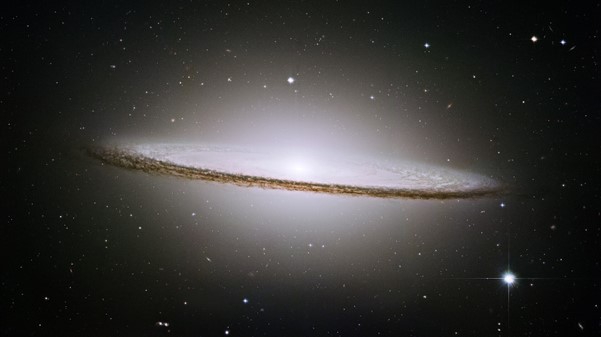
What's Up? April 2024
Spring has sprung and it's an exciting time of year for our astronomers. Rosie takes us through what we can see in the skies this month.
Read Time
4 minutes
Spring has sprung and it's an exciting time of year for our astronomers. Rosie takes us through what we can see in the skies this month.
[fulltext] =>
Spring has sprung! Hear the birds chirping outside your window, the bees buzzing in the garden, and the worms worming their way up to the topsoil. Finally, the UK is thawing out (perhaps it needs a bit of a wring-out as well). As the nights are getting warmer, and finger’s crossed clearer, perhaps it’s a good time to try some stargazing. Let’s see what’s in the sky in April!
Constellations and Deep Sky Objects
To astronomers at Kielder Observatory, the sign that spring is here is the constellation Virgo. She starts to poke her head up in March and is a prominent figure in the night sky by the time April comes around. This month, she will be rising in the south-east at around 21:00. Virgo is one of the constellations of the zodiac, located on the ecliptic plane between Leo and Libra. In mythology Virgo is a virgin maiden and is associated with wheat. In Greek and Roman mythology, the constellation is related to Demeter, the Greek goddess of the harvest, or her daughter Persephone, queen of the Underworld.
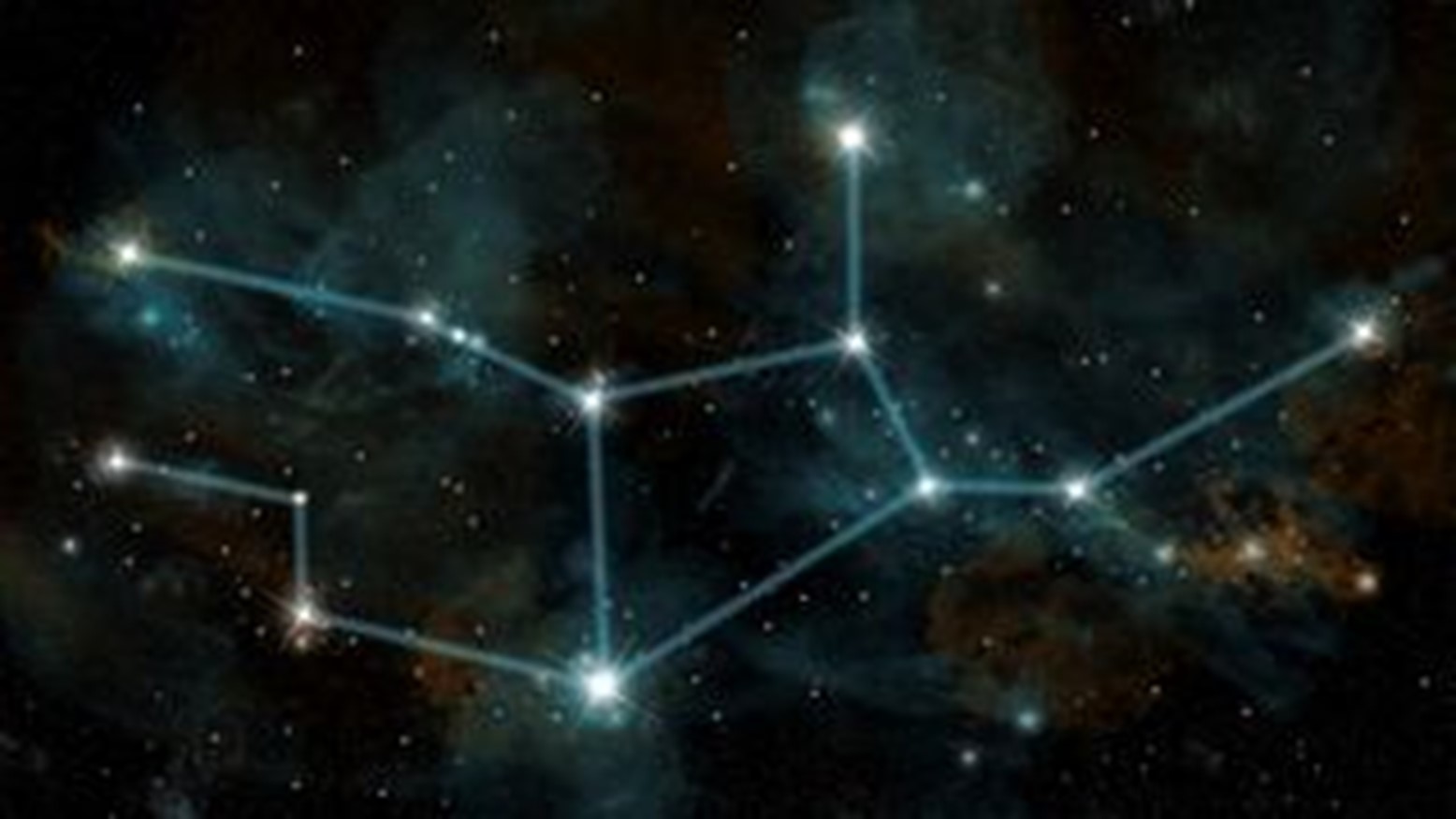
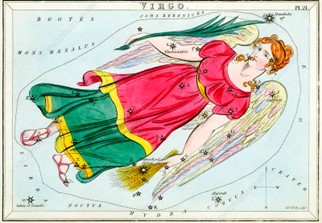
Top: Virgo Constellation (Marc Ward/Stocktrek Images via Getty Images)
Bottom: Virgo Illustrated card (Science Photo Library V700/0192)
Try and find the bright star Spica within Virgo, it’s on the right hip of the constellation (her left). It forms part of the Spring Triangle asterism which is made up of Spica in Virgo, Arcturus in the constellation Bootes, and Regulus in Leo.
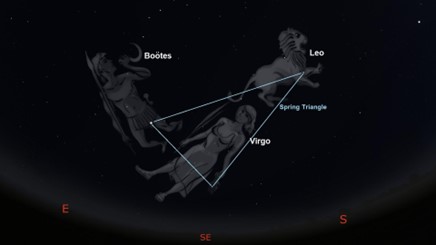
The Spring Triangle (Royal Museums Greenwich link)
For those of you with a telescope or a pair of binoculars, the Sombrero galaxy is an extremely interesting object to find! You can locate it near the star Spica in Virgo. It has an extremely large and bright central bulge and a prominent belt of dust round the edge obscuring the light coming from the centre (called a dust lane). This makes it look like a sombrero... hence the name.

Sombrero Galaxy (NASA/ESA Hubble Space Telescope)
To the left of Virgo, we have the constellation Serpens, in which there is a bright globular cluster called M5 or the Rose Cluster. In very good conditions, this cluster is just about visible to the naked eye. If you have a pair of binoculars or small telescope you’ll be able to see a bright spot in the sky. Larger telescopes will be able to resolve individual stars.
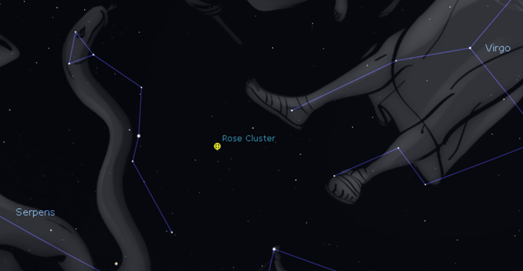
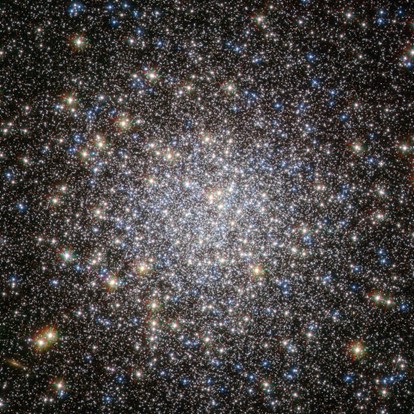
Top: Rose Cluster in constellation Serpens (Stellarium)
Bottom: Rose Cluster (NASA/ESA Hubble Space Telescope)
Planets
It’s a quiet month for the planets. The only one you’ll be able to catch is Jupiter (and with a telescope, Uranus), just as the Sun is setting at around 20/21hr in the west.
Comets & Meteor showers
We have the Lyrids this month - a meteor shower happening between the 16th – 30th of April. The peak of the shower will be between the 22nd-25th. Typically, you might see somewhere from 10-15 shooting stars per hour! The Lyrids is one of the oldest known meteor showers, we have records of its sighting from 687 BC by Chinese astronomers. The shooting stars of the Lyrids come from the tail of comet C/1861 G1 Thatcher. This is a long-period comet taking 415.5 years for it to orbit the sun once.

Comet 12P/Pons Brookes which you may have already heard of or even seen is reaching perihelion this month. It’s closest approach to earth will be in June, but you might just see it with your naked eye in April. It will be passing through Aries and Taurus, so keep a look out!
Special mentions:
Although not visible in the UK, there will be a total solar eclipse on the 8th of April that I just couldn’t not mention! Only visible in the Americas sadly, but our astronomer Ellie will be over there recording the whole thing (weather permitting) so keep an eye out for any mention of livestreams and updates on our social media!
Moon Phases
Remember, deep sky objects such as nebula and galaxies are best seen around new moon. The full moon in April is called the Pink Moon, as it symbolises the beginning of Spring.
Last quarter: 2nd April
New moon: 8th April
First quarter: 15th April
Full moon: 24th April
[checked_out] => 0 [checked_out_time] => 0000-00-00 00:00:00 [catid] => 34 [created] => 2024-03-22 14:58:28 [created_by] => 52030 [created_by_alias] => [modified] => 2024-03-22 15:02:03 [modified_by] => 52030 [modified_by_name] => Hannah Matterson [publish_up] => 2024-03-22 14:58:28 [publish_down] => 0000-00-00 00:00:00 [images] => {"image_intro":"images\/Sombrero-Galaxy.jpg","float_intro":"","image_intro_alt":"","image_intro_caption":"","image_fulltext":"images\/Sombrero-Galaxy.jpg","float_fulltext":"","image_fulltext_alt":"","image_fulltext_caption":""} [urls] => {"urla":false,"urlatext":"","targeta":"","urlb":false,"urlbtext":"","targetb":"","urlc":false,"urlctext":"","targetc":""} [attribs] => {"show_title":"","link_titles":"","show_tags":"","show_intro":"","info_block_position":"","info_block_show_title":"","show_category":"","link_category":"","show_parent_category":"","link_parent_category":"","show_author":"","link_author":"","show_create_date":"","show_modify_date":"","show_publish_date":"","show_item_navigation":"","show_icons":"","show_print_icon":"","show_email_icon":"","show_vote":"","show_hits":"","show_noauth":"","urls_position":"","alternative_readmore":"","article_layout":"","show_publishing_options":"","show_article_options":"","show_urls_images_backend":"","show_urls_images_frontend":""} [metadata] => {"robots":"","author":"","rights":"","xreference":""} [metakey] => [metadesc] => [access] => 1 [hits] => 1416 [xreference] => [featured] => 0 [language] => * [readmore] => 7374 [state] => 1 [category_title] => Latest News [category_route] => uncategorised/latest-news [category_access] => 1 [category_alias] => latest-news [author] => Hannah Matterson [author_email] => hannah@kielderobservatory.org [parent_title] => ROOT [parent_id] => 1 [parent_route] => [parent_alias] => root [rating] => [rating_count] => [published] => 1 [parents_published] => 1 [alternative_readmore] => [layout] => [params] => Joomla\Registry\Registry Object ( [data:protected] => stdClass Object ( [article_layout] => _:default [show_title] => 1 [link_titles] => 0 [show_intro] => 1 [info_block_position] => 0 [info_block_show_title] => 0 [show_category] => 0 [link_category] => 0 [show_parent_category] => 0 [link_parent_category] => 0 [show_author] => 0 [link_author] => 0 [show_create_date] => 0 [show_modify_date] => 0 [show_publish_date] => 0 [show_item_navigation] => 0 [show_vote] => 0 [show_readmore] => 1 [show_readmore_title] => 0 [readmore_limit] => 100 [show_tags] => 0 [show_icons] => 0 [show_print_icon] => 0 [show_email_icon] => 0 [show_hits] => 0 [show_noauth] => 0 [urls_position] => 0 [show_publishing_options] => 1 [show_article_options] => 1 [save_history] => 1 [history_limit] => 10 [show_urls_images_frontend] => 0 [show_urls_images_backend] => 1 [targeta] => 0 [targetb] => 0 [targetc] => 0 [float_intro] => right [float_fulltext] => none [category_layout] => _:blog [show_category_heading_title_text] => 1 [show_category_title] => 0 [show_description] => 1 [show_description_image] => 0 [maxLevel] => 1 [show_empty_categories] => 0 [show_no_articles] => 1 [show_subcat_desc] => 1 [show_cat_num_articles] => 0 [show_cat_tags] => 1 [show_base_description] => 1 [maxLevelcat] => -1 [show_empty_categories_cat] => 0 [show_subcat_desc_cat] => 1 [show_cat_num_articles_cat] => 1 [num_leading_articles] => 0 [num_intro_articles] => 27 [num_columns] => 1 [num_links] => 4 [multi_column_order] => 0 [show_subcategory_content] => 0 [show_pagination_limit] => 1 [filter_field] => hide [show_headings] => 1 [list_show_date] => 0 [date_format] => [list_show_hits] => 1 [list_show_author] => 1 [orderby_pri] => order [orderby_sec] => rdate [order_date] => published [show_pagination] => 1 [show_pagination_results] => 1 [show_featured] => show [show_feed_link] => 1 [feed_summary] => 0 [feed_show_readmore] => 0 [show_page_heading] => 0 [layout_type] => blog [menu_text] => 1 [menu_show] => 0 [secure] => 0 [page_title] => Latest News [page_description] => Kielder Observatory Astronomical Society [page_rights] => [robots] => [access-view] => 1 ) [separator] => . ) [displayDate] => 2024-03-22 14:58:28 [slug] => 338:what-s-up-april-2024 [parent_slug] => [catslug] => 34:latest-news [event] => stdClass Object ( [afterDisplayTitle] => [beforeDisplayContent] => [afterDisplayContent] => ) [text] =>
Spring has sprung and it's an exciting time of year for our astronomers. Rosie takes us through what we can see in the skies this month.
)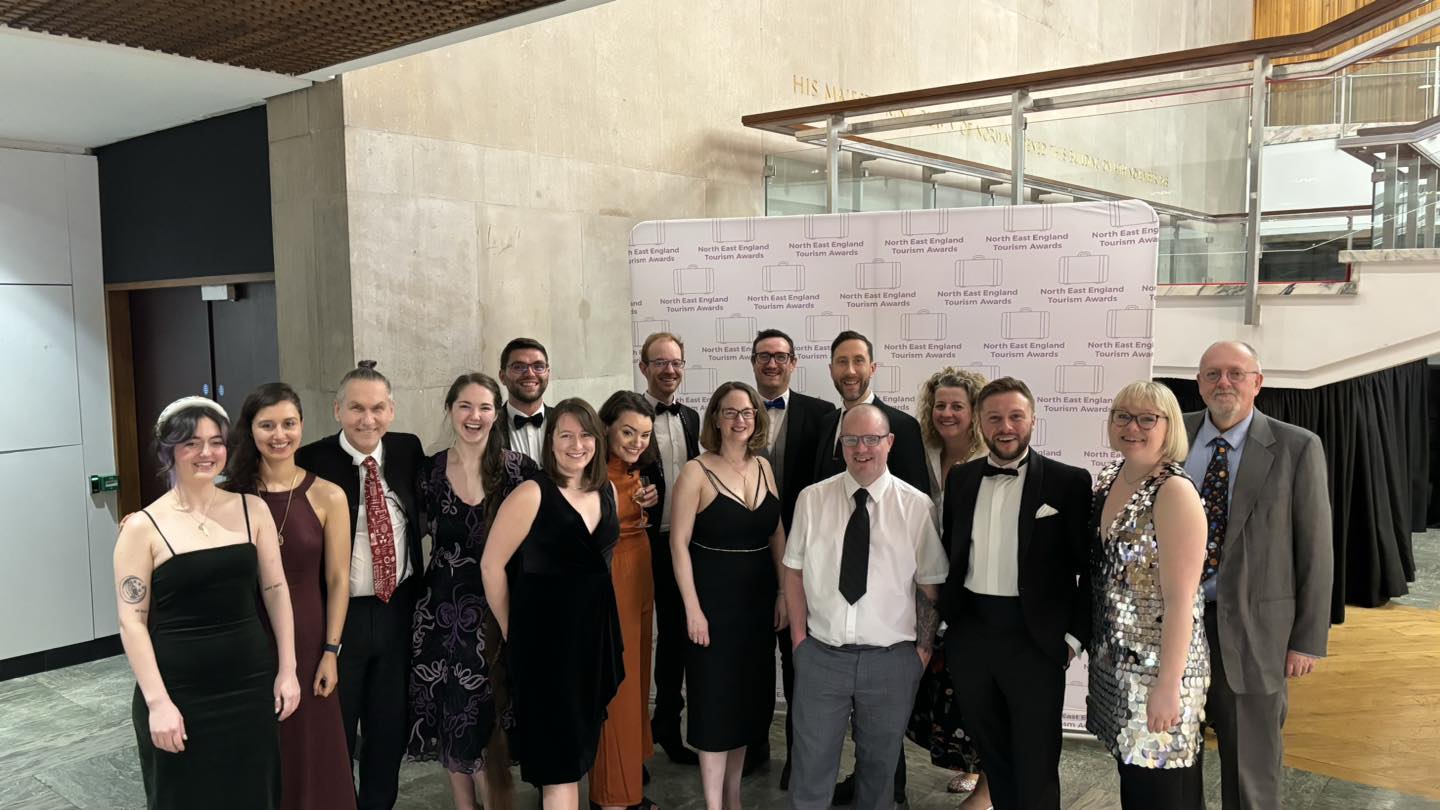
Kielder Observatory shines with silver award at North East Tourism Awards 2024
A great accolade for our observatory!
Read Time
1 minute
A great accolade for our observatory!
[fulltext] =>

The annual North East Tourism awards were held on Thursday 29th February at Newcastle Civic Centre, where the best of the North East’s tourism businesses attended an exciting evening to celebrate our fantastic region.
Kielder Observatory was shortlisted for the Small Visitor Attraction of the Year award, which aims to recognise visitor attractions who have under 35,000 visitors per annum. Whilst the observatory missed on the top prize to the fantastic Spanish Gallery in Bishop Aukland, we took home the Silver award in the category.
Dan Pye, Director of Astronomy at Kielder Observatory said:
“We’re very proud of the work we do here at Kielder Observatory in welcoming thousands of guests and providing an excellent experience. This award recognises that and will only spur us on to achieve gold next time.
There’s such a wonderful variety of small visitor attractions across the whole of the North East and it’s fantastic to be up there with the best of them.”
You can see the full list of winners from the night here: https://tickets.northeasttourismawards.co.uk/the-winners-2024/
[checked_out] => 0 [checked_out_time] => 0000-00-00 00:00:00 [catid] => 34 [created] => 2024-03-13 13:15:34 [created_by] => 52030 [created_by_alias] => [modified] => 2024-03-13 13:15:34 [modified_by] => 0 [modified_by_name] => [publish_up] => 2024-03-13 13:15:34 [publish_down] => 0000-00-00 00:00:00 [images] => {"image_intro":"images\/NNETA24-Team.jpg","float_intro":"","image_intro_alt":"","image_intro_caption":"","image_fulltext":"","float_fulltext":"","image_fulltext_alt":"","image_fulltext_caption":""} [urls] => {"urla":false,"urlatext":"","targeta":"","urlb":false,"urlbtext":"","targetb":"","urlc":false,"urlctext":"","targetc":""} [attribs] => {"show_title":"","link_titles":"","show_tags":"","show_intro":"","info_block_position":"","info_block_show_title":"","show_category":"","link_category":"","show_parent_category":"","link_parent_category":"","show_author":"","link_author":"","show_create_date":"","show_modify_date":"","show_publish_date":"","show_item_navigation":"","show_icons":"","show_print_icon":"","show_email_icon":"","show_vote":"","show_hits":"","show_noauth":"","urls_position":"","alternative_readmore":"","article_layout":"","show_publishing_options":"","show_article_options":"","show_urls_images_backend":"","show_urls_images_frontend":""} [metadata] => {"robots":"","author":"","rights":"","xreference":""} [metakey] => [metadesc] => [access] => 1 [hits] => 1020 [xreference] => [featured] => 0 [language] => * [readmore] => 1869 [state] => 1 [category_title] => Latest News [category_route] => uncategorised/latest-news [category_access] => 1 [category_alias] => latest-news [author] => Hannah Matterson [author_email] => hannah@kielderobservatory.org [parent_title] => ROOT [parent_id] => 1 [parent_route] => [parent_alias] => root [rating] => [rating_count] => [published] => 1 [parents_published] => 1 [alternative_readmore] => [layout] => [params] => Joomla\Registry\Registry Object ( [data:protected] => stdClass Object ( [article_layout] => _:default [show_title] => 1 [link_titles] => 0 [show_intro] => 1 [info_block_position] => 0 [info_block_show_title] => 0 [show_category] => 0 [link_category] => 0 [show_parent_category] => 0 [link_parent_category] => 0 [show_author] => 0 [link_author] => 0 [show_create_date] => 0 [show_modify_date] => 0 [show_publish_date] => 0 [show_item_navigation] => 0 [show_vote] => 0 [show_readmore] => 1 [show_readmore_title] => 0 [readmore_limit] => 100 [show_tags] => 0 [show_icons] => 0 [show_print_icon] => 0 [show_email_icon] => 0 [show_hits] => 0 [show_noauth] => 0 [urls_position] => 0 [show_publishing_options] => 1 [show_article_options] => 1 [save_history] => 1 [history_limit] => 10 [show_urls_images_frontend] => 0 [show_urls_images_backend] => 1 [targeta] => 0 [targetb] => 0 [targetc] => 0 [float_intro] => right [float_fulltext] => none [category_layout] => _:blog [show_category_heading_title_text] => 1 [show_category_title] => 0 [show_description] => 1 [show_description_image] => 0 [maxLevel] => 1 [show_empty_categories] => 0 [show_no_articles] => 1 [show_subcat_desc] => 1 [show_cat_num_articles] => 0 [show_cat_tags] => 1 [show_base_description] => 1 [maxLevelcat] => -1 [show_empty_categories_cat] => 0 [show_subcat_desc_cat] => 1 [show_cat_num_articles_cat] => 1 [num_leading_articles] => 0 [num_intro_articles] => 27 [num_columns] => 1 [num_links] => 4 [multi_column_order] => 0 [show_subcategory_content] => 0 [show_pagination_limit] => 1 [filter_field] => hide [show_headings] => 1 [list_show_date] => 0 [date_format] => [list_show_hits] => 1 [list_show_author] => 1 [orderby_pri] => order [orderby_sec] => rdate [order_date] => published [show_pagination] => 1 [show_pagination_results] => 1 [show_featured] => show [show_feed_link] => 1 [feed_summary] => 0 [feed_show_readmore] => 0 [show_page_heading] => 0 [layout_type] => blog [menu_text] => 1 [menu_show] => 0 [secure] => 0 [page_title] => Latest News [page_description] => Kielder Observatory Astronomical Society [page_rights] => [robots] => [access-view] => 1 ) [separator] => . ) [displayDate] => 2024-03-13 13:15:34 [slug] => 337:kielder-observatory-shines-with-silver-award-at-north-east-tourism-awards-2024 [parent_slug] => [catslug] => 34:latest-news [event] => stdClass Object ( [afterDisplayTitle] => [beforeDisplayContent] => [afterDisplayContent] => ) [text] =>A great accolade for our observatory!
)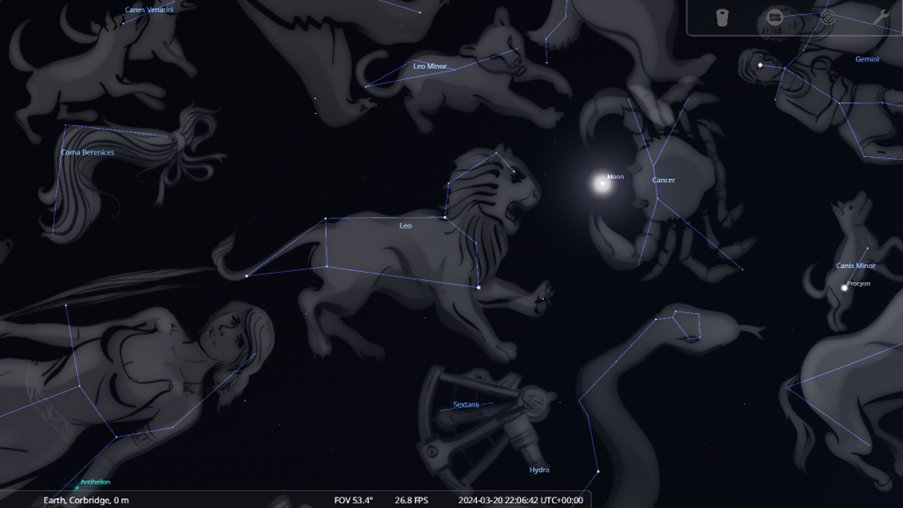
What's Up? March 2024
Spring is almost upon us! As day and night start to equalise, let’s take a look at what’s parading across our skies this month.
Read Time
3 minutes
Spring is almost upon us! As day and night start to equalise, let’s take a look at what’s parading across our skies this month.
[fulltext] =>
Spring Equinox
Tuesday 19th March marks the first day of Spring, and the days getting longer than the nights again. A sad day for us Astronomers in the North! This is the day that Earth is neither tilted towards nor away from the Sun, so both the Northern and Southern Hemispheres get approximately the same amount of night and day. Equinox derives from the Latin for "equal night".
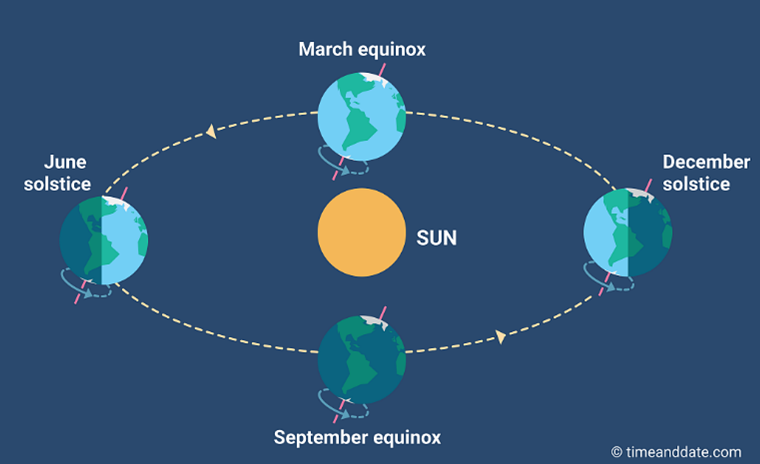

Figure 1: The Earth not being tilted towards or away from the Sun meaning equal illumination for all. Images from TheAlmnac.com and timeanddate.com
Constellations
As Spring approaches, Leo the lion is coming back. This glorious constellation is sometimes described as a mouse, or a coat-hanger but is a really easy spot in the southern Sky this month.

Figure 2: Leo the lion and the moon in the High Southern sky March 20th 10pm.
As the moon waxes up to a full moon it eventually will pass through Leo, making it look like a cat playing with a ball of string. A good chance to add this big cat constellation to your spotting repertoire.
Planets
Venus still precedes the morning sun, though with the Sun catching up you’ll have to get up earlier to catch it around 6am to 7am this month.
Jupiter is in prime position throughout the night over the course of the Month, moving through Aries. However, Saturn, who has been making a nice double act with Jupiter for planet gazing this winter, is moving on. It is barely visible before passing over the horizon around sunset.
If you’ve got some binoculars then find Jupiter and trace up, trailing not too far behind should be Uranus, a little pale blue dot like us, as shown in the photo below.
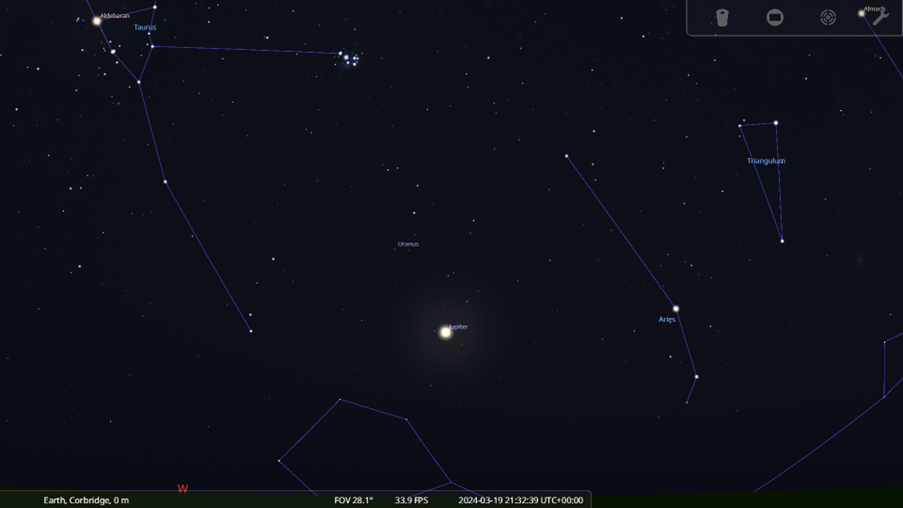
Figure 3:Jupiter and Uranus in the western sky, March 19th, 9:30pm
Moon Phases
3rd March: Half Moon
10th March: New Moon
17th March: Half Moon
25th March: Full Moon
The full moon this month is known as the Worm Moon. The origins come from multiple cultures such as Native American and European. It is often thought to have derived from earthworms that spring birds start to feast on, but it may have actually originated from the beetle larvae that emerge from the thawing of trees in the spring.
Clear skiesd and happy stargazing!
[checked_out] => 0 [checked_out_time] => 0000-00-00 00:00:00 [catid] => 34 [created] => 2024-02-22 11:01:42 [created_by] => 52030 [created_by_alias] => [modified] => 2024-02-28 12:24:48 [modified_by] => 52030 [modified_by_name] => Hannah Matterson [publish_up] => 2024-02-28 12:23:04 [publish_down] => 0000-00-00 00:00:00 [images] => {"image_intro":"images\/WU-Mar-24-3.png","float_intro":"","image_intro_alt":"","image_intro_caption":"","image_fulltext":"","float_fulltext":"","image_fulltext_alt":"","image_fulltext_caption":""} [urls] => {"urla":false,"urlatext":"","targeta":"","urlb":false,"urlbtext":"","targetb":"","urlc":false,"urlctext":"","targetc":""} [attribs] => {"show_title":"","link_titles":"","show_tags":"","show_intro":"","info_block_position":"","info_block_show_title":"","show_category":"","link_category":"","show_parent_category":"","link_parent_category":"","show_author":"","link_author":"","show_create_date":"","show_modify_date":"","show_publish_date":"","show_item_navigation":"","show_icons":"","show_print_icon":"","show_email_icon":"","show_vote":"","show_hits":"","show_noauth":"","urls_position":"","alternative_readmore":"","article_layout":"","show_publishing_options":"","show_article_options":"","show_urls_images_backend":"","show_urls_images_frontend":""} [metadata] => {"robots":"","author":"","rights":"","xreference":""} [metakey] => [metadesc] => [access] => 1 [hits] => 1268 [xreference] => [featured] => 0 [language] => * [readmore] => 3815 [state] => 1 [category_title] => Latest News [category_route] => uncategorised/latest-news [category_access] => 1 [category_alias] => latest-news [author] => Hannah Matterson [author_email] => hannah@kielderobservatory.org [parent_title] => ROOT [parent_id] => 1 [parent_route] => [parent_alias] => root [rating] => [rating_count] => [published] => 1 [parents_published] => 1 [alternative_readmore] => [layout] => [params] => Joomla\Registry\Registry Object ( [data:protected] => stdClass Object ( [article_layout] => _:default [show_title] => 1 [link_titles] => 0 [show_intro] => 1 [info_block_position] => 0 [info_block_show_title] => 0 [show_category] => 0 [link_category] => 0 [show_parent_category] => 0 [link_parent_category] => 0 [show_author] => 0 [link_author] => 0 [show_create_date] => 0 [show_modify_date] => 0 [show_publish_date] => 0 [show_item_navigation] => 0 [show_vote] => 0 [show_readmore] => 1 [show_readmore_title] => 0 [readmore_limit] => 100 [show_tags] => 0 [show_icons] => 0 [show_print_icon] => 0 [show_email_icon] => 0 [show_hits] => 0 [show_noauth] => 0 [urls_position] => 0 [show_publishing_options] => 1 [show_article_options] => 1 [save_history] => 1 [history_limit] => 10 [show_urls_images_frontend] => 0 [show_urls_images_backend] => 1 [targeta] => 0 [targetb] => 0 [targetc] => 0 [float_intro] => right [float_fulltext] => none [category_layout] => _:blog [show_category_heading_title_text] => 1 [show_category_title] => 0 [show_description] => 1 [show_description_image] => 0 [maxLevel] => 1 [show_empty_categories] => 0 [show_no_articles] => 1 [show_subcat_desc] => 1 [show_cat_num_articles] => 0 [show_cat_tags] => 1 [show_base_description] => 1 [maxLevelcat] => -1 [show_empty_categories_cat] => 0 [show_subcat_desc_cat] => 1 [show_cat_num_articles_cat] => 1 [num_leading_articles] => 0 [num_intro_articles] => 27 [num_columns] => 1 [num_links] => 4 [multi_column_order] => 0 [show_subcategory_content] => 0 [show_pagination_limit] => 1 [filter_field] => hide [show_headings] => 1 [list_show_date] => 0 [date_format] => [list_show_hits] => 1 [list_show_author] => 1 [orderby_pri] => order [orderby_sec] => rdate [order_date] => published [show_pagination] => 1 [show_pagination_results] => 1 [show_featured] => show [show_feed_link] => 1 [feed_summary] => 0 [feed_show_readmore] => 0 [show_page_heading] => 0 [layout_type] => blog [menu_text] => 1 [menu_show] => 0 [secure] => 0 [page_title] => Latest News [page_description] => Kielder Observatory Astronomical Society [page_rights] => [robots] => [access-view] => 1 ) [separator] => . ) [displayDate] => 2024-02-22 11:01:42 [slug] => 336:what-s-up-march-2024 [parent_slug] => [catslug] => 34:latest-news [event] => stdClass Object ( [afterDisplayTitle] => [beforeDisplayContent] => [afterDisplayContent] => ) [text] =>Spring is almost upon us! As day and night start to equalise, let’s take a look at what’s parading across our skies this month.
)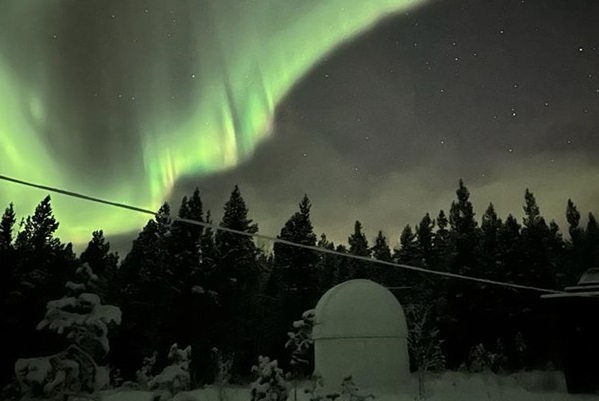
Aurora Adventures
Our astronomer Ishbel goes to Norway to image and research the Northern Lights.
Read Time
2 minutes
Our astronomer Ishbel goes to Norway to image and research the Northern Lights.
[fulltext] =>
By Ishbel Carlyle
So as part of my PhD studying the Northern lights, I need to set up a few cameras to film them, so at the start of January I got on a plane and headed up to the artic circle. Specifically, Skibotn observatory, about an hour from Tromsø in Norway. I spent a week with some colleagues from Southampton University building the frame to hold the cameras, aligning the cameras to the stars and setting up the computers. The days were long (if very short in light. The Sun didn't come above the horizon till the 3rd day we were there!) But I also got to see the Aurora in magnificent splendour not once but twice!

The first night they started as just a band of light moving slowing from North to South overhead. A few swirls were discernible, and a bit of colour stared to show. This is known as the growth phase of the aurora. It then got cloudy. Even in Norway we get thwarted by the occasional cloud when stargazing. However, on night two I got the expansion phase (the bit where it goes bang). They started off similarly to the night before and then BOOM. They got bright and fast and swirling and twirling, ripples of light going all across the sky. The colours came out too. Minty greens and pinks and purple hues. I'd describe it as a ghost. Definitely coloured and sharp shapes, but still transparent.

Cameras always pick up more signal than our eyes do so the pictures look a bit more dramatic than by eye, but I've have provided a few from different cameras so you can see it was all the same aurora, just different cameras. Tune into our next newsletter where I will be talking more about photography of the Aurora.

Our astronomer Ishbel goes to Norway to image and research the Northern Lights.
)
What's Up? February 2024
Love is in the air, it must be Feburary! Astronomer and Science Communicator Rosie Braunholtz gives us an overview of what we can see in the night skies this season of lovers.
Read Time
6 minutes
Love is in the air, it must be Feburary! Astronomer and Science Communicator Rosie Braunholtz gives us an overview of what we can see in the night skies this season of lovers.
[fulltext] =>What's Up February
Hello, it’s time for another What’s Up in the month of February. Our shortest month of the year, quieter astronomically speaking than other months, but there’s still plenty to see!
Of course we still have many of the winter showstoppers that were mentioned in January and December’s What’s Up’s, such as the Orion Nebula and the Andromeda galaxy. But let’s look at some of the other gems in the sky that maybe you might not know so well.
The Daughters of Atlas
Two star clusters: The Pleiades and the Hyades in Taurus. Two lovely open clusters, visible to the naked eye but perhaps best seen with a small pair of binoculars or a small telescope. Both of these clusters have been known for thousands of years all over the world. In Greek mythology the Hyades and the Pleiades were daughters of Atlas, though had different mothers. Both groups of sisters were transformed into a cluster of stars that was afterwards associated with rain.
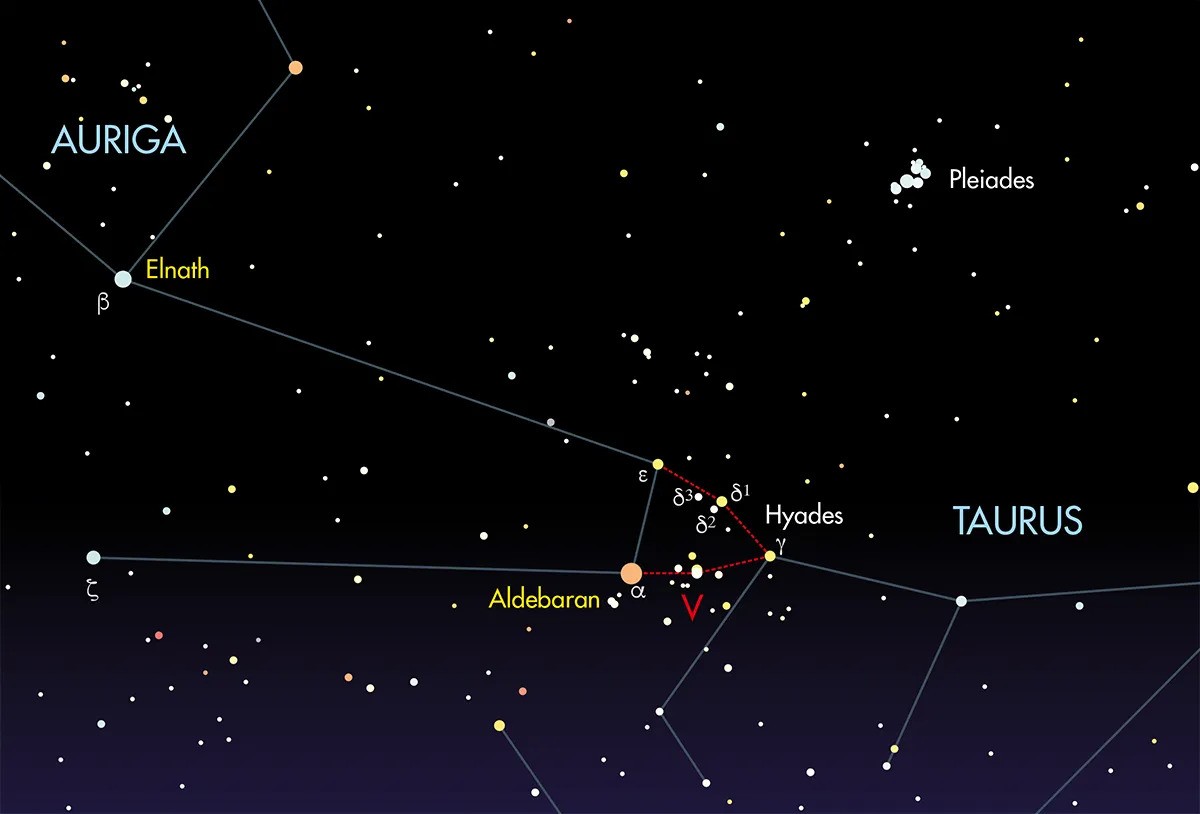
[Picture 1: Taurus]. Image credit: Pete Lawrence, Sky at Night Magazine, BBC
The Pleiades, also known as the seven sisters, is probably the most famous star cluster, as it’s the one most easily visible to spot, even without a telescope. In Japan, the cluster is named Subaru! And the car company chose this name after the joining of five companies together. To the naked eye you will see a little fuzzy patch to the right of Taurus the bull, if you let your eyes focus you might be able to count about 7 stars. However, if we were to zoom in on this patch, we would see around a thousand stars! All these stars are grouped together and gravitationally bound to one another. This is because they all formed from the same gas cloud at the same time, so calling them sisters is pretty accurate. Looking at the size of star and blueish colour, we can tell they were born fairly recently! Only 100 million years old or so (basically still a toddler in star terms).
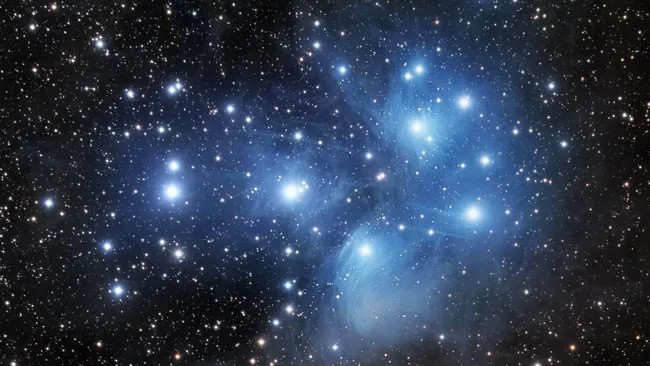
[Picture 2: Pleiades] Image credit: Manfred_Konrad via Getty Images
The Hyades, is perhaps the lesser well-known sibling to the Pleiades. It’s actually closer to us – being only 150 light years away (440ly for Pleiades). But because it’s so close, the star cluster (which spans about 10 light years across) looks more scattered around the sky rather than in one small clump, so you might not have noticed it before. To find it you need to go to the eye of the bull: Aldebaran, the bright red star in the middle of Taurus. And you’ll see it’s part of a “V” shape. This “V” is the Hyades! Though Aldebaran is not actually part of the cluster, it’s even closer – around 65 or so light years away. There are about 500 stars in the Hyades and a few of them we have even found exoplanets going round!
Love is in the air..
It is the month of love, for any romantics out there, let us look at some love themed objects in the sky.

[Picture 3: Heart Nebula] Credit: Flickr Commons/s58y
Venus, the goddess of love, ironically isn’t in the sky that much. Except in the first few days in February just before sunrise, say at about 7am and look to the south-east.
While not anatomically correct, show your valentine the Heart Nebula in the constellation of Cassiopeia! This is a beautiful cloud of ionized gas that is emitting predominantly red light, giving the appearance of a heart <3. Amongst the core of this cloud of gas are many stars in a cluster that were born out of this stellar nursery. It’s about 7500 light years away! And the nebula itself spans 165 light years across. It’s best to look at faint objects like nebula and galaxies when there is little to no moon in the sky, so aim for the second week of February when it’s New Moon.
We also have the Caroline Rose Cluster also within Cassiopeia. This star cluster was discovered in 1783 by Caroline Herschel. It gets it’s name from the looping stars and dark shadows which look like the swirling pattern of rose petals.
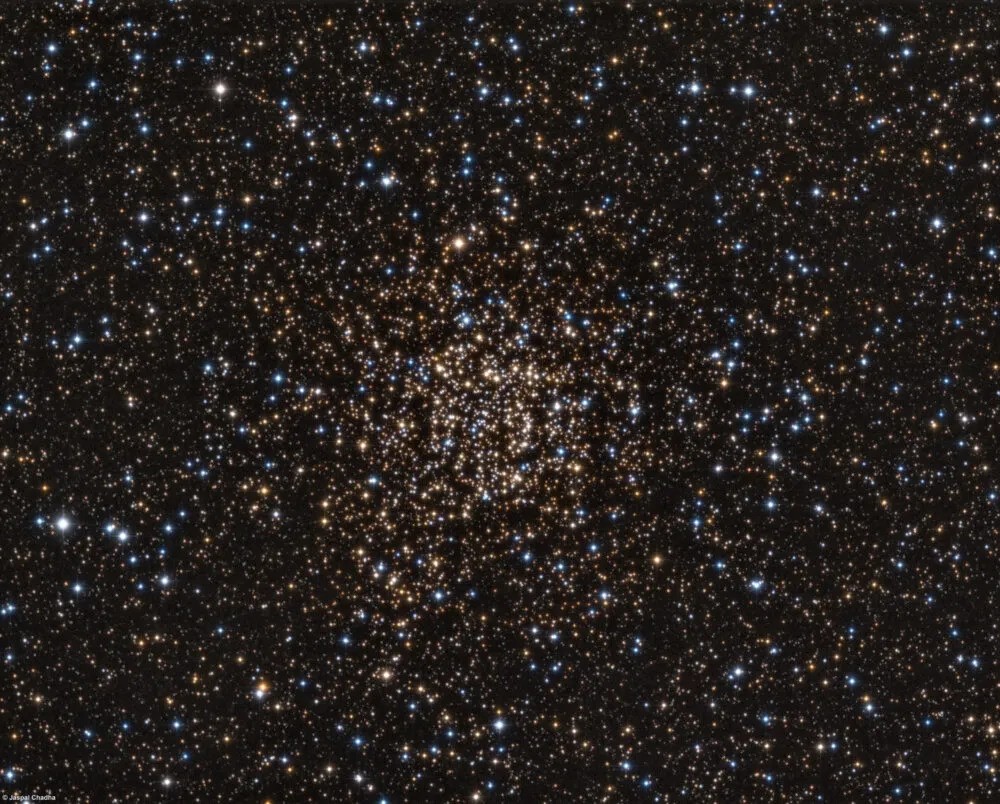
[Pictue 4: rose] Image Credit: Caroline's Rose by Jaspal Chadha, London, UK
The Wanderers
February is definitely the very last chance of seeing Saturn this year (from the UK). The first week of February is your best bet as it’s still dark enough in the early evening to catch it. You’ll need to have a clear horizon in the south-west and look for a bright spot in the sky at about 18:00.
Jupiter is still visible though it’s getting closer and closer to that western horizon, and visible only in the first part of the night now. For a good astrophotography shot, the 14th and the 15th the moon and Jupiter are close together.
Shooting Stars & other objects
If you’re looking to spot meteors in February, I’m afraid the only shower is visible from the southern hemisphere. On February 9th the α-Centaurid (“alpha Centaurid”) meteor shower will peak. The α-Centaurids usually occur from January 28th to February 21st each year. The peak will be on February 9th where you can expect to see roughly 5 meteors per hour radiating from the constellation of Centaurus. So if you’re on holiday in Aus – have a look outside!
We have a few ISS pass overs at the very start of February. When looking for the ISS look to the west for a very bright satellite that’s moving slowly towards the south/south-east. On the 1st of February we can expect two ISS passes, one starting at 17:50, and another very low on the horizon starting at 19:26. The 2nd will have a passes starting at 18:39, and the 3rd will have one starting at 17:49.
[checked_out] => 0 [checked_out_time] => 0000-00-00 00:00:00 [catid] => 34 [created] => 2024-01-22 22:03:53 [created_by] => 42928 [created_by_alias] => [modified] => 2024-02-14 15:46:25 [modified_by] => 21099 [modified_by_name] => Miss Heather Woodfine [publish_up] => 2024-01-22 22:03:53 [publish_down] => 0000-00-00 00:00:00 [images] => {"image_intro":"images\/Blog-Images\/Feb_24_Whats_Up\/Picture3-Heart-Nebula.jpeg","float_intro":"","image_intro_alt":"Heart Nebula taken from Flickr Commons\/s58y","image_intro_caption":"","image_fulltext":"","float_fulltext":"","image_fulltext_alt":"","image_fulltext_caption":""} [urls] => {"urla":false,"urlatext":"","targeta":"","urlb":false,"urlbtext":"","targetb":"","urlc":false,"urlctext":"","targetc":""} [attribs] => {"show_title":"","link_titles":"","show_tags":"","show_intro":"","info_block_position":"","info_block_show_title":"","show_category":"","link_category":"","show_parent_category":"","link_parent_category":"","show_author":"","link_author":"","show_create_date":"","show_modify_date":"","show_publish_date":"","show_item_navigation":"","show_icons":"","show_print_icon":"","show_email_icon":"","show_vote":"","show_hits":"","show_noauth":"","urls_position":"","alternative_readmore":"","article_layout":"","show_publishing_options":"","show_article_options":"","show_urls_images_backend":"","show_urls_images_frontend":""} [metadata] => {"robots":"","author":"","rights":"","xreference":""} [metakey] => [metadesc] => [access] => 1 [hits] => 1533 [xreference] => [featured] => 0 [language] => * [readmore] => 6825 [state] => 1 [category_title] => Latest News [category_route] => uncategorised/latest-news [category_access] => 1 [category_alias] => latest-news [author] => Dan Pye [author_email] => danpye@kielderobservatory.org [parent_title] => ROOT [parent_id] => 1 [parent_route] => [parent_alias] => root [rating] => [rating_count] => [published] => 1 [parents_published] => 1 [alternative_readmore] => [layout] => [params] => Joomla\Registry\Registry Object ( [data:protected] => stdClass Object ( [article_layout] => _:default [show_title] => 1 [link_titles] => 0 [show_intro] => 1 [info_block_position] => 0 [info_block_show_title] => 0 [show_category] => 0 [link_category] => 0 [show_parent_category] => 0 [link_parent_category] => 0 [show_author] => 0 [link_author] => 0 [show_create_date] => 0 [show_modify_date] => 0 [show_publish_date] => 0 [show_item_navigation] => 0 [show_vote] => 0 [show_readmore] => 1 [show_readmore_title] => 0 [readmore_limit] => 100 [show_tags] => 0 [show_icons] => 0 [show_print_icon] => 0 [show_email_icon] => 0 [show_hits] => 0 [show_noauth] => 0 [urls_position] => 0 [show_publishing_options] => 1 [show_article_options] => 1 [save_history] => 1 [history_limit] => 10 [show_urls_images_frontend] => 0 [show_urls_images_backend] => 1 [targeta] => 0 [targetb] => 0 [targetc] => 0 [float_intro] => right [float_fulltext] => none [category_layout] => _:blog [show_category_heading_title_text] => 1 [show_category_title] => 0 [show_description] => 1 [show_description_image] => 0 [maxLevel] => 1 [show_empty_categories] => 0 [show_no_articles] => 1 [show_subcat_desc] => 1 [show_cat_num_articles] => 0 [show_cat_tags] => 1 [show_base_description] => 1 [maxLevelcat] => -1 [show_empty_categories_cat] => 0 [show_subcat_desc_cat] => 1 [show_cat_num_articles_cat] => 1 [num_leading_articles] => 0 [num_intro_articles] => 27 [num_columns] => 1 [num_links] => 4 [multi_column_order] => 0 [show_subcategory_content] => 0 [show_pagination_limit] => 1 [filter_field] => hide [show_headings] => 1 [list_show_date] => 0 [date_format] => [list_show_hits] => 1 [list_show_author] => 1 [orderby_pri] => order [orderby_sec] => rdate [order_date] => published [show_pagination] => 1 [show_pagination_results] => 1 [show_featured] => show [show_feed_link] => 1 [feed_summary] => 0 [feed_show_readmore] => 0 [show_page_heading] => 0 [layout_type] => blog [menu_text] => 1 [menu_show] => 0 [secure] => 0 [page_title] => Latest News [page_description] => Kielder Observatory Astronomical Society [page_rights] => [robots] => [access-view] => 1 ) [separator] => . ) [displayDate] => 2024-01-22 22:03:53 [slug] => 334:what-s-up-february-2024 [parent_slug] => [catslug] => 34:latest-news [event] => stdClass Object ( [afterDisplayTitle] => [beforeDisplayContent] => [afterDisplayContent] => ) [text] =>Love is in the air, it must be Feburary! Astronomer and Science Communicator Rosie Braunholtz gives us an overview of what we can see in the night skies this season of lovers.
)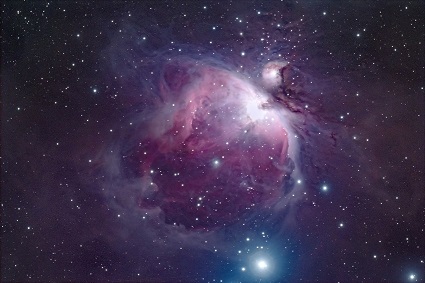
What's Up? January 2024
Let's start 2024 as we mean to go on- looking up! Astronomer and Science Communicator Rosie Braunholtz gives us an overview of what we can see in the night skies this January.
Read Time
3 minutes
Let's start 2024 as we mean to go on- looking up! Astronomer and Science Communicator Rosie Braunholtz gives us an overview of what we can see in the night skies this January.
[fulltext] =>
Happy New Year!
I hope your celebrations were delightful and you’re excited to get back into stargazing after some festivities. Here is what’s up in the sky in January.
Orion takes center stage once again this January, rising in the east as night falls. By 20:00 it stands well clear of the horizon in the south-east. Orion's Belt, marked by three stars in a row, points downward to Sirius in Canis Major, the brightest nighttime star.
Betelgeuse, one of the most luminous stars in the sky makes up the eastern shoulder of Orion. The names is derived from rom the Arabic term bat al-jawzāʾ, which means “the giant’s shoulder.” Orion’s brightest star, the blue supergiant Rigel, sits on the bottom right of the constellation.
A highlight for amateur astronomers is the Orion Nebula, visible to the naked eye and captivating through binoculars or a telescope. This stellar nursery, located in the sword of Orion beneath the belt, consists of glowing gas and dust, providing a glimpse into a region of massive star formation 1,350 light years away.

Image Credit: Natasha Lund, Kielder Observatory
We have a few planets still in sight this month: Venus, Jupiter and Saturn.
Jupiter outshines every star with a magnitude of -2.5 on average this month. You’ll see it from when the sun sets around 17:00 against the stars of Aries to the south and will set at 1:00 in the west. If you have a telescope, it will show it’s four main moons and orange bands.
Saturn is still visible but for a shorter period. It’s dimmer than Jupiter with a magnitude of 0.96 so it will appear at around 17:30 and will only be visible for a few hours until it sets in the southwest at around 20:00.
Venus is the brightest planet at magnitude -3.9 but only the early birds will be able to catch it. Rising at 6am and setting only an hour or two later depending on when in January. It will also be easy to miss unless you have a clear view low into the south-west.
If you want to catch Mercury, you must be a real fiend (and also be lucky). Aim for the start of the month, round about the 5th-13th when the planet is at it’s turning point from being in apparent retrograde to normal motion. You will be wanting to look southeast between the hours of 7:00 and 8:00, just when the Sun is rising. It’s a short window! It’ll be a dimmer looking star to the left of Venus.
Moon enthusiasts can catch a stunning sight on the 18th of January when Jupiter aligns with the moon.
Lastly, The Quadrantid meteor shower will peak on 3-4 January 2024. The total period of this shower is from 28 December 2023 – 12 January 2024. Unlike other meteor showers that tend to stay at their peak for about two days, the peak period of the Quadrantids is only a few hours long. In dark skies you may see up to 100 meteors per hour. Luckily for us the moon doesn’t rise until midnight on the 3rd, giving us plenty of time (weather permitting) to see some meteors. The shower gets its name from the former constellation Quadrans Muralis which is now part of the constellation Boötes.
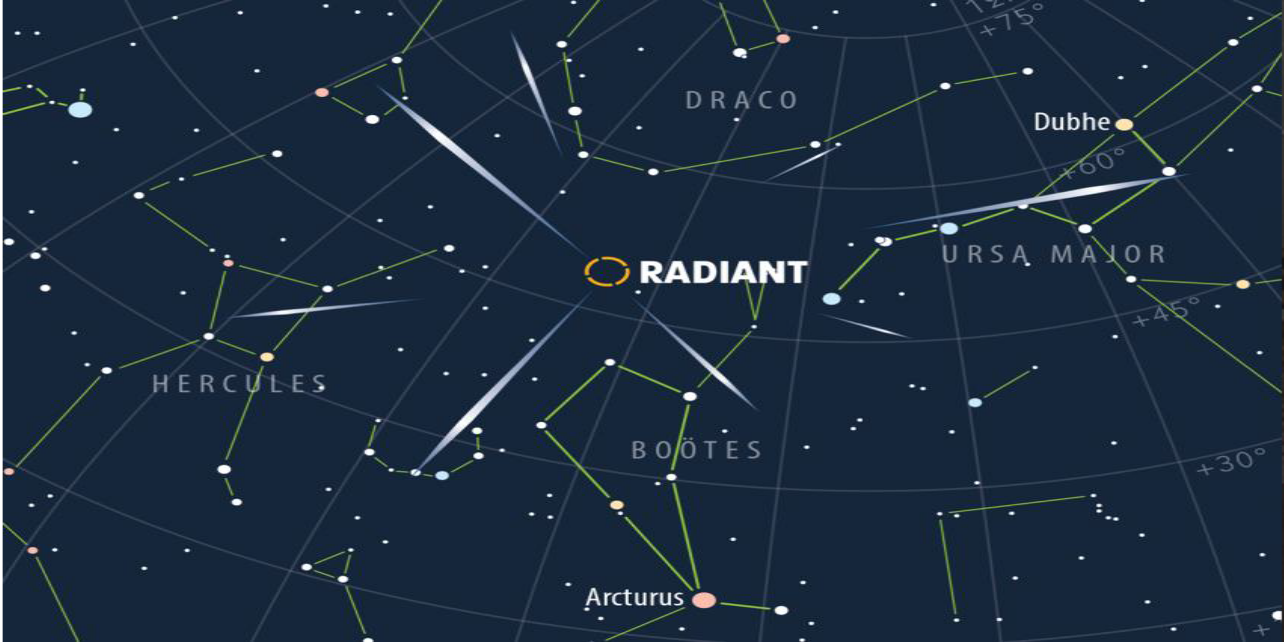
Image Credit: Image: Greg Smye-Rumsby, Astronomy Now (https://astronomynow.com/wp-content/uploads/2015/01/Quadrantids2artworkv2_940x796.jpg)
[checked_out] => 0 [checked_out_time] => 0000-00-00 00:00:00 [catid] => 34 [created] => 2023-12-21 12:07:16 [created_by] => 52030 [created_by_alias] => [modified] => 2024-02-14 15:46:25 [modified_by] => 21099 [modified_by_name] => Miss Heather Woodfine [publish_up] => 2023-12-21 12:07:16 [publish_down] => 0000-00-00 00:00:00 [images] => {"image_intro":"images\/M42-Natasha-Lund-.jpg","float_intro":"","image_intro_alt":"","image_intro_caption":"","image_fulltext":"","float_fulltext":"","image_fulltext_alt":"","image_fulltext_caption":""} [urls] => {"urla":false,"urlatext":"","targeta":"","urlb":false,"urlbtext":"","targetb":"","urlc":false,"urlctext":"","targetc":""} [attribs] => {"show_title":"","link_titles":"","show_tags":"","show_intro":"","info_block_position":"","info_block_show_title":"","show_category":"","link_category":"","show_parent_category":"","link_parent_category":"","show_author":"","link_author":"","show_create_date":"","show_modify_date":"","show_publish_date":"","show_item_navigation":"","show_icons":"","show_print_icon":"","show_email_icon":"","show_vote":"","show_hits":"","show_noauth":"","urls_position":"","alternative_readmore":"","article_layout":"","show_publishing_options":"","show_article_options":"","show_urls_images_backend":"","show_urls_images_frontend":""} [metadata] => {"robots":"","author":"","rights":"","xreference":""} [metakey] => [metadesc] => [access] => 1 [hits] => 1455 [xreference] => [featured] => 0 [language] => * [readmore] => 3723 [state] => 1 [category_title] => Latest News [category_route] => uncategorised/latest-news [category_access] => 1 [category_alias] => latest-news [author] => Hannah Matterson [author_email] => hannah@kielderobservatory.org [parent_title] => ROOT [parent_id] => 1 [parent_route] => [parent_alias] => root [rating] => [rating_count] => [published] => 1 [parents_published] => 1 [alternative_readmore] => [layout] => [params] => Joomla\Registry\Registry Object ( [data:protected] => stdClass Object ( [article_layout] => _:default [show_title] => 1 [link_titles] => 0 [show_intro] => 1 [info_block_position] => 0 [info_block_show_title] => 0 [show_category] => 0 [link_category] => 0 [show_parent_category] => 0 [link_parent_category] => 0 [show_author] => 0 [link_author] => 0 [show_create_date] => 0 [show_modify_date] => 0 [show_publish_date] => 0 [show_item_navigation] => 0 [show_vote] => 0 [show_readmore] => 1 [show_readmore_title] => 0 [readmore_limit] => 100 [show_tags] => 0 [show_icons] => 0 [show_print_icon] => 0 [show_email_icon] => 0 [show_hits] => 0 [show_noauth] => 0 [urls_position] => 0 [show_publishing_options] => 1 [show_article_options] => 1 [save_history] => 1 [history_limit] => 10 [show_urls_images_frontend] => 0 [show_urls_images_backend] => 1 [targeta] => 0 [targetb] => 0 [targetc] => 0 [float_intro] => right [float_fulltext] => none [category_layout] => _:blog [show_category_heading_title_text] => 1 [show_category_title] => 0 [show_description] => 1 [show_description_image] => 0 [maxLevel] => 1 [show_empty_categories] => 0 [show_no_articles] => 1 [show_subcat_desc] => 1 [show_cat_num_articles] => 0 [show_cat_tags] => 1 [show_base_description] => 1 [maxLevelcat] => -1 [show_empty_categories_cat] => 0 [show_subcat_desc_cat] => 1 [show_cat_num_articles_cat] => 1 [num_leading_articles] => 0 [num_intro_articles] => 27 [num_columns] => 1 [num_links] => 4 [multi_column_order] => 0 [show_subcategory_content] => 0 [show_pagination_limit] => 1 [filter_field] => hide [show_headings] => 1 [list_show_date] => 0 [date_format] => [list_show_hits] => 1 [list_show_author] => 1 [orderby_pri] => order [orderby_sec] => rdate [order_date] => published [show_pagination] => 1 [show_pagination_results] => 1 [show_featured] => show [show_feed_link] => 1 [feed_summary] => 0 [feed_show_readmore] => 0 [show_page_heading] => 0 [layout_type] => blog [menu_text] => 1 [menu_show] => 0 [secure] => 0 [page_title] => Latest News [page_description] => Kielder Observatory Astronomical Society [page_rights] => [robots] => [access-view] => 1 ) [separator] => . ) [displayDate] => 2023-12-21 12:07:16 [slug] => 333:what-s-up-january-2024 [parent_slug] => [catslug] => 34:latest-news [event] => stdClass Object ( [afterDisplayTitle] => [beforeDisplayContent] => [afterDisplayContent] => ) [text] =>Let's start 2024 as we mean to go on- looking up! Astronomer and Science Communicator Rosie Braunholtz gives us an overview of what we can see in the night skies this January.
)
Dazzling December Delight: Let's Talk Geminids Meteor Shower!
Hey starry-eyed readers! It's that time of the year again when the heavens put on a celestial show just for us. It’s the Geminids Meteor Shower! This annual extravaganza is a cosmic party you don't want to miss.
Read Time
3 minutes
Hey starry-eyed readers! It's that time of the year again when the heavens put on a celestial show just for us. It’s the Geminids Meteor Shower! This annual extravaganza is a cosmic party you don't want to miss.
[fulltext] =>
What’s in a name?
So, why are they called Geminids? The shower gets its name from the constellation Gemini, the radiant point where the meteors seem to originate. It's like celestial fireworks show with Gemini playing the role of the launchpad. This constellation rises in the east and crosses over head throughout the night so there’s a great chance of seeing the twins launching some flaming arrows across the night.
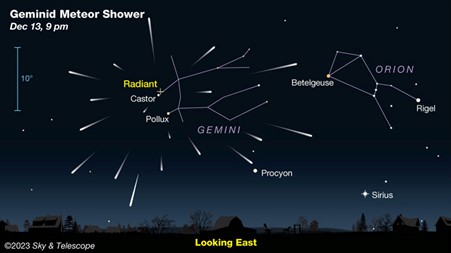
Cool facts about the hot rocks!
Did you know that Shooting stars are not stars at all? They’re little bits of space rock burning up in our atmosphere. For meteor showers they usually come from Comet trails, but the Geminids is special as their progenitor is not a Comet but an Asteroid, 3200 Phaethon, a big rock in space orbiting around us within the asteroid belt. Comet are big dirty snowballs that come from beyond Neptune in the Oort cloud.
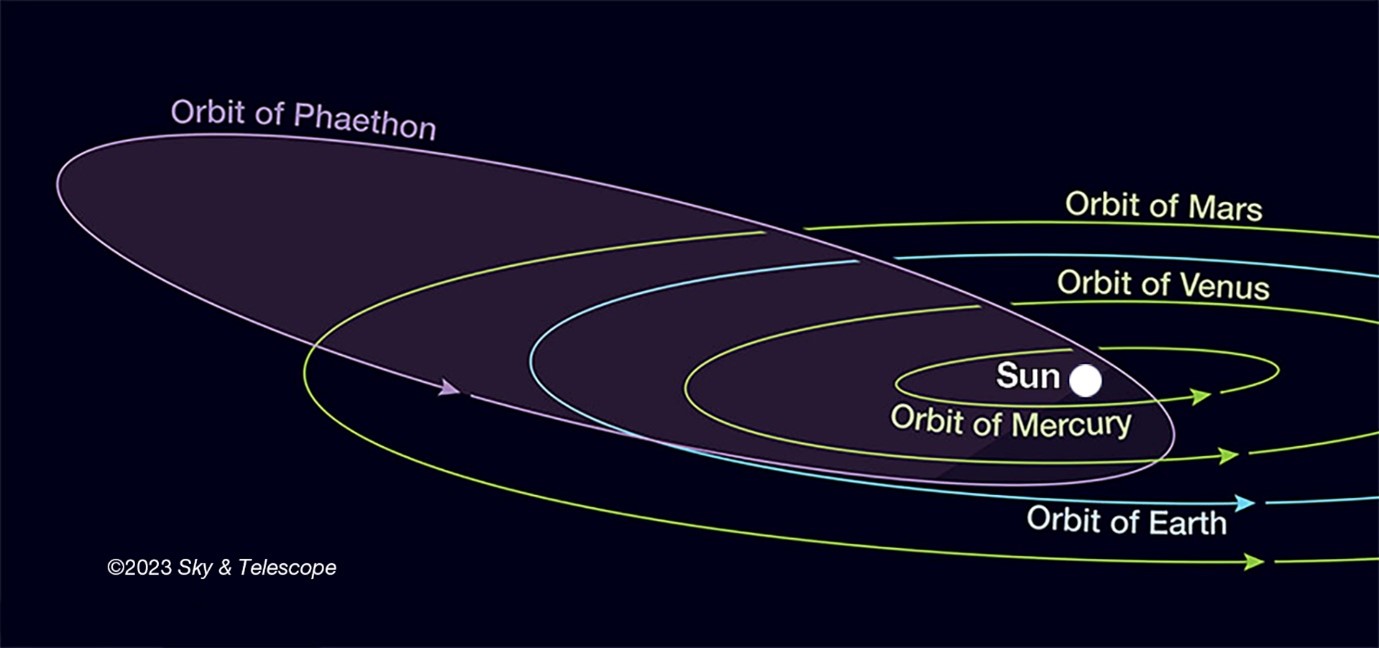
When and Where to Catch the Show
Hold your telescopes, folks! The best time to catch these shooting stars in action is during the darkest hours of the night, typically between midnight and dawn.
Pro tip: Find a cozy spot away from city lights, lay back, and let the cosmic magic unfold. Remember to dress warmly—space is cold, but your meteor shower-watching experience doesn't have to be! Can I recommend an astronomer’s best friend-a flask of Hot chocolate!
Make it a Stellar Party
Why not turn this celestial spectacle into a full-fledged stargazing party? Grab your friends, pack some cosmic snacks (think star-shaped cookies and galaxy popcorn, flying saucers?), and bring along your favourite stargazing playlist. Who knew space could be so delicious and melodic?
Shooting Star Wishes
As you marvel at the Geminids streaking across the night sky, don't forget to make a wish! According to ancient lore, catching a glimpse of a shooting star grants you the opportunity to make a wish. Whether it's for world peace, a pony, or just a good cup of coffee in the morning, let your imagination run wild. With up to 150 per hour you’re going to get more chances than a genie can offer that’s for sure!
Snap, Share, and Stargaze
In this digital age, why not capture the beauty of the Geminids and share it with the world? Take your best meteor shower snapshots and share them on social media and tag us! You might just inspire someone else to look up and appreciate the wonders of the cosmos. The best way to capture shooting stars is with time lapses or videos- they’re so fast, maybe only a split second, that trying to snap a shot your self is going to be hard.
So, there you have it, fellow stargazers! Get ready to witness the Geminids Meteor Shower—nature's way of wrapping up the year with a dazzling display of cosmic brilliance. Whether you're an avid astronomer or just someone who enjoys a good meteor shower, this celestial spectacle is sure to leave you starstruck. Happy meteor watching and may all your wishes come true under the twinkling tapestry of the Geminids! ?✨ My main wish is for it to be cloud free!
[checked_out] => 0 [checked_out_time] => 0000-00-00 00:00:00 [catid] => 34 [created] => 2023-12-14 12:41:47 [created_by] => 52030 [created_by_alias] => [modified] => 2024-02-14 15:45:25 [modified_by] => 21099 [modified_by_name] => Miss Heather Woodfine [publish_up] => 2023-12-14 12:44:58 [publish_down] => 0000-00-00 00:00:00 [images] => {"image_intro":"images\/G1.png","float_intro":"","image_intro_alt":"","image_intro_caption":"","image_fulltext":"images\/G1.png","float_fulltext":"","image_fulltext_alt":"","image_fulltext_caption":""} [urls] => {"urla":false,"urlatext":"","targeta":"","urlb":false,"urlbtext":"","targetb":"","urlc":false,"urlctext":"","targetc":""} [attribs] => {"show_title":"","link_titles":"","show_tags":"","show_intro":"","info_block_position":"","info_block_show_title":"","show_category":"","link_category":"","show_parent_category":"","link_parent_category":"","show_author":"","link_author":"","show_create_date":"","show_modify_date":"","show_publish_date":"","show_item_navigation":"","show_icons":"","show_print_icon":"","show_email_icon":"","show_vote":"","show_hits":"","show_noauth":"","urls_position":"","alternative_readmore":"","article_layout":"","show_publishing_options":"","show_article_options":"","show_urls_images_backend":"","show_urls_images_frontend":""} [metadata] => {"robots":"","author":"","rights":"","xreference":""} [metakey] => [metadesc] => [access] => 1 [hits] => 1645 [xreference] => [featured] => 0 [language] => * [readmore] => 3870 [state] => 1 [category_title] => Latest News [category_route] => uncategorised/latest-news [category_access] => 1 [category_alias] => latest-news [author] => Hannah Matterson [author_email] => hannah@kielderobservatory.org [parent_title] => ROOT [parent_id] => 1 [parent_route] => [parent_alias] => root [rating] => [rating_count] => [published] => 1 [parents_published] => 1 [alternative_readmore] => [layout] => [params] => Joomla\Registry\Registry Object ( [data:protected] => stdClass Object ( [article_layout] => _:default [show_title] => 1 [link_titles] => 0 [show_intro] => 1 [info_block_position] => 0 [info_block_show_title] => 0 [show_category] => 0 [link_category] => 0 [show_parent_category] => 0 [link_parent_category] => 0 [show_author] => 0 [link_author] => 0 [show_create_date] => 0 [show_modify_date] => 0 [show_publish_date] => 0 [show_item_navigation] => 0 [show_vote] => 0 [show_readmore] => 1 [show_readmore_title] => 0 [readmore_limit] => 100 [show_tags] => 0 [show_icons] => 0 [show_print_icon] => 0 [show_email_icon] => 0 [show_hits] => 0 [show_noauth] => 0 [urls_position] => 0 [show_publishing_options] => 1 [show_article_options] => 1 [save_history] => 1 [history_limit] => 10 [show_urls_images_frontend] => 0 [show_urls_images_backend] => 1 [targeta] => 0 [targetb] => 0 [targetc] => 0 [float_intro] => right [float_fulltext] => none [category_layout] => _:blog [show_category_heading_title_text] => 1 [show_category_title] => 0 [show_description] => 1 [show_description_image] => 0 [maxLevel] => 1 [show_empty_categories] => 0 [show_no_articles] => 1 [show_subcat_desc] => 1 [show_cat_num_articles] => 0 [show_cat_tags] => 1 [show_base_description] => 1 [maxLevelcat] => -1 [show_empty_categories_cat] => 0 [show_subcat_desc_cat] => 1 [show_cat_num_articles_cat] => 1 [num_leading_articles] => 0 [num_intro_articles] => 27 [num_columns] => 1 [num_links] => 4 [multi_column_order] => 0 [show_subcategory_content] => 0 [show_pagination_limit] => 1 [filter_field] => hide [show_headings] => 1 [list_show_date] => 0 [date_format] => [list_show_hits] => 1 [list_show_author] => 1 [orderby_pri] => order [orderby_sec] => rdate [order_date] => published [show_pagination] => 1 [show_pagination_results] => 1 [show_featured] => show [show_feed_link] => 1 [feed_summary] => 0 [feed_show_readmore] => 0 [show_page_heading] => 0 [layout_type] => blog [menu_text] => 1 [menu_show] => 0 [secure] => 0 [page_title] => Latest News [page_description] => Kielder Observatory Astronomical Society [page_rights] => [robots] => [access-view] => 1 ) [separator] => . ) [displayDate] => 2023-12-14 12:41:47 [slug] => 332:dazzling-december-delight-let-s-talk-geminids-meteor-shower [parent_slug] => [catslug] => 34:latest-news [event] => stdClass Object ( [afterDisplayTitle] => [beforeDisplayContent] => [afterDisplayContent] => ) [text] =>Hey starry-eyed readers! It's that time of the year again when the heavens put on a celestial show just for us. It’s the Geminids Meteor Shower! This annual extravaganza is a cosmic party you don't want to miss.
)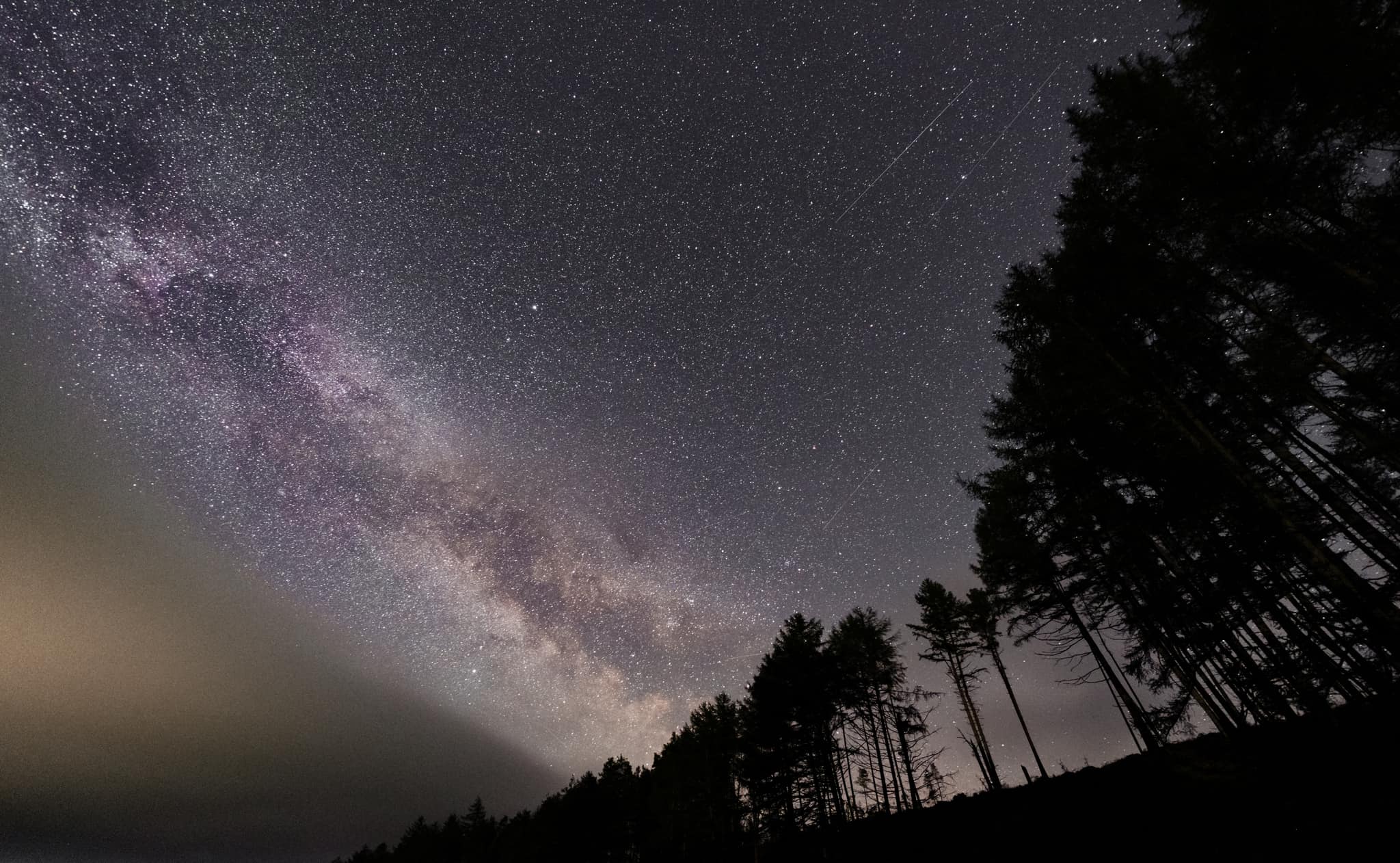
New film celebrates dark sky park’s 10th anniversary
ONE of the region’s beloved tourist attractions featuring the most ‘pristine dark skies’ in England is celebrating its 10th anniversary.
Read Time
4 minutes
ONE of the region’s beloved tourist attractions featuring the most ‘pristine dark skies’ in England is celebrating its 10th anniversary.
[fulltext] =>
A major swathe of rural Northumberland was given dark skies status on December 9, 2013 by the International Dark Sky Association, which is committed to tackling light pollution.
Since then, The Northumberland International Dark Sky Park, which covers Northumberland National Park and most of Kielder Water and Forest Park, has brought wonder to thousands of visitors through dark sky experiences and £25m per year into the local economy.
To commemorate its 10th anniversary, the Northumberland International Dark Sky Partnership, which comprises tourist and parks partners, commissioned a film which talks about the importance of the dark skies and what needs to be done to protect them for the future.
Tony Gates, Chief Executive of Northumberland National Park Authority, said:
“The 10th anniversary of Northumberland International Dark Sky Park is a time to celebrate the designation but also the many guardians who have overseen the conservation of our majestic dark skies since 2013.
“Northumberland International Dark Sky Park has been a game-changer in terms of the impact it has had on Northumberland’s visitor economy, resulting in the development of new observatories, dark sky experiences and a longer visitor season in the county.
“As we look forward to the future of Northumberland International Dark Sky Park with our partners, we are committed to furthering our conservation efforts, not only in the National Park but hopefully by inspiring others, from organisations and businesses to people at home, encouraging everyone to adopt dark sky friendly lighting.
“We want people of all ages and abilities to have the opportunity to experience the health and wellbeing benefits that dark skies offer, and for nature and wildlife which rely on the dark to thrive.”

The park was deemed to have the most ‘pristine dark skies’ in England according to the CPRE (Campaign to Protect Rural England) in its Night Blight Report. On a clear night, thousands of stars can be seen, the Milky Way and even the Andromeda Galaxy (2.5 million light years away, with the naked eye.
Hannah Matterson, Operations and Marketing Director at Kielder Observatory, said: “We’ve been fortunate to welcome thousands of visitors over the years who have come to enjoy all this natural beauty. We’ll be working with our partners to continue to protect our dark skies so that future generations can star gaze and more in future.”
As part of the anniversary celebrations, Northumberland National Park is looking forward to celebrating the anniversary with the hosting of artist Bethan Maddock’s Noctalgia: Dark Skies Matter exhibition at The Sill: National Landscape Discovery Centre from December 9 to March 2024. Visitors can find more information here: https://bit.ly/3Rn3rls
The film, which can be seen here, Dark Skies 10 • Northumberland National Park, was funded by Northumberland National Park, Kielder Forest and Water Park Trust, Northumberland Area of Outstanding Natural Beauty and Kielder Observatory.
People are also being asked to recall their fondest memories of the park and what its meant to them over the last 10 years by using the hashtag DARKSKIES10 on social media.
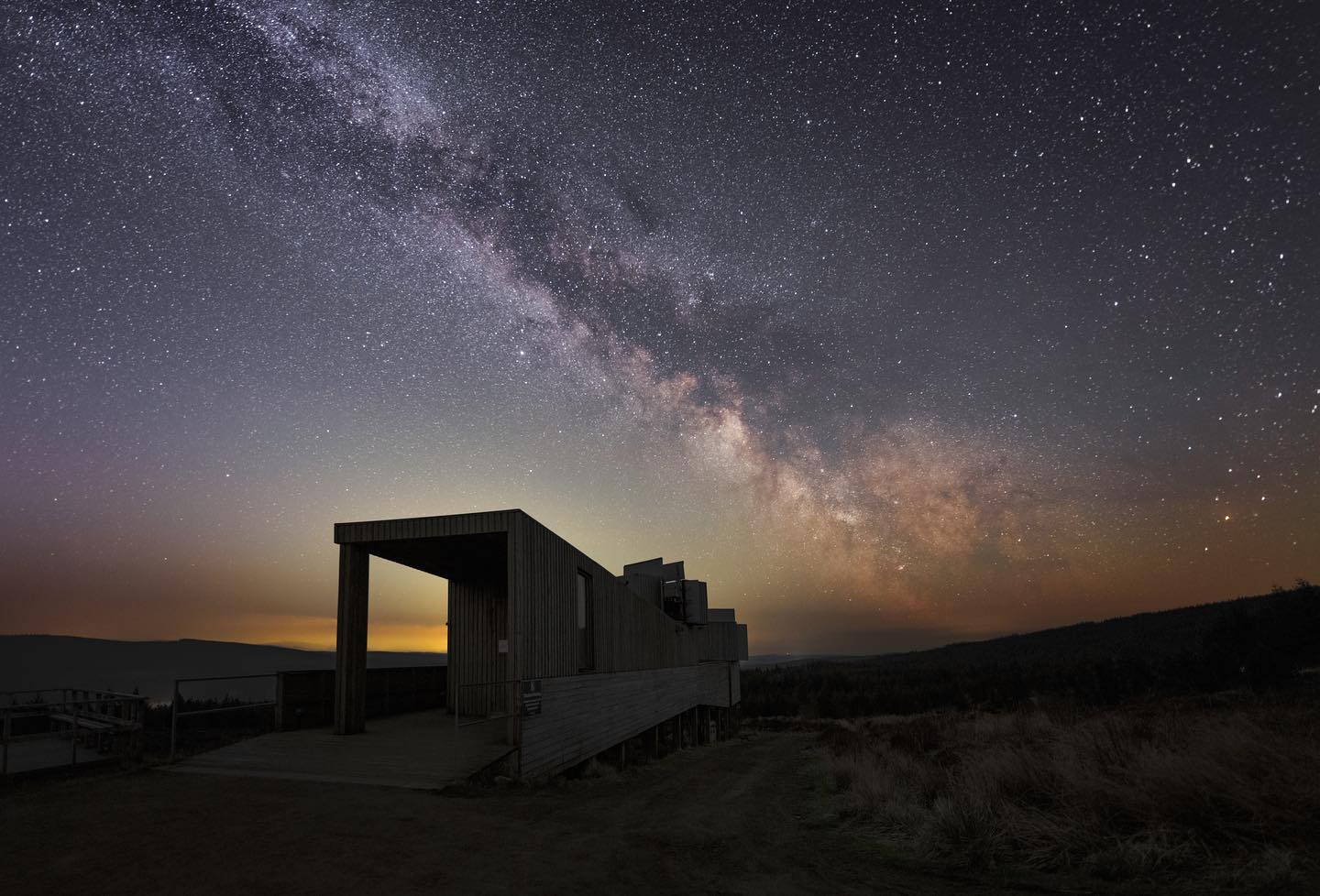
Here are some more Northumberland International Dark Sky Park facts:
1. The park covers 1400 km2
2. Following the building of Kielder Observatory in 2008, three more public observatories opened - Battlesteads Observatory, Stonehaugh Observatory and Twice Brewed Stargazing
3. More than 40 self-catering and accommodation providers are now accredited as ‘Dark Sky Friendly’ offering exceptional visitor experiences from their own venues. The accreditation system has been copied and emulated elsewhere across the UK since.
4. Hundreds of local businesses have attended ‘Star Tips for Profit’ training workshops, making them aware of the business potential to develop astro-tourism and to help conserve our dark skies with appropriate outside lighting.
5. In 2018, an Economic Impact Assessment was commissioned by the Dark Sky Steering Group to calculate the economic value of ‘astro’ or ‘dark sky’ tourism, which said it was valued at £25 million to the local visitor economy per year, supporting around 450 jobs
6. Northumberland IDSP is regarded as a global leader in the development of dark sky tourism, with recent invites to Mayo and Outer Hebrides to share our experience with other destinations.
7. NPA is focusing its events programme more on celebrating the value of our dark sky environment on nature recovery and our sense of health and wellbeing, as well as for stargazing
[checked_out] => 0 [checked_out_time] => 0000-00-00 00:00:00 [catid] => 34 [created] => 2023-12-07 13:53:00 [created_by] => 52030 [created_by_alias] => [modified] => 2024-02-14 15:45:25 [modified_by] => 21099 [modified_by_name] => Miss Heather Woodfine [publish_up] => 2023-12-07 13:53:00 [publish_down] => 0000-00-00 00:00:00 [images] => {"image_intro":"images\/KF-milkyway-2023.jpg","float_intro":"","image_intro_alt":"","image_intro_caption":"","image_fulltext":"images\/KF-milkyway-2023.jpg","float_fulltext":"","image_fulltext_alt":"","image_fulltext_caption":""} [urls] => {"urla":false,"urlatext":"","targeta":"","urlb":false,"urlbtext":"","targetb":"","urlc":false,"urlctext":"","targetc":""} [attribs] => {"show_title":"","link_titles":"","show_tags":"","show_intro":"","info_block_position":"","info_block_show_title":"","show_category":"","link_category":"","show_parent_category":"","link_parent_category":"","show_author":"","link_author":"","show_create_date":"","show_modify_date":"","show_publish_date":"","show_item_navigation":"","show_icons":"","show_print_icon":"","show_email_icon":"","show_vote":"","show_hits":"","show_noauth":"","urls_position":"","alternative_readmore":"","article_layout":"","show_publishing_options":"","show_article_options":"","show_urls_images_backend":"","show_urls_images_frontend":""} [metadata] => {"robots":"","author":"","rights":"","xreference":""} [metakey] => [metadesc] => [access] => 1 [hits] => 1626 [xreference] => [featured] => 0 [language] => * [readmore] => 6501 [state] => 1 [category_title] => Latest News [category_route] => uncategorised/latest-news [category_access] => 1 [category_alias] => latest-news [author] => Hannah Matterson [author_email] => hannah@kielderobservatory.org [parent_title] => ROOT [parent_id] => 1 [parent_route] => [parent_alias] => root [rating] => [rating_count] => [published] => 1 [parents_published] => 1 [alternative_readmore] => [layout] => [params] => Joomla\Registry\Registry Object ( [data:protected] => stdClass Object ( [article_layout] => _:default [show_title] => 1 [link_titles] => 0 [show_intro] => 1 [info_block_position] => 0 [info_block_show_title] => 0 [show_category] => 0 [link_category] => 0 [show_parent_category] => 0 [link_parent_category] => 0 [show_author] => 0 [link_author] => 0 [show_create_date] => 0 [show_modify_date] => 0 [show_publish_date] => 0 [show_item_navigation] => 0 [show_vote] => 0 [show_readmore] => 1 [show_readmore_title] => 0 [readmore_limit] => 100 [show_tags] => 0 [show_icons] => 0 [show_print_icon] => 0 [show_email_icon] => 0 [show_hits] => 0 [show_noauth] => 0 [urls_position] => 0 [show_publishing_options] => 1 [show_article_options] => 1 [save_history] => 1 [history_limit] => 10 [show_urls_images_frontend] => 0 [show_urls_images_backend] => 1 [targeta] => 0 [targetb] => 0 [targetc] => 0 [float_intro] => right [float_fulltext] => none [category_layout] => _:blog [show_category_heading_title_text] => 1 [show_category_title] => 0 [show_description] => 1 [show_description_image] => 0 [maxLevel] => 1 [show_empty_categories] => 0 [show_no_articles] => 1 [show_subcat_desc] => 1 [show_cat_num_articles] => 0 [show_cat_tags] => 1 [show_base_description] => 1 [maxLevelcat] => -1 [show_empty_categories_cat] => 0 [show_subcat_desc_cat] => 1 [show_cat_num_articles_cat] => 1 [num_leading_articles] => 0 [num_intro_articles] => 27 [num_columns] => 1 [num_links] => 4 [multi_column_order] => 0 [show_subcategory_content] => 0 [show_pagination_limit] => 1 [filter_field] => hide [show_headings] => 1 [list_show_date] => 0 [date_format] => [list_show_hits] => 1 [list_show_author] => 1 [orderby_pri] => order [orderby_sec] => rdate [order_date] => published [show_pagination] => 1 [show_pagination_results] => 1 [show_featured] => show [show_feed_link] => 1 [feed_summary] => 0 [feed_show_readmore] => 0 [show_page_heading] => 0 [layout_type] => blog [menu_text] => 1 [menu_show] => 0 [secure] => 0 [page_title] => Latest News [page_description] => Kielder Observatory Astronomical Society [page_rights] => [robots] => [access-view] => 1 ) [separator] => . ) [displayDate] => 2023-12-07 13:53:00 [slug] => 331:new-film-celebrates-dark-sky-park-s-10th-anniversary [parent_slug] => [catslug] => 34:latest-news [event] => stdClass Object ( [afterDisplayTitle] => [beforeDisplayContent] => [afterDisplayContent] => ) [text] =>ONE of the region’s beloved tourist attractions featuring the most ‘pristine dark skies’ in England is celebrating its 10th anniversary.
)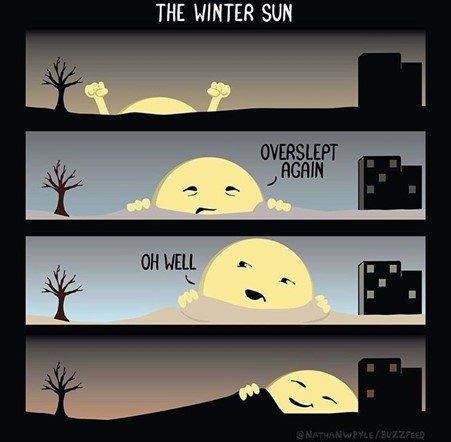
What's Up? December 2023
It's the darkest month of the year, so let's hear from Ishbel about what you can expect from the dark skies this December
Read Time
5 minutes
It's the darkest month of the year, so let's hear from Ishbel about what you can expect from the dark skies this December
[fulltext] =>What’s up December 2023
It’s the darkest month of the year! This month the Sun only rises at 8:06 (from the latitude of Newcastle) and sets by 15:43 on December 1st, but by the end of the month its 8:31 and 15:47, so as you can see from the times the sun is beginning to set later, if only by 4 minutes. It is rising later too but for the last week in December so are most of us as well! So, let’s see what we’ve got in store this month.
Winter Solstice:
Friday 22nd December 2023 marks the shortest day of the year and the first day of Winter- yes that's right folks. Winter doesn't start until 22nd December. Though I think we can agree it's quite wintery already and I am writing to you from November. On the Winter Solstice the Sun is barely up before it goes back to sleep again. It rises at 8:29 and gets to 12 degrees above the northern horizon at 12:04 before setting at 15:40. Only 7 hours and 10 minutes of daylight, which is a whopping 10 hours 12 minutes shorter than the summer solstice.

Meteor showers:
Geminid’s peak 15th-16th December:
Gemini, the constellation from which this shower emanates from, crosses the horizon by 17:30 so you don’t even have to stay up late for this one! Pack a lot of blankets and an astronomer’s best friend: a flask of hot chocolate! This shower is one of the better one, with an average of 100+ meteors per hour. Fun fact about this shower is it does not emanate from a comet like other meteor showers (See our previous What’s up posts for more on that!) but instead this shower is caused by an Asteroid, called 3200 Patheon. Asteroids are remnants of rock from the formation of the inner solar system that missed getting picked to be a part of Planet, and orbit the Sun in a fairly circular regular orbit, in 3200 Patheon’s case 1.4 years to orbit the Sun. This is opposed to Comets which originate from the outer reaches of the Solar system and can take hundreds of years to complete their very elliptical orbits of the solar system.

Figure 1. Diagram of the Radiant point of the Geminids in the pre-midnight sky. Gemini sits to the left of Orion, the easiest constellation to spot in that region of the sky.
Constellations:
Let’s have a focus on Tauris, the Bull who graces our skies for much of the night over the month and is home to not 1 but 2 stellar clusters, both very visible and accentuated by the fact they line up nicely with Jupiter as well right now.
The Hyades and the Pleiades, both situated in the constellation Taurus, offer intriguing celestial insights. The Hyades, the nearest open cluster at approximately 153 light-years from Earth, forms a roughly spherical group of stars sharing common age, origin, chemical characteristics, and motion through space. Its brightest stars create a distinctive "V" shape, aligning with the nearby but unrelated Aldebaran, which is situated about 65 light-years away. The V shape makes up the face of the Bull. On the other hand, the Pleiades, located about 444 light-years away, is a prominent open star cluster consisting of hot, younger stars born from the same cosmic cloud of gas and dust. The Pleiades showcase not only a shared birthplace but also similar motion through space, adding to their allure in the Taurus constellation. Their position and extra luminous glow grant them the nickname “heart of the Bull”. These clusters contribute significantly to our understanding of stellar evolution and the dynamics of cosmic structures in the universe, and they are just so pretty to look at.

Figure 2: The night sky facing southeast mid-December with highlighted Stellar cluster.
Planets:
With it being so dark in the mornings now Venus is a sure spot in the morning Eastern sky, given the nickname the morning star as since it is the brightest object in the sky (Bar eventually the rising Sun). However, it is not a star but the planet Venus you are spotting.
Jupiter is in prime position throughout the night over the course of the Month as show in the previous picture. Saturn is about a wide hand spread preceding it going towards the west but get out early in the month to see it as it will be getting and further west earlier and earlier until it is engulfed by the daylight and the horizon.
Neptune sits midway between Saturn and Jupiter, and Uranus sits between Jupiter and the Pleiades, but you need binoculars or a telescope to spot those little blue dots.
Moon Phases:
5th: Half Moon
12th: New Moon
19th: Half Moon
27th: Full Moon
Clears Skies and Happy Stargazing!
[checked_out] => 0 [checked_out_time] => 0000-00-00 00:00:00 [catid] => 34 [created] => 2023-11-20 11:11:23 [created_by] => 52030 [created_by_alias] => [modified] => 2024-02-14 15:45:25 [modified_by] => 21099 [modified_by_name] => Miss Heather Woodfine [publish_up] => 2023-11-20 11:18:18 [publish_down] => 0000-00-00 00:00:00 [images] => {"image_intro":"images\/Winter-sun.jpg","float_intro":"","image_intro_alt":"","image_intro_caption":"","image_fulltext":"","float_fulltext":"","image_fulltext_alt":"","image_fulltext_caption":""} [urls] => {"urla":false,"urlatext":"","targeta":"","urlb":false,"urlbtext":"","targetb":"","urlc":false,"urlctext":"","targetc":""} [attribs] => {"show_title":"0","link_titles":"","show_tags":"","show_intro":"0","info_block_position":"","info_block_show_title":"","show_category":"","link_category":"","show_parent_category":"","link_parent_category":"","show_author":"","link_author":"","show_create_date":"","show_modify_date":"","show_publish_date":"","show_item_navigation":"","show_icons":"","show_print_icon":"","show_email_icon":"","show_vote":"","show_hits":"","show_noauth":"","urls_position":"","alternative_readmore":"","article_layout":"","show_publishing_options":"","show_article_options":"","show_urls_images_backend":"","show_urls_images_frontend":""} [metadata] => {"robots":"","author":"","rights":"","xreference":""} [metakey] => [metadesc] => [access] => 1 [hits] => 1780 [xreference] => [featured] => 0 [language] => * [readmore] => 6148 [state] => 1 [category_title] => Latest News [category_route] => uncategorised/latest-news [category_access] => 1 [category_alias] => latest-news [author] => Hannah Matterson [author_email] => hannah@kielderobservatory.org [parent_title] => ROOT [parent_id] => 1 [parent_route] => [parent_alias] => root [rating] => [rating_count] => [published] => 1 [parents_published] => 1 [alternative_readmore] => [layout] => [params] => Joomla\Registry\Registry Object ( [data:protected] => stdClass Object ( [article_layout] => _:default [show_title] => 1 [link_titles] => 0 [show_intro] => 1 [info_block_position] => 0 [info_block_show_title] => 0 [show_category] => 0 [link_category] => 0 [show_parent_category] => 0 [link_parent_category] => 0 [show_author] => 0 [link_author] => 0 [show_create_date] => 0 [show_modify_date] => 0 [show_publish_date] => 0 [show_item_navigation] => 0 [show_vote] => 0 [show_readmore] => 1 [show_readmore_title] => 0 [readmore_limit] => 100 [show_tags] => 0 [show_icons] => 0 [show_print_icon] => 0 [show_email_icon] => 0 [show_hits] => 0 [show_noauth] => 0 [urls_position] => 0 [show_publishing_options] => 1 [show_article_options] => 1 [save_history] => 1 [history_limit] => 10 [show_urls_images_frontend] => 0 [show_urls_images_backend] => 1 [targeta] => 0 [targetb] => 0 [targetc] => 0 [float_intro] => right [float_fulltext] => none [category_layout] => _:blog [show_category_heading_title_text] => 1 [show_category_title] => 0 [show_description] => 1 [show_description_image] => 0 [maxLevel] => 1 [show_empty_categories] => 0 [show_no_articles] => 1 [show_subcat_desc] => 1 [show_cat_num_articles] => 0 [show_cat_tags] => 1 [show_base_description] => 1 [maxLevelcat] => -1 [show_empty_categories_cat] => 0 [show_subcat_desc_cat] => 1 [show_cat_num_articles_cat] => 1 [num_leading_articles] => 0 [num_intro_articles] => 27 [num_columns] => 1 [num_links] => 4 [multi_column_order] => 0 [show_subcategory_content] => 0 [show_pagination_limit] => 1 [filter_field] => hide [show_headings] => 1 [list_show_date] => 0 [date_format] => [list_show_hits] => 1 [list_show_author] => 1 [orderby_pri] => order [orderby_sec] => rdate [order_date] => published [show_pagination] => 1 [show_pagination_results] => 1 [show_featured] => show [show_feed_link] => 1 [feed_summary] => 0 [feed_show_readmore] => 0 [show_page_heading] => 0 [layout_type] => blog [menu_text] => 1 [menu_show] => 0 [secure] => 0 [page_title] => Latest News [page_description] => Kielder Observatory Astronomical Society [page_rights] => [robots] => [access-view] => 1 ) [separator] => . ) [displayDate] => 2023-11-20 11:11:23 [slug] => 328:what-s-up-december-2023 [parent_slug] => [catslug] => 34:latest-news [event] => stdClass Object ( [afterDisplayTitle] => [beforeDisplayContent] => [afterDisplayContent] => ) [text] =>It's the darkest month of the year, so let's hear from Ishbel about what you can expect from the dark skies this December
)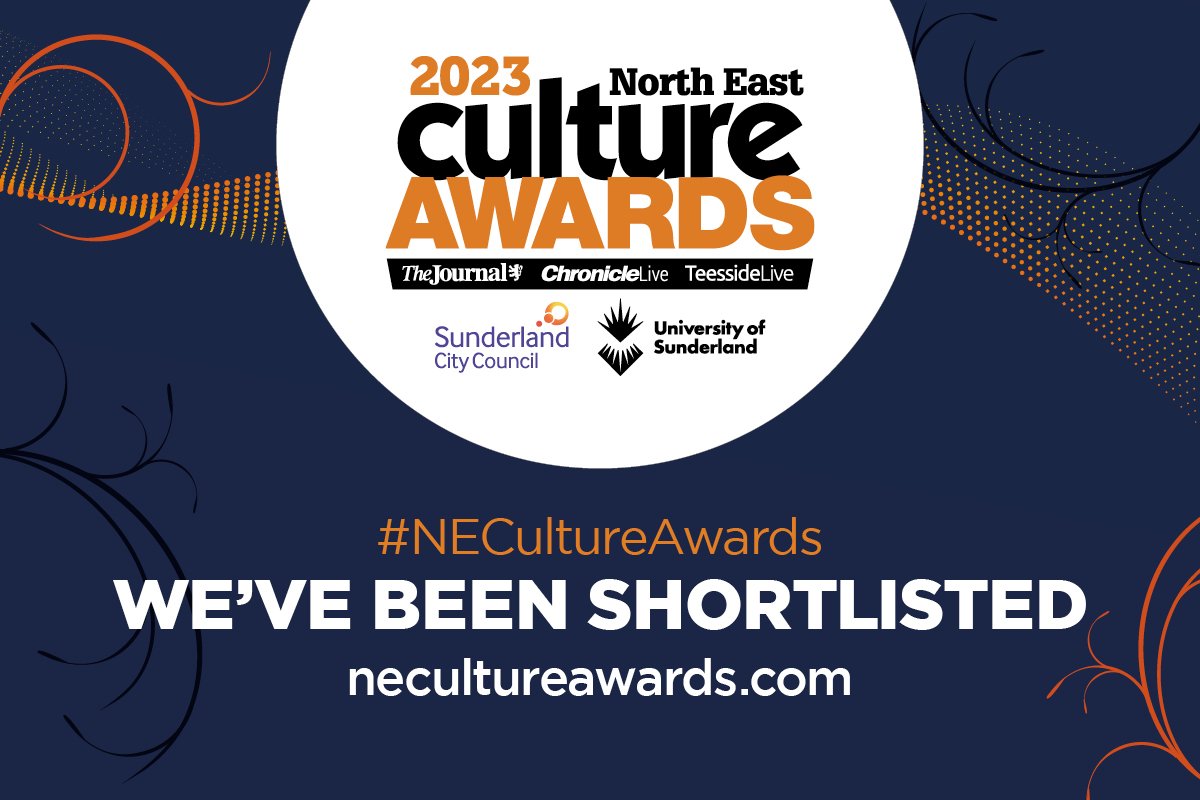
North East Culture Awards announces shortlist
Kielder Observatory’s partnership project with Novus at HIMP Northumberland nominated for top culture award!
Read Time
2 minutes
Kielder Observatory’s partnership project with Novus at HIMP Northumberland nominated for top culture award!
[fulltext] =>
We’re delighted to announce that our Look Up project with Novus at HMP Northumberland has been shortlisted for a North East Culture Award!
Funded by The Joicey Trust, Look Up saw astronomers from Kielder Observatory delivering astronomy sessions and cell-based learning resources for residents at HMP Northumberland who then worked with award-winning writer, Bridget Hamilton, to explore creative writing using astronomy as inspiration. The learners created a zine of their work, which can be viewed on our website or picked up at the observatory.
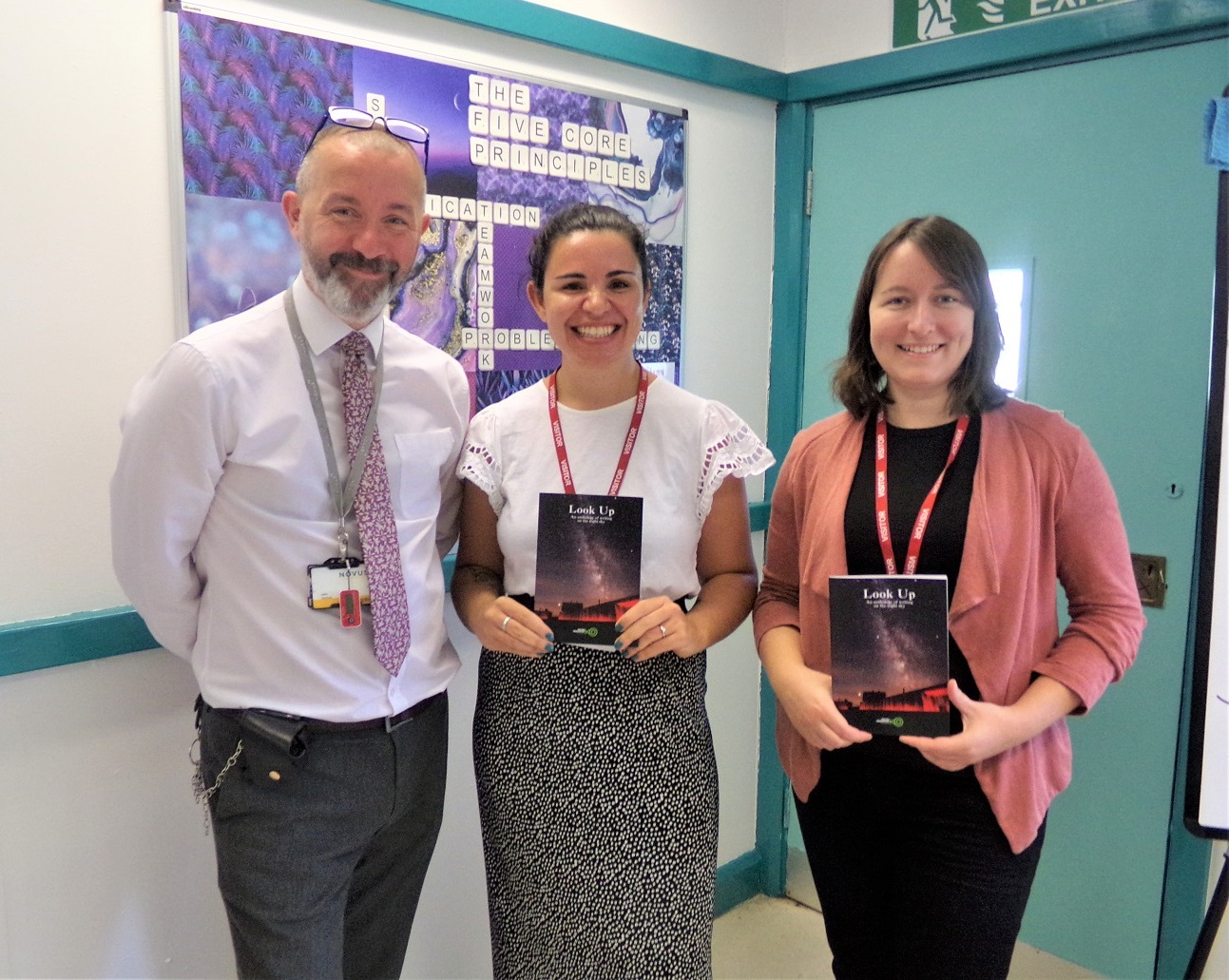
There were over 400 nominations for this year’s awards across 11 categories, demonstrating the high calibre of creative activity across the North East. Look Up has been shortlisted in the Best Arts and Business Partnership Award.
Kielder Observatory Arts Lead, Heather Woodfine said:
“Our mission is to bring the inspiration of the cosmos and night sky to everyone and this was a great new project for us – combining our usual talks on astronomy with the creative conduit of poetry, to bring the universe down to a personal level. The learners of HMP Northumberland created some sincere, expressive poems that have been collected into a terrific anthology. The project involved the work of many people from different institutions coming together to start something new, so it’s great this is being recognised.”
You can view a full list of nominee here: Finalists for the North East Culture Awards 2023 revealed - Chronicle Live
Wish us luck!
[checked_out] => 0 [checked_out_time] => 0000-00-00 00:00:00 [catid] => 34 [created] => 2023-11-20 10:58:08 [created_by] => 52030 [created_by_alias] => [modified] => 2024-02-14 15:45:21 [modified_by] => 21099 [modified_by_name] => Miss Heather Woodfine [publish_up] => 2023-11-20 10:59:53 [publish_down] => 0000-00-00 00:00:00 [images] => {"image_intro":"images\/Weve-Been-Shortlisted-Graphic.jpg","float_intro":"","image_intro_alt":"","image_intro_caption":"","image_fulltext":"images\/Weve-Been-Shortlisted-Graphic.jpg","float_fulltext":"","image_fulltext_alt":"","image_fulltext_caption":""} [urls] => {"urla":false,"urlatext":"","targeta":"","urlb":false,"urlbtext":"","targetb":"","urlc":false,"urlctext":"","targetc":""} [attribs] => {"show_title":"","link_titles":"","show_tags":"","show_intro":"","info_block_position":"","info_block_show_title":"","show_category":"","link_category":"","show_parent_category":"","link_parent_category":"","show_author":"","link_author":"","show_create_date":"","show_modify_date":"","show_publish_date":"","show_item_navigation":"","show_icons":"","show_print_icon":"","show_email_icon":"","show_vote":"","show_hits":"","show_noauth":"","urls_position":"","alternative_readmore":"","article_layout":"","show_publishing_options":"","show_article_options":"","show_urls_images_backend":"","show_urls_images_frontend":""} [metadata] => {"robots":"","author":"","rights":"","xreference":""} [metakey] => [metadesc] => [access] => 1 [hits] => 879 [xreference] => [featured] => 0 [language] => * [readmore] => 2061 [state] => 1 [category_title] => Latest News [category_route] => uncategorised/latest-news [category_access] => 1 [category_alias] => latest-news [author] => Hannah Matterson [author_email] => hannah@kielderobservatory.org [parent_title] => ROOT [parent_id] => 1 [parent_route] => [parent_alias] => root [rating] => [rating_count] => [published] => 1 [parents_published] => 1 [alternative_readmore] => [layout] => [params] => Joomla\Registry\Registry Object ( [data:protected] => stdClass Object ( [article_layout] => _:default [show_title] => 1 [link_titles] => 0 [show_intro] => 1 [info_block_position] => 0 [info_block_show_title] => 0 [show_category] => 0 [link_category] => 0 [show_parent_category] => 0 [link_parent_category] => 0 [show_author] => 0 [link_author] => 0 [show_create_date] => 0 [show_modify_date] => 0 [show_publish_date] => 0 [show_item_navigation] => 0 [show_vote] => 0 [show_readmore] => 1 [show_readmore_title] => 0 [readmore_limit] => 100 [show_tags] => 0 [show_icons] => 0 [show_print_icon] => 0 [show_email_icon] => 0 [show_hits] => 0 [show_noauth] => 0 [urls_position] => 0 [show_publishing_options] => 1 [show_article_options] => 1 [save_history] => 1 [history_limit] => 10 [show_urls_images_frontend] => 0 [show_urls_images_backend] => 1 [targeta] => 0 [targetb] => 0 [targetc] => 0 [float_intro] => right [float_fulltext] => none [category_layout] => _:blog [show_category_heading_title_text] => 1 [show_category_title] => 0 [show_description] => 1 [show_description_image] => 0 [maxLevel] => 1 [show_empty_categories] => 0 [show_no_articles] => 1 [show_subcat_desc] => 1 [show_cat_num_articles] => 0 [show_cat_tags] => 1 [show_base_description] => 1 [maxLevelcat] => -1 [show_empty_categories_cat] => 0 [show_subcat_desc_cat] => 1 [show_cat_num_articles_cat] => 1 [num_leading_articles] => 0 [num_intro_articles] => 27 [num_columns] => 1 [num_links] => 4 [multi_column_order] => 0 [show_subcategory_content] => 0 [show_pagination_limit] => 1 [filter_field] => hide [show_headings] => 1 [list_show_date] => 0 [date_format] => [list_show_hits] => 1 [list_show_author] => 1 [orderby_pri] => order [orderby_sec] => rdate [order_date] => published [show_pagination] => 1 [show_pagination_results] => 1 [show_featured] => show [show_feed_link] => 1 [feed_summary] => 0 [feed_show_readmore] => 0 [show_page_heading] => 0 [layout_type] => blog [menu_text] => 1 [menu_show] => 0 [secure] => 0 [page_title] => Latest News [page_description] => Kielder Observatory Astronomical Society [page_rights] => [robots] => [access-view] => 1 ) [separator] => . ) [displayDate] => 2023-11-20 10:58:08 [slug] => 327:north-east-culture-awards-announces-shortlist [parent_slug] => [catslug] => 34:latest-news [event] => stdClass Object ( [afterDisplayTitle] => [beforeDisplayContent] => [afterDisplayContent] => ) [text] =>Kielder Observatory’s partnership project with Novus at HIMP Northumberland nominated for top culture award!
)